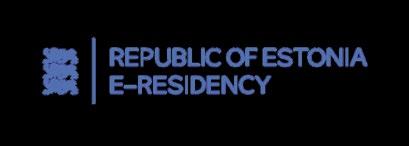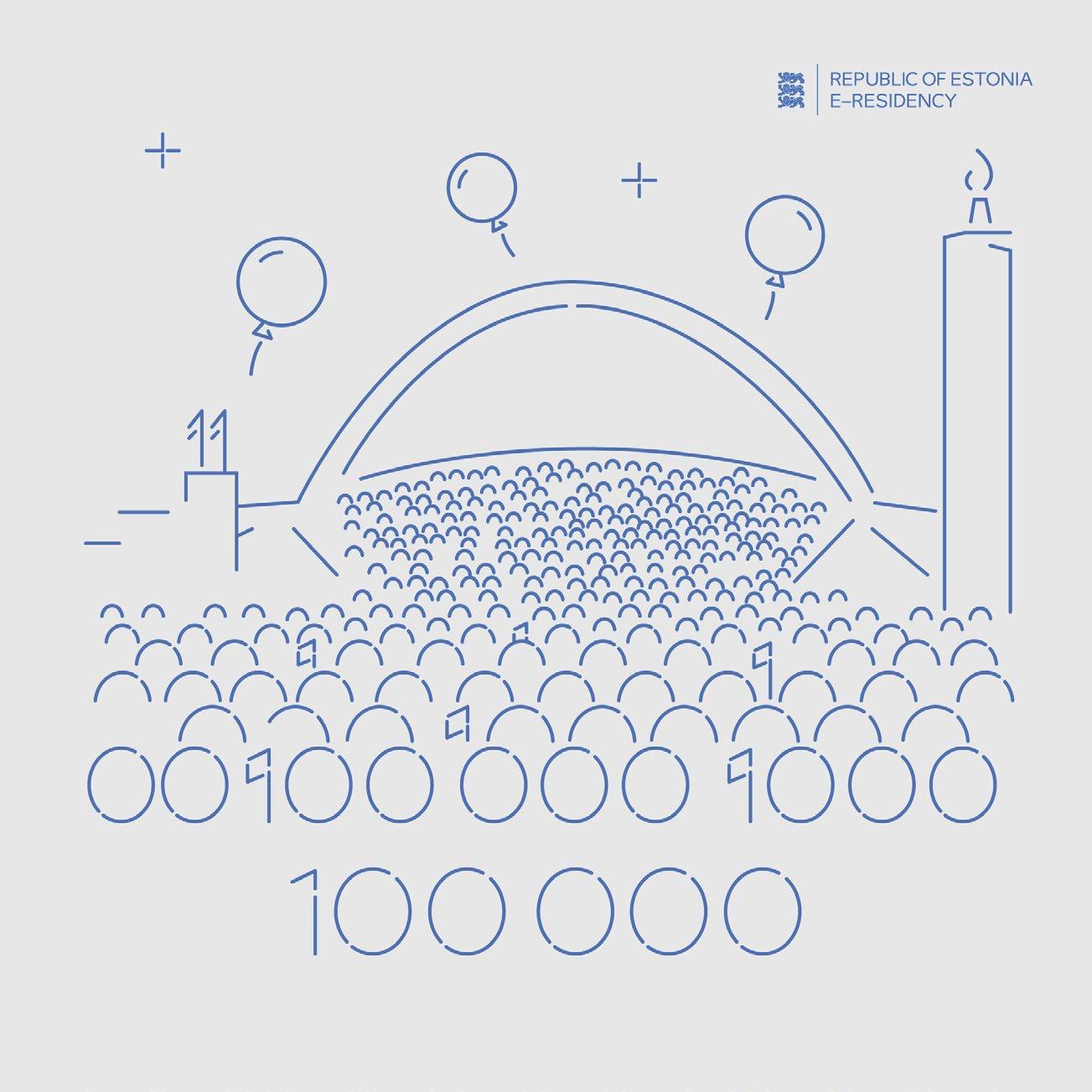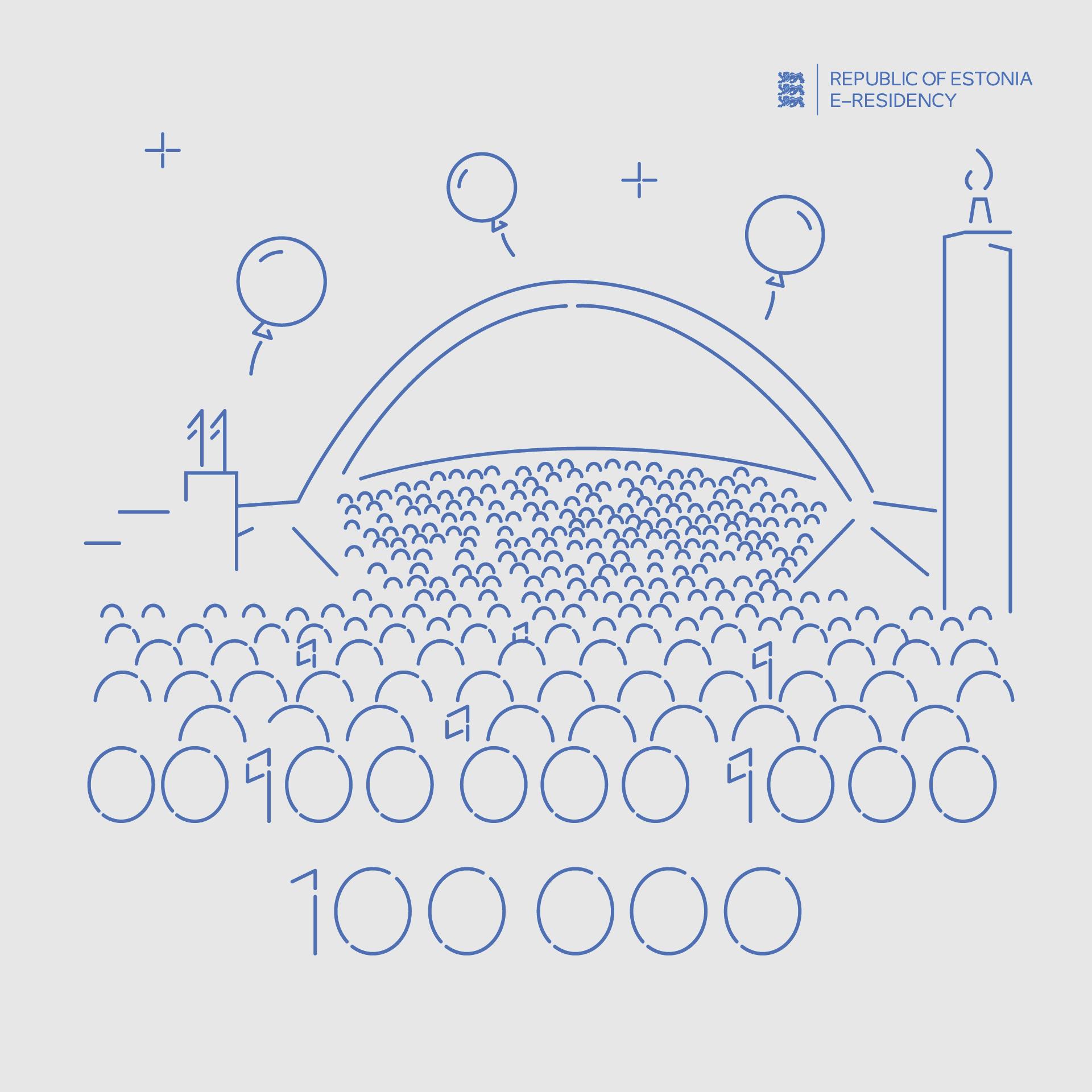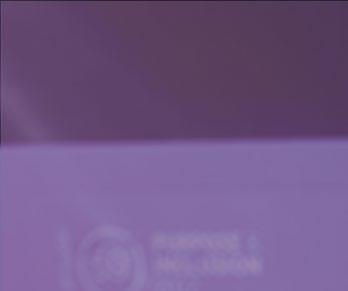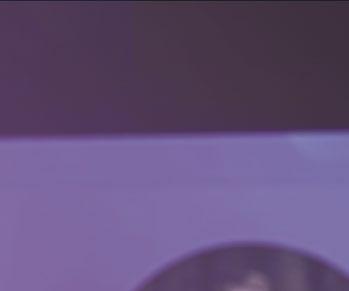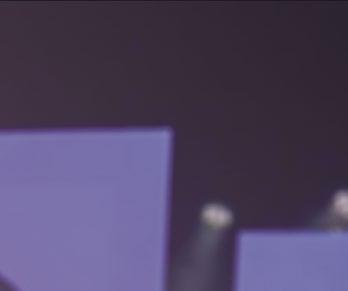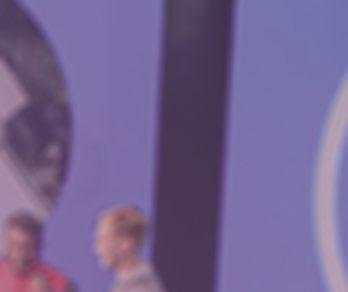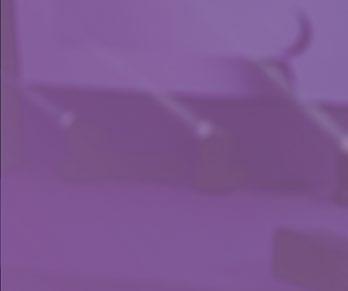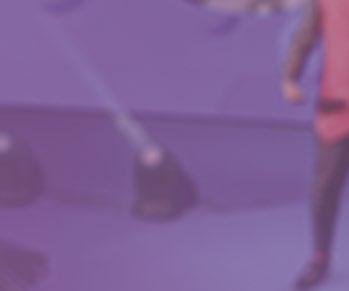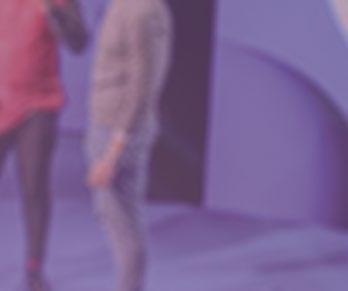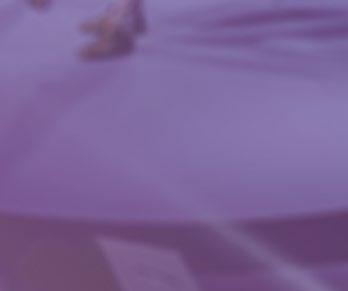Estonia: a magnet for foreign investments
AI to the rescue
Future of healthcare is digital and personalised
Going plant-based Viljandi Folk 30
Edith Karlson: drama in your head
Female founders speak up and step up

Estonia

Estonia: a magnet for foreign investments
AI to the rescue
Future of healthcare is digital and personalised
Going plant-based Viljandi Folk 30
Edith Karlson: drama in your head

Estonia
City Nation Place Awards 2022
 Photo by Renee Altrov
Photo by Renee Altrov
Executive publisher
Positive Projects
Pärnu mnt 69, 10134 Tallinn, Estonia
lifeinestonia@positive.ee
Editor Reet Grosberg reetgrosberg@positive.ee
Language editor
Daniel Warren
Design & layout
Positive Design
Printall
The world’s population is ageing. And we sleep less, we move less, we eat and drink more, we have more stress. All these by-products of modern society have led to rapid shift of the healthcare costs from treating injures and infectious diseases to treating largely avoidable lifestyle-related diseases. By now, 75-80% of healthcare costs around the world are related to non-communicable (lifestyle-related) diseases.
According to the recent research, only 10% of the health outcomes of non-communicable diseases are determined by doctors and nurses. This means that 90% of the lifestyle-disease health is generated before or after the acute treatment episode by our genetics and by everyday decisions we make on our sleeping, eating, training and resting patterns.
Thanks to the technological progress, ‘health and care’ is moving into our home, work, and recreation. Don’t get me wrong, in the foreseeable future, the acute care episodes will be still performed by trained doctors, but more and more health will be generated outside the traditional healthcare settings.
We can capture data from wearables and smartphones, we can get support in decision-making not only from doctors and nurses, but from sleep and nutrition coaches, even from AI-powered algorithms. Technology enables us to communicate with doctors via telemedicine platforms and prescription drugs are being delivered to our doorsteps. This is not the future – all this is already available today.
Women are traditionally more health-conscious than men. They drive not only the decisions of their own health, but they care about the health of their whole family – from children to grandparents. One might even say that the health-related decision-making could be shifted from the doctors to women. Maybe this is the reason that we already see so many female founders in the Estonian health-tech ecosystem.
Estonian
Innovation doesn’t necessarily happen in big markets. We have seen several unicorns be born in Estonia. Perhaps the next one will be in health-tech and led by a female founder?
investinestonia.com
The
Erki Mölder Managing Director of Verge Healthtech Fund Co-Founder of Health Founders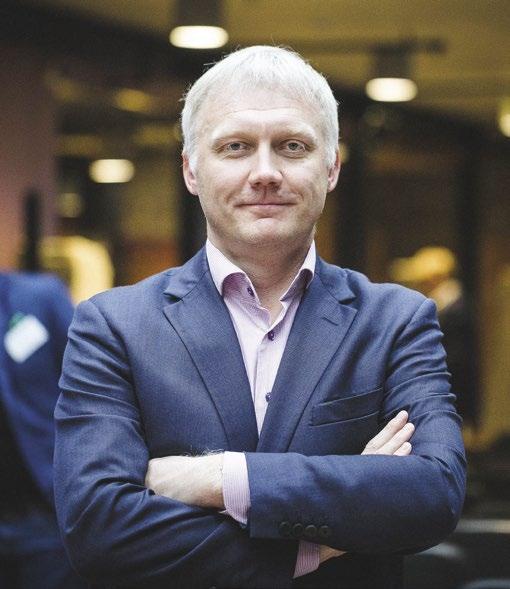
Only 1% of venture capital today goes to companies founded by women. Estonia’s successful female founders are teaming up, speaking up, and stepping up to battle biases in the venture capital space.

Estonian researchers are preparing for a big leap forward in personal medicine and digitalisation bioengineering as two international centres of excellence at the University of Tartu received a total of 60 million euros in development support from the EC and Estonian state.
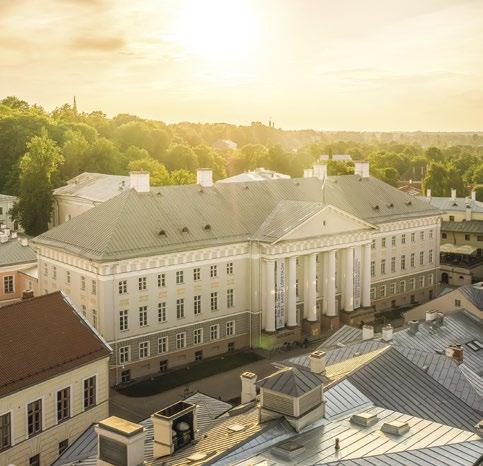
DTx are clinically proven software applications prescribed by physicians to prevent or treat specific diseases exactly according to individual needs. To accelerate the adoption of evidence-based digital therapeutic solutions and drive cross-industry collaboration, DTx
Estonia’s founding allies several DTx manufacturers. They are convinced that Estonia has a unique opportunity to become a key player in the global DTx market.
Mental health problems such as depression are increasingly widespread in Estonia. Therasync, a local startup, aims to save on the time of specialists and guarantee that help reaches as many patients as possible. Investors have a chance to contribute to the innovative solution.
Mental Pin is a good example how personal struggle with anxiety has led somebody to research and design a prototype that could help people with mental health conditions. And it helps if the founder is an interaction designer.
At a time when the number of cancer cases worldwide is on the rise, radiologists have an increasingly heavy workload. Estonian startup Better Medicine comes to the rescue by developing an artificial intelligence-powered system that aims to save up to 13 million man-hours per year.
The healthcare startup and digital disruptor Certific has turned their gaze towards challenges in primary care. Their brand new solution – a digital communication and engagement platform for primary care – lets patients talk with physicians in a secure and simple way.

Clinical medical trials play a crucial role in the development of new medicine, therapies, and medical devices. Still to this day, the personnel conducting trials are using a pen and paper to mark down crucial observations. Menken Trials is working on a platform which is a whole new streamlined solution.
A Finnish hight-tech growth company developing cryotherapy technology in Estonia sees the local business environment as an engine that helps it rapidly grow its business and thus contribute significantly to the health sector, specifically rehabilitation and wellness.
Icosagen develops innovative biopharmaceuticals
Icosagen, an Estonian drug development company that has received 18 million euros from the European Investment Bank, will open its innovative manufacturing facility this year. BioBlock, an anti-covid nasal spray developed by the company, has also reached many countries.

LifeSaver in Estonia – an ambitious win-win project for everybody

Estonian EMS professionals are helping out Airbus Helicopters and international SOS in the development of a new emergency medical system.
PORTFOLIO. Artist Edith Karlson’s world needs no words to explain it
Edith Karlson is an Estonian sculptor whose work can be seen this year at the Kumu Art Museum in Tallinn and at the Sequences XI festival in Reykjavik, Iceland. Next year, her work will represent Estonia at the 60th Venice Biennale.

Direct to creator – Modash connects brands to creative content talent

Avery Schrader came to Estonia 5 years ago from a small town in Canada, still in his late teens. Together with Hendry Sadrak, they created Modash, which connects brands with influencers. The platform now employs an international team of 25 and lists about 300 million content creators worldwide.
66
Going plant-based
Centre of Food and Fermentation Technologies, a privately-owned contract research organisa-
tion based in Tallinn, works with no less than finding the solution to one of our greatest global challenges: feeding the world’s only growing population in a sustainable way.
Pearl mussel whisperer saving an endangered species
In Estonia, the freshwater pearl mussels are listed as critically endangered and they are truly rare. They can only be found in one river that flows through Lahemaa National Park into the Baltic Sea. In fact, they are so protected that the conservationists don’t even want to disclose the name of the “pearl” river.
Viljandi Folk Music Festival 30!
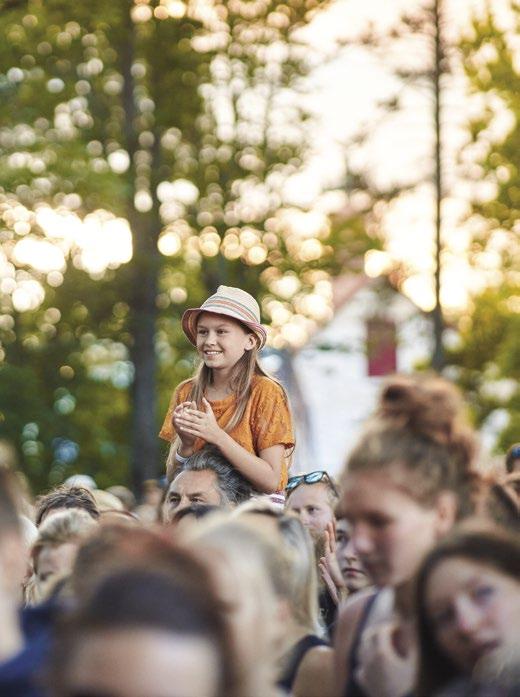
Viljandi Folk is a music festival that values tradition, heritage, and local identity, adapting spiritual values developed over centuries to contemporary life. This summer the festival will happen for the 30th time. What makes it so special that you want to return again and again? Kikee from India and long-time Folkists Siiri and Nigel share their thoughts.
80
Events calendar: Highlights from May to September
2022 was a record-breaking year for Estonia in terms of investment attractiveness. The Estonian Investment Agency (Invest Estonia) facilitated an all-time high number of foreign direct investments (FDI), including a flagship project of a magnet factory and R&D centre in Narva.
Invest Estonia has secured 351 million euros in direct foreign investments during 2022, the biggest number to date. From world-class factories to R&D initiatives, Estonia has attracted plenty of innovative solutions for a changing world.
“In the first half of the year, we had to do a lot of explaining to maintain investor confidence in Estonia. The second half of the year was again more commercially active, and a number of important investment deals for Estonia were confirmed,” says Joonas Vänto, Director of Invest Estonia.
Major foreign investment projects do not happen overnight, though. One of the best examples is the Neo Performance Materials (NPM) magnet factory project, a 100 million euros facility to be built in the city of Narva by the rare-earth metals producer Silmet. Invest Estonia handled the project for years, with the final announcement being made in November 2022.

The Narva factory will produce magnets from rare-earth metals and recycled materials, with a yearly capacity of 1500 tons. This will gener-
ate roughly 150 million euros in yearly revenue. Preliminary calculations from Bloomberg hint that the factory’s maximum capacity of 5000 tons may be enough to power 1.7 million electric vehicles, which is equal to the current rate of EV registration in Europe.
“Neo’s investment in Estonia is consequential for de-risking European EV manufacturing and the half million jobs it safeguards in Europe by providing a unique supply chain optionality,” says Vasileios Tsianos, Director of Corporate Development of NPM.
The new plant is also expected to create hundreds of new jobs directly in Estonia and will also include an R&D centre. Estonian-made magnets will be used in various applications, including electric equipment, generators, speakers, and scientific equipment, as well as in wind turbines and hybrid and electric vehicles.
The demand for magnets is growing as the world moves towards a clean energy future, with the automotive industry as the largest end-use industry of magnets. The average hybrid or electric vehicle uses between 2 and 5 kg of rare-earth magnets, depending on the design. Estonia is now positioned uniquely to
Photos by Peter Kollanyiboost the pan-European movement towards cleaner energy.
“You look at the whole of Estonia – 1.3 million people is the size of a small city anywhere else in the world – and yet it has the potential to become an innovation hub for critical materials for all of Europe,” says Constantine Karayannopoulos, CEO of NPM.
It’s also good for the local economy. With its large deposits of oil shale, Ida-Viru was traditionally a centre for chemical and energy industries but now diversifies rapidly thanks to strong institutional help. NPM is the first receiver of governmental support from the Just Transition Fund through the Ida-Viru County measure. The measure’s planned total budget is 153 million euros, which should go towards at least 20 major projects in 2022-2026 and at least 1000 new jobs in Ida-Viru County.
“The decision by NPM to build a magnet factory in Ida-Viru County was undoubtedly the largest project of the past year in terms of both investment volume and the number of jobs created. It was also a strategically significant deal,” says Vänto.
Another success worth mentioning in the record-breaking year is Bifrost Tug, a Norwegian manufacturer of icebreakers, which is setting up an R&D centre in Estonia. The facility has received funding of nearly 800,000 euros from the Enterprise Estonia Applied Research Programme, and it will also involve TalTech’s Small Craft Competence Centre. It aims to develop a new design of removable ice-breaking bow for smaller towing vessels to improve their access to wind generators in offshore wind farms during winter. As Estonia races to be the world leader in per capita green energy production, those efforts will move this goal closer.
Other success stories include a follow-on investment by the German Kühne+Nagel IT Centre, the biggest job creator after NPM, and the Finnish electronic manufacturer Incap Electronics, which was selected as Foreign Investor of the Year at last year’s Estonian Entrepreneurship Awards. The company operates a factory on the island of Saaremaa.
Besides all kinds of electronics, Incap is also producing circuit boards for stereo cameras
that will be used on the Moon in connection with NASA’s Artemis lunar program. The cameras will be part of Maxar Technologies’ robotic arm and are expected to land on the Moon by 2024. Incap also invested in the Estonian education sector, facilitating a program in electronics engineering.
Vänto believes that cooperation with Estonian companies will increase, as there are enormous benefits to bringing an outside investor on board and setting up strategic partnerships. “Strong companies are the ones that make bold investments in difficult times,” he commented, then added: “A special mention should be made, in addition, of the good cooperation that we have with the Ministry of Foreign Affairs and embassies. We will likely work together even more in the coming year, helping foreign companies find opportunities in Estonia.”
In 2021, the Estonian FDI department helped to secure 194 million euros in foreign investment, up from 160 million euros in 2020. In 2019, the year before the COVID-19 pandemic, investments facilitated by Invest Estonia amounted to 234 million euros.
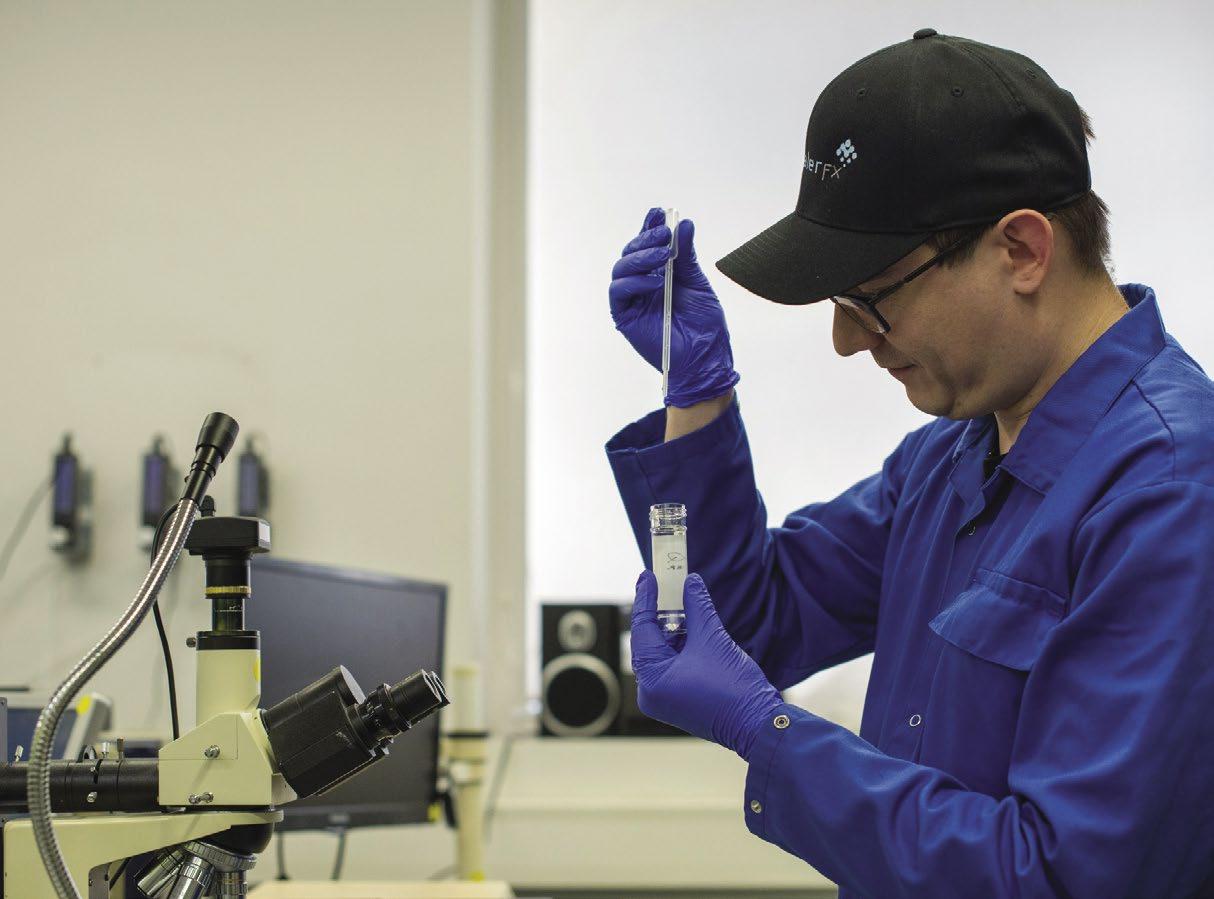
For over a decade, the Estonian startup and tech event Latitude59 has been the gathering point of the brightest digital innovators in the region. As Estonian founders continue their stampede through the world, Latitude59’s role and impact on a global scale has rapidly grown. The boldest and most international Latitude59 yet will take place on May 24th-26th, 2023. Join in!

Latitude59 is stepping into a new decade, and it’s going to be a bold one. “We are acutely aware of the challenges of our era, now we have a chance to decide what the future should look like,” says Liisi Org, the CEO of Latitude59. The most relevant startup verticals have excelled at demonstrating Resilience and Impact in the past year, which is the inspiration behind the theme for the upcoming conference.
Cyber and Defence Tech has made an especially strong showing. The program track dedicated to the aforementioned sector will bring to the stage Philip Lockwood, the Head of the Innovation Unit at NATO who led the establishment of DIANA – NATO’s new transatlantic innovation agency – and the NATO Innovation Fund of one billion euros. Both initiatives have a potentially tremendous impact on global safety, and Estonia’s role in contributing to it.
While the organising team has some surprises in store, the die-hard fans of Latitude59 will be glad to see familiar anchor points in the schedule – the personal and highly inspiring
Founder Stories, the Reverse Pitching of VCs where the investors get the microphone, and the Showcase of the Best of the Baltics, presenting the freshest investment data in the region.
One of the most anticipated moments of Latitude59 is the annual L59 Pitch Competition, which has doubled the stakes this year with a prize pool of up to one million euros.
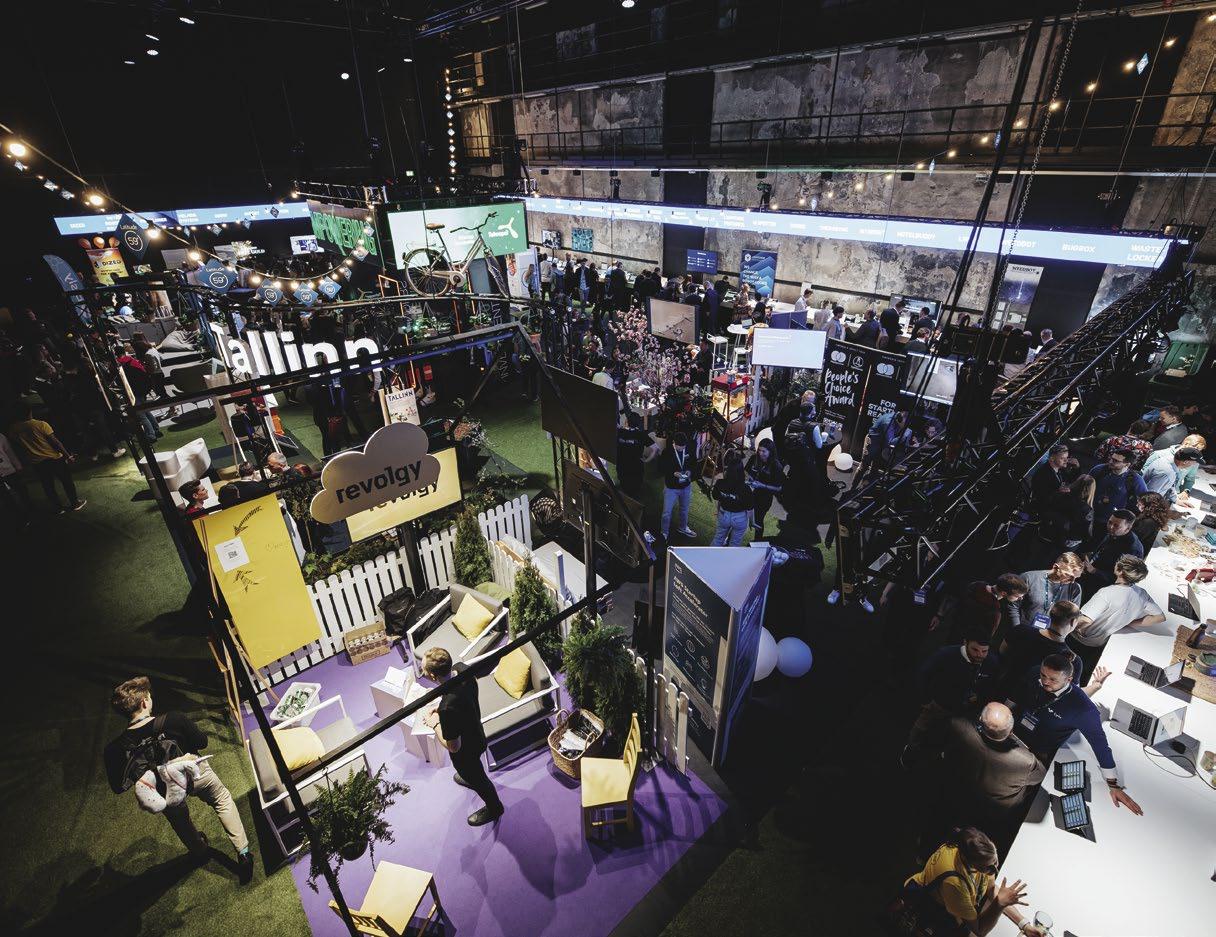
“The size of the funding clearly states that we’re not looking for anything ordinary. If your company’s impact is at least as great as your interest in earning from it, you are the one we seek,” says Martin Goroško, the Lead Investor from the Estonian Business Angels Network EstBAN
The application round has been attracting startups on a more international scale than ever and promises a fascinating mix of early-stage companies to step up. Andrus Oks, the Lead Investor from Tera Ventures hopes to discover world-class founders who are addressing large pain points and building im-
pactful products: “Our goal is to support them on their journey of growing into a global leader in their field.”
Alongside an exciting line-up of international startups, the conference will host at least ten official delegations from around the world, including from Ukraine, the UK, Singapore, and Brazil. Liisi’s vision as the head organiser is to raise Estonia’s visibility in the world and, furthermore, grow the relevancy, the inclusivity and the impact Latitude59’s platform has on a global scale.
In 2022, Shifted listed Latitude59 among the top 10 startup events in Europe. “I think it’s because of the content, the vibe, the strong Estonian startup community, plus absolutely top-notch quality of event organisation,” says Kaidi Ruusalepp, the President of Estonian Founders Society. “I love how the whole startup community comes together every May to network, share knowledge, get new connections, and simply celebrate foundership and startup culture,” she adds.
Since its launch in 2016, sTARTUp Day business conference in Tartu has become the cornerstone of the startup scene in Estonia. Not content with just being a local event, sTARTUp Day has expanded its reach well beyond its original scope and brought together around 4000 startup-minded individuals from March 15th-17th, 2023.
More than 150 entrepreneurs and experts shared insights and experiences on two stages at the conference venue. Martin Villig, co-founder of Bolt, opened the show with a strong message. “Top-tier funds, including Sequoia Capital and Fidelity, invested in Bolt — it is a clear proof for other companies that you can successfully run a global company from an Estonian HQ,” he said.
This year, the programme tracks heavily focused on DeepTech, including HealthTech, FemTech, Digital Fashion, AI and EdTech, as well as leadership and entrepreneurial skills. Investors took notice and stepped up to snatch the best talents.
“sTARTUp Day is definitely a good event to meet early-stage Estonian and Finnish startups and be there at the moment they are stepping into the VC world,” said Simona Andriukevičiūtė, investor analyst at Lithuanian-based early-stage investment company FIRSTPICK. “I feel like the event scene is
underused by other neighbouring countries’ startups, which allows an investor to feel closer to the Estonian ecosystem”.
The conference featured a 500,000 euro prize pool for the region’s top startups in the sTARTUp Pitching battle, with over 70 organisations showcasing themselves in the conference expo area. A visitor could see the famous Auve Tech autonomous vehicle, test revolutionary reusable e-commerce packaging from Low imPACK or listen to DeepTech discussions powered by Startup Estonia, Estonian Investment Agency and Technology Transfer Services Team.
In the heavily contested pitch contest, Paul-Tech won a 200,000 euro syndicate investment from EstBAN for their soil station technology, which allows farmers to monitor plant growth conditions in real-time. Gearbox Biosciences, a biotech startup providing a novel antibiotic-free protein production technology, received a 125,000 euro investment from Baltic Sandbox Ventures.
MX Labs was awarded a 100,000 euro syndicate investment from Cocoon Ventures for their camera-based technology, which accurately measures a person’s heart rate with a smartphone or computer camera, potentially aiding in the diagnosis of physical and mental health issues in the future.
To spice things up, more than over 1000 people showed up to experience the first ice-hole pitching in Estonia – a novel concept of inside ice-hole pitching with investors in a hot tub. This event symbolised both the ice-cold startup investment climate and the increasingly hot investor climate.

The evening programme featured the sTARTUp Night networking event powered by the Tartu 2024 foundation, ahead of Tartu bearing the title of the European Capital of Culture in 2024.
Tartu, with less than 100,000 inhabitants, is becoming an increasingly popular destination for tech companies. An increasing number of startups are establishing their development centres there, including unicorn companies Playtech and Glia, as well as fast-growing startups such as Fractory, UP Catalyst, and LightCode Photonics.
The sTARTUp Day conference is a major part of this speedy transformation. Recently it was recognised by the European Commission as one of the top three initiatives supporting the internationalisation of business in Europe at last year’s European Enterprise Promotion Awards.
Those who missed this year’s event mark it down: sTARTUp Day 2024 will take place on the 24th-26th of January 2024.
Photo by Kiur Kaasik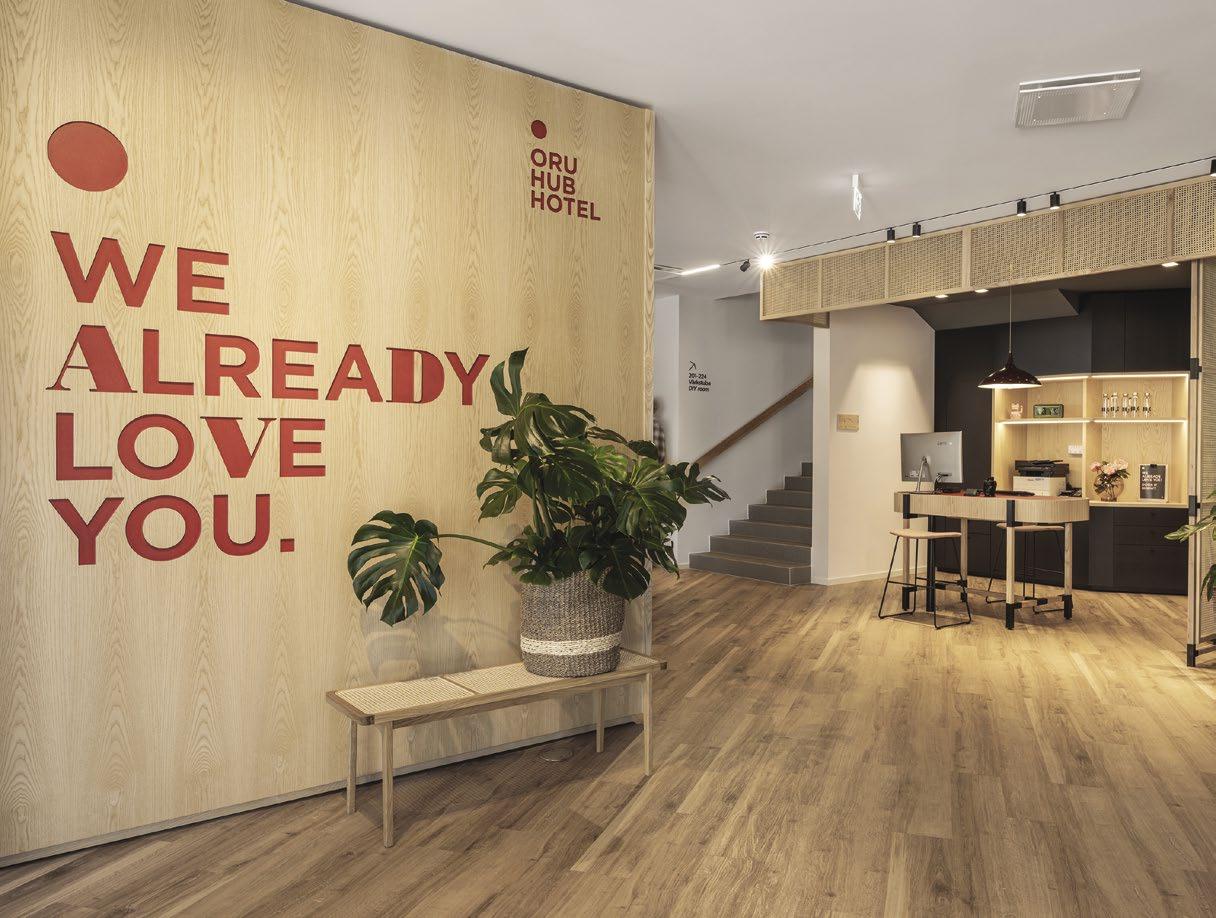
The brand-new Handwritten Collection of the esteemed global Accor Group combines a curated selection of hotels with an individual personality that exhibit tasteful and one-of-a-kind concepts. The first addition to the collection from the Eastern-European region is Oru Hub Hotel in Tallinn. The hotel is set to open and welcome guests this summer.
„Joining the acclaimed Accor network and brand new hotel collection is definitely a noteworthy acknowledgment of the attentive and comprehensive approach to our services on a global level,” says Kristel Mäenurm, general manager of Oru Hub Hotel. „The name of the collection is spot on for Oru,” she laughs, “as the hotel today is really as if handwritten, the fruit of meaningful work and endless conscious decisions.”
The Handwritten Collection brand brings together hotels with individual personality, intimately reflecting the character and warmth of the people who love and look after them.
Like a handwritten note, the personal touches of hosts will be subtly felt at select moments throughout a guests’ stay. No two hotels are the same and each property will offer a different personal touch to delight and create a meaningful connection. Granting the hotel its distinctive style is the concept of a ‘hub’. Its essence is the feeling that there are no clients, only guests. The guests will feel as if visiting a good friend or family.
Oru Hub Hotel caters to people with a wide variety of needs, all common in present times. Like people who travel both for leisure and work and wish to make the most out of their stay. The hub is a hybrid hotel that mixes private rooms and a unique co-area – place to work, mingle or simply hang out. They also offer a yoga room and DIY-space where you can iron your shirt or wrap a gift.
Oru Hub Hotel is designed for relaxation in a homely environment and attention is paid to every little detail. The soap in the bathroom won’t make your eyes itchy. The pen is actually comfy to use and writes well. The shelves in
the co-area are stacked with books that you would genuinely like to read, and so on. All hand-picked – the hotel is tailor-made with Estonian leading design agency Velvet. Design lead Kristian Kirsfeldt and interior designer Kätlin Ölluk (AERIS) carried out their vision with care and meticulousness, and it shows.
Handwritten Collection was created in 2023 to bring together hotels with a unique personality, intimately reflecting the authentic character and warmth of the people who love and look after them. The collection will include curated, stylish and intimate hotels offering between 50 and 150 rooms, located in the center of capital gateways as smaller cities or popular leisure destinations, targeting both corporate and leisure guests, international and domestic travelers. Globally the portfolio is expected to reach 250 hotels by 2030.
Altogether, Accor hospitality group consists of 5400 properties throughout 110 countries.
Seek out the uniqueness: www.oruhotel.ee
Only 1% of venture capital today goes to companies founded by women. Estonia’s successful female founders are teaming up, speaking up, and stepping up to battle biases in the venture capital space.
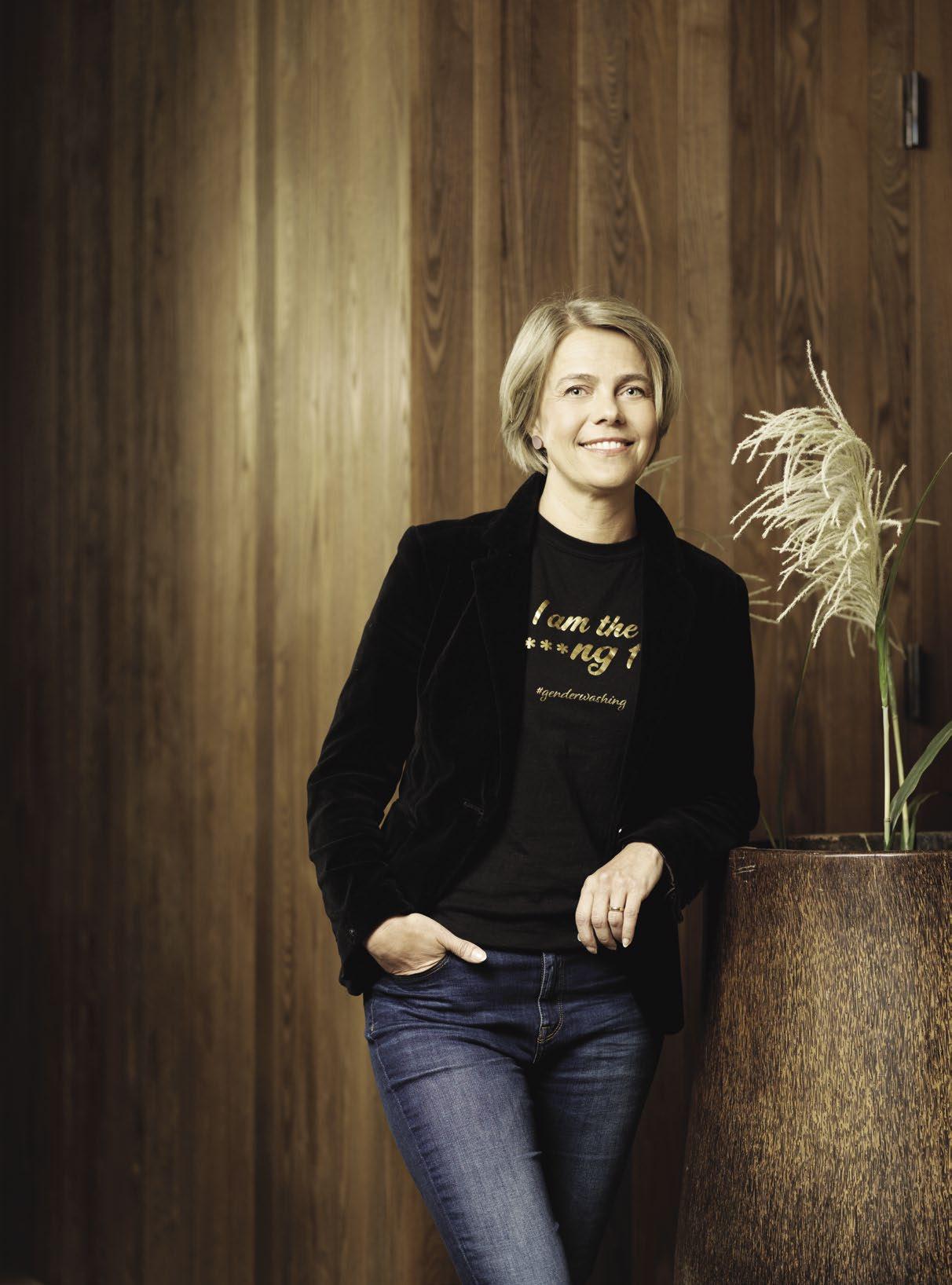 Kaidi Ruusalepp
Kaidi Ruusalepp
The venture capital (VC) industry has a diversity problem. In Europe, only 1% of capital is going to women-only founding teams, and somewhere around 4% of total VC funding goes to diverse founding teams. The Estonian startup ecosystem, known for its agility and high concentration of unicorns, is determined to tackle the problem head-on. In 2022, female and mixed founding teams in Estonia raised 79.5 million euros, or 6% of total investments, while all-female founding teams attracted 7.2 million euros. Leaving aside Bolt’s record-breaking 628 million euros, that puts all-female teams at 1%.
The Estonian founders of global companies like Funderbeam, Testlio, Jobbatical, Fyma, FoodDocs, Timbeter, Clanbeat, Sage.ai, Grünfin, Soulie, Cachet, and Single.Earth, representing a number of different startup stages and industries, are banding together to take a proper swing at the glass ceiling.
The funding gap in high-growth entrepreneurship is no secret to most women, but many men in the space are still shocked to hear the numbers. Just ask FoodDocs founder Katrin Liivat. Liivat was struck by the uneven distribution of awareness when she and other female founders started wearing T-shirts with the eye-catching slogan We are the f****** 1%, to highlight the underfunding issue. “At events, people ask me what the slogan means,” Liivat says. “When I explain what the 1% refers to, most men say, ‘No, it can’t be that little.’ But it’s a fact.”
Potential explanations for the funding disparity have included gender differences in technical training or risk preferences, but studies are making it inescapably clear that investors are simply reluctant to fund female entrepreneurs: A study published in 2020 found that “female-led startups experience significantly more difficulty garnering interest and raising capital from male investors compared to observably similar male-led startups. [...] Overall, the evidence is consistent with gender biases.”
Kaidi Ruusalepp is the President of the Estonian Founders Society, the country’s first-ever IT lawyer, and the founder of Funderbeam, a global investing and secondaries platform for investors to buy and sell equity stakes in private companies. A lifelong stereotype-buster, she is also one of the driving forces behind this wave of women speaking up about the glaring gender imbalance in VC funding.
As Ruusalepp points out, it’s beyond any shadow of a doubt that while there is a perception that women-led businesses are somehow particu-
larly risky or niche, women are building businesses and technologies that are just as hard-hitting as any of the most successful male-founded companies. And they’re doing it with a fraction of the funding the men are getting. “When you look at the companies founded by women in Estonia, we have DeepTech, FinTech, InsurTech – nothing like ‘just another dog walking app’. We run global businesses with global funding from the likes of Union Square Ventures in the case of Karoli Hindriks and Jobbatical, for example,” Ruusalepp says.
“We have all these companies with international reach, but we are underfunded compared to male founders. 90%+ of the venture capital is managed by men, and they invest in similar founders.” Ruusalepp refers to this tendency as cowardly capital. “They don’t feel comfortable investing in something that’s different to where they come from,” she says. “We have to eliminate those biases.”
The potential currently stuck behind gender biases is immense. Against the odds, the women featured in this article have raised somewhere in the region of 100 million euros between them. “What if we had ten times more funding?” Ruusalepp muses. “Where would we be? Maybe half of us would be unicorns. Maybe it’s worth deploying more than just survival capital to women founders?”
So how are women founders supposed to break through the glass when the odds are stacked so firmly against them? In 2022, Tessa Clarke memorably wrote, “Female founders need money, not more mentoring.” Sure enough, there’s no credible, science-backed reason to suggest that women aren’t raising money because they can’t pitch, or because their business ideas are inferior to men’s – the same 2020 study cited above found that the male-led startups that male investors express interest in do not outperform the female-led startups. Quite the opposite: they underperform in comparison.
So while mentoring is great – “We do a lot of mentoring of fellow founders,” Ruusalepp says – funding is needed more urgently. And getting those numbers up from 1% requires attacking the problem from every angle. “We are building successful businesses to bring down the barriers for the next generation of female founders,” Ruusalepp says. “We speak at conferences and to the media. And we’re working towards making successful exits, so that we ourselves have the capital to boost investment into diverse founders.”
‘Women are building businesses and technologies that are just as hard-hitting as any of the successful male-founded companies’
A mainstay on the Estonian founder scene, Ruusalepp herself has been at the centre of the startup action here for years, and her faith in the Estonian community’s ability to change the status quo is unshakeable. She hopes that with purposeful action behind the goal, the growth of funding for female founders is going to be exponential, but 10% would be a good start. “We’re also aiming for 10% of all startup revenues in Estonia,” she says. “We’re already not far from that.”
Having brought the issue into the spotlight recently at the Estonian Startup Awards ceremony, along with other founders, Ruusalepp notes that even though the biases are embedded deep into society and individual mindsets, the reaction shows encouraging signs. The community is open-minded and ready for change, but like any big transformation, it will take time and effort. “One of the most difficult things to change is habits,” Ruusalepp says. “VC capital has worked one way for the last 40 years, and changing that is extremely difficult.”
If it were easy, someone would have done it already. But this group of bias-busting founders is rising to the challenge, emphasising that in addition to diversifying the VC landscape, much of the work needs to be done at home and in schools.
“We still have gendered education in our schools,” notes Karen K. Burns, co-founder and CEO of AI startup Fyma. Not much can be expected to change in perceptions as long as children are being raised within dated gender stereotypes that make it harder for girls to pursue entrepreneurship and careers in STEM – male-dominated fields where the environment tends to be more hostile towards women. “From a very early age on, girls shouldn’t be feeling like they are being treated specially because they’re doing STEM stuff,” Burns says. “It should just be normal.”
There are plenty of initiatives already chipping away at the problem, and it’s not like these startup founders are starting completely from scratch. HK Unicorn Squad, founded by entrepreneur Taavi Kotka, empowers girls to choose a path in IT. The Tech Sisters non-profit has been encouraging women and girls to do the same since 2013, with their entry-level workshops and networking events. The Challenger Diversity Accelerator, co-founded by serial entrepreneur and investor Triin Kask and mentored by a number of Estonia’s most prominent female founders, focuses on increasing diversity and supporting startups with at least one woman on the founding team.
There is a lot of work already being done to change the biases and perceptions standing in the way of gender equity. It’s the age-old mantra of most seekers of gender equity: “We’ve come a long way. But…”
The onus now largely lies on the venture capital space itself. Estonia’s pioneering 1% do not plan to stop raising the issues, raising funds, and fearlessly nudging VC’s to examine the patterns that are holding so much entrepreneurial potential hostage. “As a fund manager, think about where your money is going and why,” Ruusalepp urges VC’s to confront and address their biases, whether they’re conscious or not. “Women can take risks, and we can grow the money.”
FoodDocs was founded in 2017 and raised 2 million euros in 2022 to solve food safety compliance issues. Leveraging AI, FoodDocs makes getting and staying compliant significantly less time-consuming than traditional methods. Founder and CEO Katrin Liivat is a strong proponent of unleashing the full potential of women in the workplace. With a 50/50 gender split on the FoodDocs team, Liivat has seen first-hand the benefits of gender equity and pushes for it wherever she can. “Showing women what they’re capable of doing, the energy that comes with that is awesome.” Liivat says. “When I hire women, I see the same pattern that I used to have. They have been under this pressure that says, you can’t do it. Once they’ve understood what they can achieve, it’s like a rocket. Only the sky’s the limit.”
Triin Kask is a serial entrepreneur, angel investor, and co-founder of the Challenger Diversity Accelerator. Kask’s current startup Soulie, the third company she’s led since the beginning of her entrepreneurial journey, allows people to create their own personal algorithm and browse ultra-personalised content as an antidote to mindless scrolling. Kask has raised several million euros for her startups, 600,000 euros for her latest Soulie, which is set to open its beta to the public later in 2023. Like many women in the startup space, she was initially not convinced there were biases or stereotypes at work in the VC world. She simply assumed it was that difficult for everyone. “Now I work with other female founders raising money,” Kask says. “And I see how hard it really is. It’s much easier for male founders to raise money at that stage. So I’ve been working on encouraging other female founders. We started our accelerator and female founders’ meetups, which have been really popular and always overbooked. This ecosystem, from women to women, is working very well.”

They are the 1%
Fyma founder and CEO Karen K. Burns set out to make AI more accessible in 2019 and closed a round of 1.8 million dollars in seed funding the following year. Burns is an outspoken advocate for gender parity in all spaces, and particularly passionate about using her platform to get more women into STEM and management roles. “Women raise smaller rounds over longer periods of time,” Burns notes. “That, compounded with being a tech company that spends maybe two years of its life actually building the product, you need to push for profitability and revenue sooner because you will have diluted yourself already.” The quickest way to a solution, Burns believes, is working more closely with VCs and the men in the industry. “A really easy thing for VCs is to change their pipeline,” Burns says. “Last year, I spoke to an investor who would meet a woman-only or mixed-gender team for every male-only team in his pipeline. Within a year and a bit, his portfolio was 50/50. He changed his bias by eliminating it at the root.” Burns believes that on top of everything else, not
funding women-led companies is simply bad business sense. “It’s not just about women getting money,” she says. “It’s about good businesses getting money.”
Timbeter digitally transforms the timber industry into a transparent and well-managed supply chain. Founder Anna-Greta Tsahkna set out to increase sustainability, efficiency, and profits for the forestry industry and for governments. In total, Tsahkna has raised 1.7 million euros for Timbeter to date, and has established a firm presence on their main markets in Latin America and Africa. At the intersection of tech and timber – not one but two traditionally male-dominated industries – Tsahkna has felt the imbalance inherent in the system. “As a female founder on the same level as any male founder, you’re still undervalued and you have to jump higher,” she says. “Female-led businesses are actually on average more profitable but still have more difficulty getting funded. We are so used to having men in charge of money. It will take time, but I do see that there
are more and more VCs who really take it into consideration that they need to have female founders in their portfolio, such as Change Ventures, one of our investors.”

Serial entrepreneur Kadri Tuisk is adamant that her daughter, already a founder at 17 and soon raising funds for her own business, should not have to face the same kind of biases in the VC world that she has. “I want to create a world where my daughter is able to create the change she is hoping to see,” Tuisk says. “If you’re looking at the companies bringing change in the world and they’re all male-led, you’re not looking at a balanced world.” Tuisk herself is at the helm of Clanbeat, an EdTech startup bridging the student mental health gap. With her Clanbeat offshoot, SageAI, Tuisk is taking an even deeper dive into how technology can unlock human potential. Born in 2022, SageAI offers highly personalised, AI-powered coaching and learning for delivering results in startups, without burnout.
DeepTech startup Single.Earth is disrupting climate action by investing in forests. CEO Merit Valdsalu set out to find alternatives for monetising forests in 2019, after winning a hackathon at which she and her co-founder showed that nature can be commercialised without being sold. To date, Valdsalu’s Single.Earth has raised 7.9 million euros to transform the world economy by introducing the first nature-backed currency. “I grew up with older brothers and I’ve just been fundraising, so I’m used to being surrounded by men,” she says. “I wasn’t thinking of myself as somehow a different human. But at some point I realised that it’s just the 1% of women, or maybe a bit more if we’re talking about mixed founders, that actually get funding. That was even shocking to me, and I was already there. Even the women inside the system don’t know how little funding is actually going to them. That needs to change.” Valdsalu hopes to see her children be the first generation to grow up without the biases women face in the business world, and society as a whole. “It should make all the sense in the world to see women as leaders. And we need more female VCs, definitely.”

Hedi Mardisoo is the founder of Cachet, an InsurTech startup that raised 5.5 million euros and doubled their team in 2022. Cachet provides solutions for the growing platform economy workforce, projected to account for 1 out of 5 economically active citizens in the EU by 2025. For Mardisoo, one of a very small number of female startup founders in the insurance tech industry in Europe to raise a round of VC funding, the problem of the gender funding gap had been a relatively abstract one, until the numbers simply weren’t adding up anymore. “When I started to talk to other female founders and saw the numbers, it hit home.” The number of female-founded companies is growing, but investments are not. The solution, as far as Mardisoo is concerned, is a dialogue. "In most cases, people involved aren’t realising the bias in their decisions, as this has been considered a norm in the past. Therefore if we’re not the ones putting it in front of everybody, who will? I think it will be a sign of a healthy ecosystem, where women feel safe and strong enough to bring up these topics.”
Triin Hertmann has helped take household names like Skype and Wise from early-stage to unicorn. Convinced that every technology product should strive to make the world a better place, Hertmann founded Grünfin to focus on investments in climate change, equality, and health. As the community’s choice for Investor of the Year, Hertmann was the only woman to win a category at this year’s Estonian Startup Awards. With 20 years of experience in the finance and technology world, Hertmann has had a front-row seat to the biases female founders face in male-dominated industries. And she does not shy away from speaking up about it. “Even if we feel like we are the only women in the room, we have to go and make ourselves heard,” Hertmann says. “Because other women are looking in, and they need someone to show the way. Women are not here to demand special treatment, just something that is fair. We’ve spent too long on the side-lines, thinking things will happen by themselves and that people will understand how it’s beneficial to have diverse investors and teams. But I think we need more of that push.”
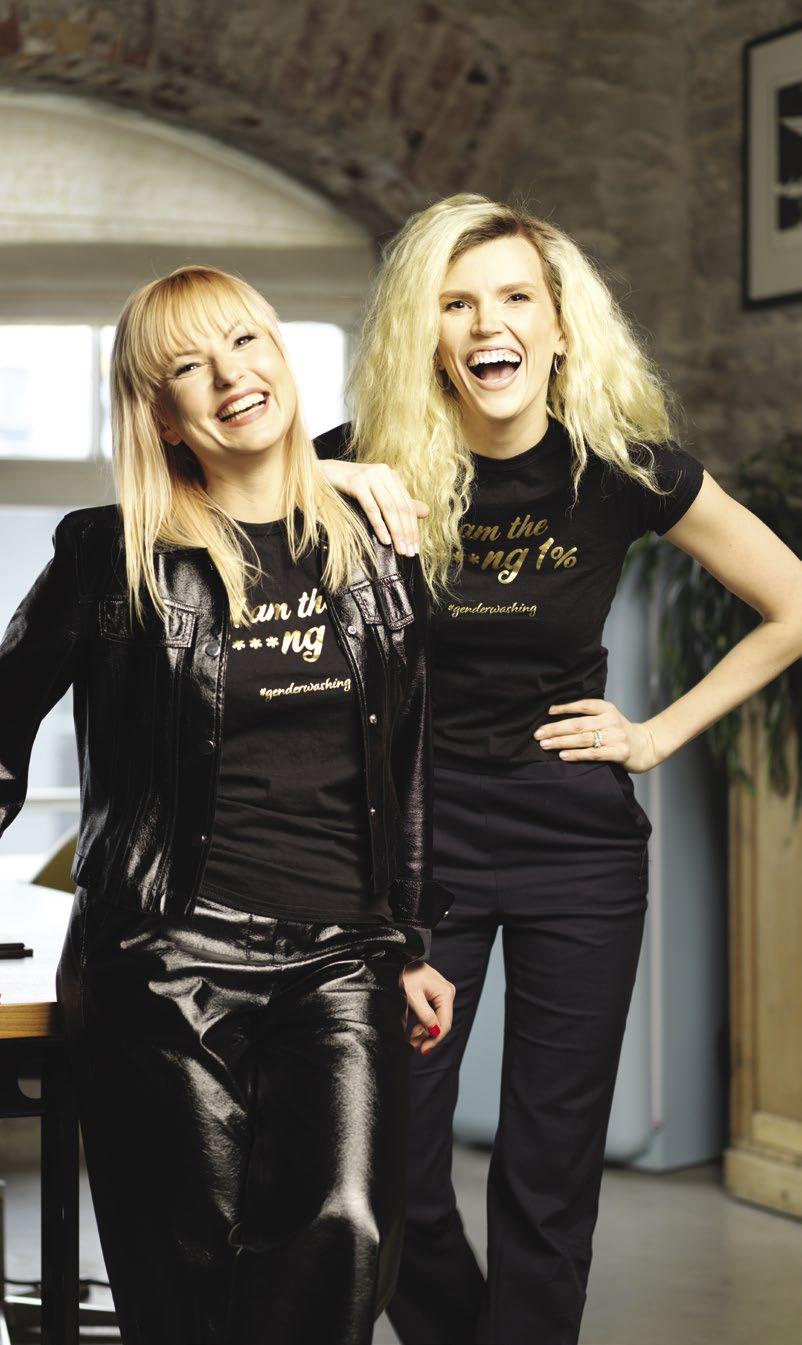
Karoli Hindriks has been an entrepreneur for a solid 20 years. Jobbatical, the tech platform that Hindriks founded in 2014 and successfully pivoted in 2019, makes it 2x faster and 3x less expensive for businesses to move employees from one country to another. The latest round of funding, 11.6 million euros in 2022, brought the company’s total close to 20 million euros. Last year, Jobbatical tripled its revenue, landing Hindriks in the top 3 in two categories at the Startup Awards: the Revenue Hack and the Founder of the Year. Throughout her career, Hindriks has seen how the VC space treats men and women differently in seemingly small ways that nevertheless lead them on drastically different paths. “It starts with the questions,” she says. “Men tend to get questions about opportunities and their vision, while women get questions about the risks, and what can go wrong. We don’t need more mentoring for female founders. We need to mentor the VC’s.”
One of the very first female startup founders in Estonia to ever raise a round of VC capital, Kristel Kruustük has long been a hands-on investor and mentor on a mission to empower more success stories like her own Testlio, which provides quality assurance, quality engineering, and digital experience solutions. Kruustük believes that varied perspectives and experiences are what create truly innovative products and services, but that the potential successes of many underrepresented founders are locked away behind barriers like limited networks compared to men. "Our companies are equally important to companies built by men," Kruustük says. "Women are tackling significant challenges, and thus, they deserve more funding. While sharing our stories is crucial, we also need to recognise and overcome our biases. At Testlio, we've for example also implemented anti-bias hiring training for our managers."
‘We are building successful businesses to bring down the barriers for the next generation of female founders’
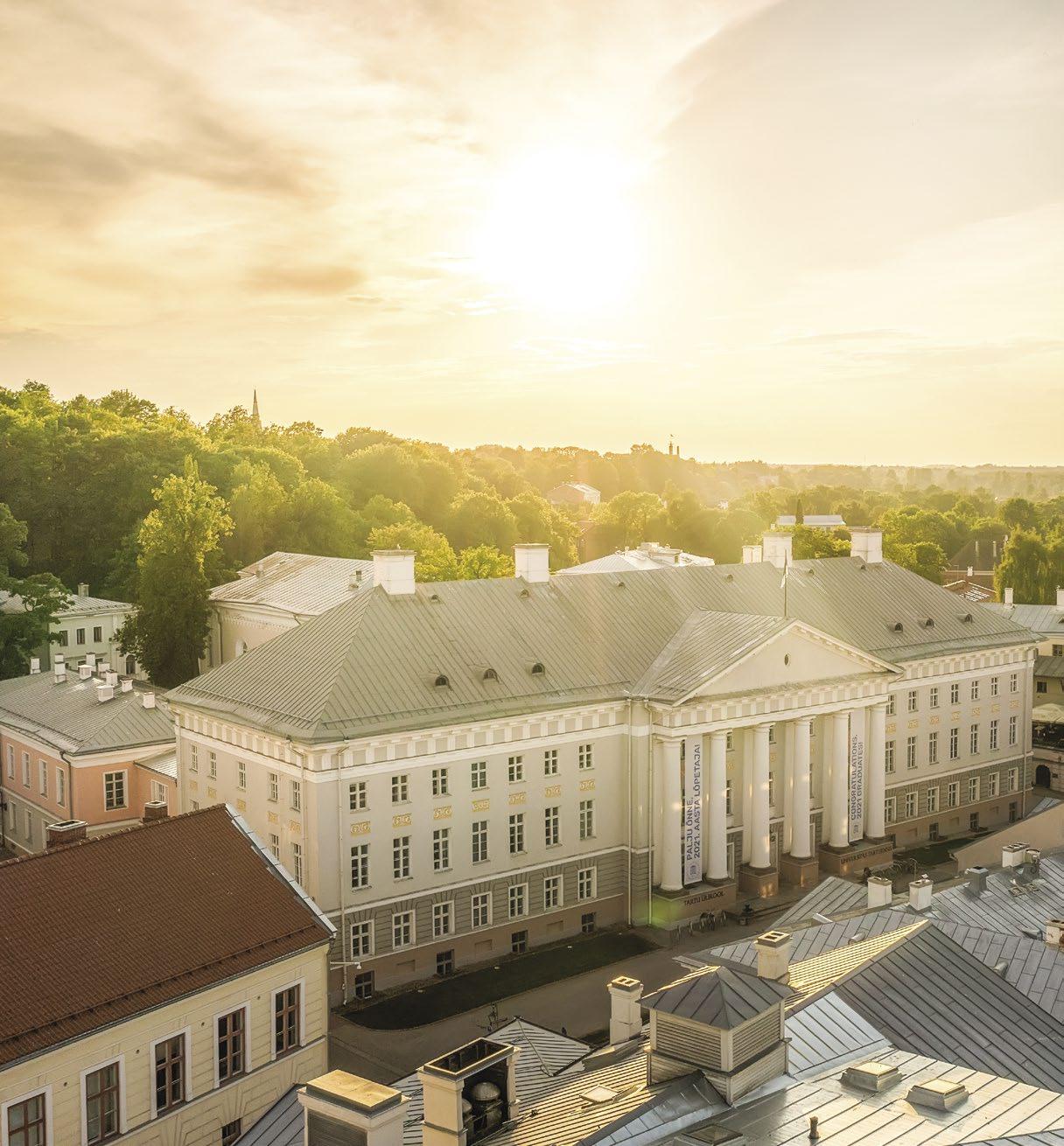 By Sven Paulus
By Sven Paulus
Estonian researchers are preparing for a big leap forward as two international centres of excellence at the University of Tartu received a total of 60 million euros in development support from the European Commission and the Estonian state this year. Both are future topics, as one centre focuses on the development of personalised medicine and the other on digitalisation bioengineering.
Life in Estonia talked to Professors Mait Metspalu and Mart Loog, who are heading the two consortia led by the University of Tartu.
Over the next six years, a consortium led by the University of Tartu and Tartu University Hospital will establish a personalised medicine research and development centre of international excellence in Estonia, where the application of personalised medicine and its various stages will be studied. This will require closer collaboration between different research disciplines, from clinical medicine and public health to social and data sciences.
Mait Metspalu, Professor of Evolutionary Genomics at the University of Tartu (UT), you are the head of the personalised medicine centre. How do you define personalised medicine?

This is medicine that includes much more personal data than before. In addition to genetic data, or genomics, other ’omics’ are also involved. This makes it possible to assess disease risks more precisely and in a personalised way, thereby preventing diseases, and providing better cures, for example through early detection. This is where precise diagnostics and treatment come to the rescue. We are getting more and more layers of data that can be used for treatment.
We are at the forefront thanks to the Estonian biobank that was created 20 years ago. The data of the Estonian Biobank has allowed making important scientific discoveries about the links between genes and health, yet we are still several steps away from implementing genetics-based health services.
Our second pillar is the mentality of Estonia as a digital country. We have had several clinical trials that have shown the usefulness and effectiveness of personalised medicine, for example, in breast cancer and cardiovascular diseases. In addition, a major co-project of the National Institute for Health Development and the Ministry of Social Affairs is coming to an end this year, where the Institute of Computer Science of UT has contributed a lot in building the country’s IT infrastructure, upon
which personalised medicine solutions can work. The legislative side has also been reviewed.
What is the level of personalised medicine in Estonia compared to the rest of the world?
There are no such nationwide services yet that use polygenic risk scores. Our biobank is a great advantage and now they are being made in other parts of the world as well. The availability of data and the strength of Estonia as an IT-state are our main trump cards. Precision treatment in oncology is well under way both here and elsewhere, and another thing is precision diagnosis for mendelian diseases – rare diseases with a very clear genetic background, which is very well developed.
What will happen in the future centre of excellence?
The aim is to bring together the research and development units contributing to the development of personalised medicine. We are not creating a new institute, but a consortium. People from the University of Tartu and Tartu University Hospital will work in the centre, focusing on conducting clinical research. The 30 million euro grant will be used for establishing the centre and the piloting or demonstration of its various development functions.
Three specific clinical trials are planned, looking at genetic risk factors, pharmacogenetics and, very importantly, data science, where privacy issues are crucial. It is equally important to take the measurement of socio-economic impact to a new level where it should happen automatically because the variety of solutions is wide and the assessment of impacts needs to be dynamic. It is also very important to educate the medical staff so that the relevant topics will be included in the university curricula.
Besides the UT and the hospital, two external partners are participating in the project: the University of Helsinki and the Erasmus University Medical Centre in Rotterdam. These institutions are engaged in R&D, but when it comes to the implementation of personalised medicine, the partners include the Ministry of Social Affairs, the Health Insurance Fund and the Ministry of Education and Research. Also, the private sector
Mait Metspaluhas a very important role to play in the implementation of personalised medicine by developing medical devices to use, for example, the polygenic risk score. This is a virtual medical device that has to be produced and operated by someone. Since universities are not involved in manufacturing, we contribute to the development of the innovation ecosystem so that entrepreneurs can develop such products.
One of the goals of the project is to sequence the full genome of 10,000 Estonians?
If we take the human genome, there are three billion letters or base pairs. Although sequencing has become cheaper, it is still very expensive, and it also costs a lot to maintain such a dataset. Therefore, it is not reasonable to think about sequencing the genomes of the entire population, because genotyping is much cheaper, where we only look at, say, one million of the three billion base pairs. To put it simply, the genome is a jigsaw puzzle. Using these million genotyped positions, it is possible to understand which piece of the puzzle it is. If we know what other gene variants this piece of the puzzle has, we can expand the genotyping data, i.e. information about gene variants that we have not directly checked. This is called imputation. To make personal medicine accessible to everyone in Estonia, we need to be able to impute the genotyping data of all the people living here. To do this, it is necessary to sequence the genomes of many people, including people of different genetic backgrounds, to learn which pieces of the genome puzzle are present in our population. Then we can better identify them based on genotyping data.
The project will start this autumn, but we are already working hard to get the centre up and running. The first visible result will be when all the partners sit together around one table. Until now, different specialists have been working on personalised medicine from their own turf, so to speak, and there has been little inclusive process so far. We hope the new centre of excellence helps to take good steps in this direction.
The DigiBio consortium, which has also received a 30 million euro development grant, will combine synthetic biology with informatics to make quality leaps in synthetic biology and biotechnology industries.
Mart Loog, Professor of Molecular Systems Biology at the University of Tartu, how important is this grant?
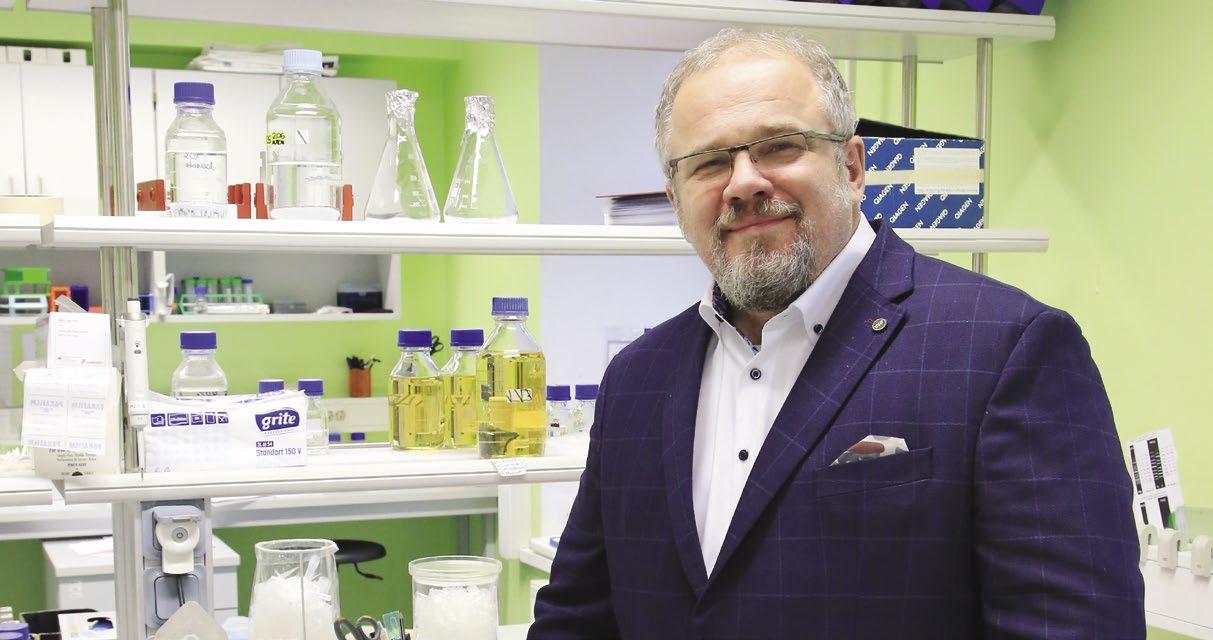
This is quite an important stage in the development of Estonian molecular life science, because the grant is not just for doing research, but for creating new structures and introducing new topics, instrumentation and expertise. Everything is constantly changing in science and Estonian science needs to keep up with the times and challenges and bring in young people who are doing new things. We also need to have a clear vision of where it is worth investing in science and where it is worth digging. Synthetic biology is a relatively new thing, and a subject of the future, and there is a lot of investment in it.
Ideally, in six years’ time, the centre will become an institute, co-located with other institutes in a new building. The UT has many free plots of land in Maarjavälja where both public and private research institutes could be built. I would expect private capital to invest in this campus, because the money will come back later.
It is a discipline that differs from ordinary molecular biology in two ways. Since synthetic DNA, which can be bought and integrated into cells, has become relatively cheap, and we also have methods to deliver very large DNA fragments into cells, there is a huge paradigm shift. We have long heard about engineering genetics and GMOs, but in synthetic biology it is on a completely different scale. If until now we talked about one or two genes that were changed, for example, in the GMO tomato to make the fruit less soft, it was just a few mutations. If we imagine that we can accurately synthesise tens of thousands of letters of DNA, then we can also change thousands of genes at a time, which was not possible before.
Mart LoogWith the CRISPR method, it is already possible to carry out hundreds of thousands different modifications in different strains at the same time, which means that the capacity for gene manipulation becomes several orders of magnitude greater. The idea is to accelerate the programming of genomes with the equipment we buy into this unit, essentially creating a biofoundry, and its digitalised workflows. There are at least six different types of biofoundries in the US and China and more are being built. We’ve applied to join the Global Biofoundry Alliance, because it’s a network that collaborates and shares experience to initiate the synthetic biology revolution. Among many elements of digitalised process, one of the important advantages is that when we start reprogramming the genetic code so extensively, we cannot analyse these mutations one by one as we used to. This is where informatics and machine learning come to the rescue.
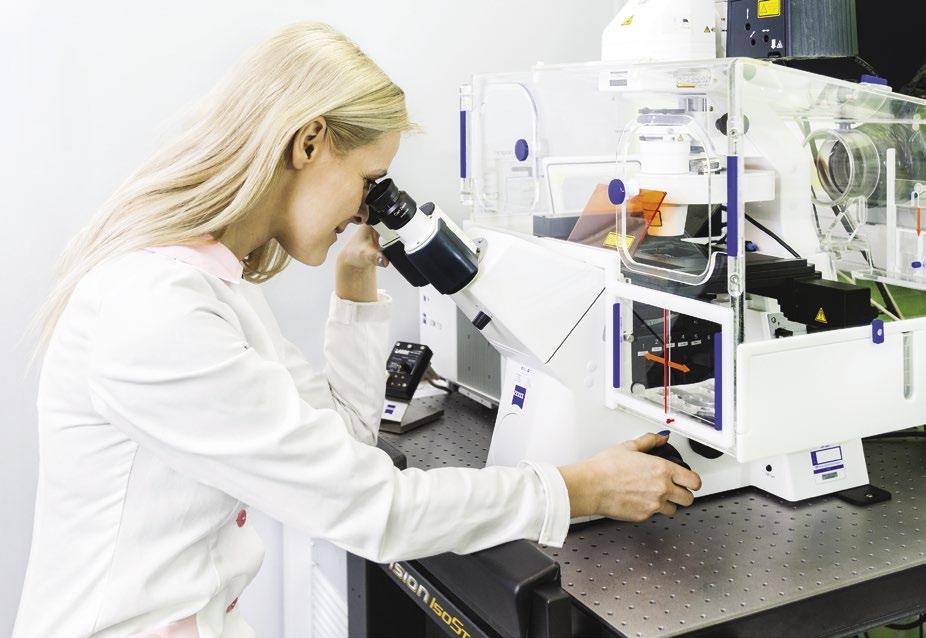
The system itself is built as an engineering circle. First, different genetic designs are carefully outlined in silico in a computer, then the genome is physically assembled in a cell, the cells are tested by analytical robots and the best ones are selected according to phenotype. Their DNA is fully sequenced, then re-analysed by a digital unit, and the decision of how to proceed with the next design cycle is made. We create cells that would be biotechnologically useful, whether in medical therapy, industrial biotechnology or bioeconomy. Synthetic biology is now at the stage where almost everything we find there is quite fundamental and potentially useful in many future applications in different cell types. One of our focuses is biomass refining and microbial cell factories to replace petrochemicals by refining sugars or lignin from wood residues, for example. We partner with scientists at the very advanced Novo Nordisk Centre for Biosustainability in Copenhagen, who guide and instruct us in the process of building the workflows. The benefit arising from the cooperation is mutual. In this way, we are also contributing to global science, not just to the Estonian economy and science.
The idea is that 2.6 billion tonnes of petrochemicals are added to the world’s circulation every year, and at the same time we burn a lot of
wood and waste wood that could replace the carbon from fossils and make the chemical industry more sustainable In Estonia, 60% of waste generated in the wood industry goes into the furnace, although something could be made of it. At the same time, I think that not all petrochemicals can be replaced with biomass, because there is not so much of it. On the other hand, industrial biotechnology and synthetic biology are now in a similar situation to computer science 40 years ago. By the middle of this century, its global impact should be very large.
Synthetic biology is a science that is about 20 years old, and programming and testing of designer cells has been done all over the world. Some things have also been brought to an industrial level in the US, where access to venture capital is easier. For example, medicines are produced biologically, and some things have been done in cosmetics. Oils and food proteins have also been made and it has been shown how otherwise expensive cancer drugs can be made in yeast.
At the moment, our major achievements are scientific, and we have published important works to understand how to reprogram the cells. In this respect, we are at the very top of the world. We have also created toolboxes to program certain switches or processors inside cells. We want to have the biocentre up and running in Estonia in the next five to six years, and we already have some startups in this field. Some of them have already received their first funding from venture capital funds.
We want the centre to involve industry, ministries and the startup sector. To do this, we need venture capital funds from the US and Western Europe here a few times a year to evaluate the work of our researchers from the angle of commercialisation. We also co-operate with Latvians, Lithuanians and Finns to create joint projects that will make us stronger regionally. Denmark has a very impressive bio-innovation sector and their model seems to work because they have been very successful in creating startups. It wouldn’t hurt to follow their example and do the same in Estonia.
Apps for clinical procedures, treatment via software, remote preventive care – digital therapeutics are a new class of medicine that change healthcare delivery.
 Photo by Katrin Käis
Photo by Katrin Käis
The Health Economy is one of the world’s fastest growing industries, covering a wide range of services, applications and technologies focused on improving the human healthspan. And Estonia, as it turns out, is a perfect place to build a digital health startup.
Let’s start by explaining Digital Therapeutics (DTx). All the companies introduced below are the finest examples of this new class of medicine and founded in e-Estonia, allowing them to put into use all our innovation and digital knowledge – now also in the health sector. In short, DTx are clinically proven software applications prescribed by physicians to prevent or treat specific diseases. It means that digital therapeutic applications go through clinical trials and regulatory review, like a traditional drug or medical device, in order to validate their safety and efficacy. Although it might sound all the same, in reality the difference between digital therapeutics and other health apps is the ability to prescribe treatments for everyone exactly according to their needs. It is like comparing a universal suggestion to take a supplement like Vitamin C or a specific prescription by your doctor which you buy from a pharmacy.
To accelerate the adoption of evidence-based digital therapeutic solutions and drive cross-industry collaboration, DTx Estonia, the industry alliance of Estonian digital therapeutics manufacturers was founded. The founding members are all also founders of companies developing novel technologies that improve treatment access for a vast range of health challenges haunting us daily. These include a digital headache clinic, speech therapy platform, digital therapeutic solutions for psoriasis and mental health, as well as a platform for predicting and preventing heart disease. As people don’t know much about digital therapeutics yet, lack of awareness is still the key barrier in the way of DTx adoption. Hence the alliance aims to spread the word widely. And the ambition of DTx Estonia is nothing less than conquering the world. The founders are convinced: “We believe Estonia has a unique opportunity to become a
key player in the global DTx market. Our ambition is to create a unique public-private digital medicines industry here.”
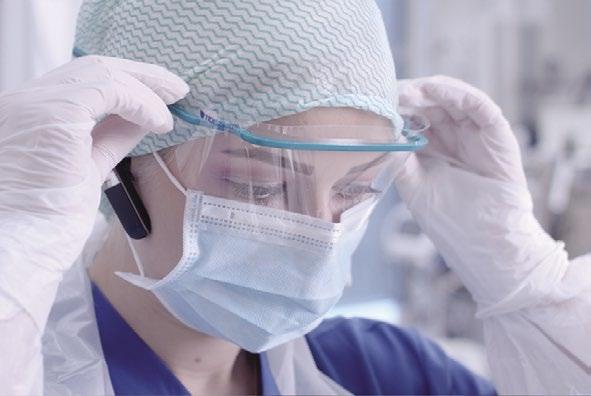

Collaboration is the key. To make the investment, digital medicine manufacturers need a long-term vision from the government for the systematic development of digital medicines as a new high-tech industry. In the deployment of new health technologies, it makes sense to use a model of public-private collaboration to bring the necessary solutions to market more efficiently, quickly and flexibly. For the introduction of more complex technologies, it makes sense for the public sector to work with companies that specialise in solving a particular problem with longterm investment. It is not possible to create a single, centralised, generic system to support the treatment of thousands of conditions – it can only work as an ecosystem of different services and solutions. “Together, we are working to take these messages to decision-makers and, in partnership with government, to build this critical ecosystem,” says Birgit Krieger, CEO of SpeakTX, a digital speech therapy support platform.
Another association that helps boost the health economy is Health Founders, the first health tech accelerator in the Baltics. The people involved in DTx Estonia and Health Founders are all more or less intertwined, but the latter comes in with helping early-stage startups through their wide network of mentors with long-term healthcare industry experience. Co-Founders Erki Mölder and Siim Saare saw the gap in the digital health sector and joined their knowledge that they’ve gathered for decades in healthcare and business development. “The digital health sector is predicted to grow 30% annually over the next five years and reach 640 billion by 2026. This is fuelled by technological advancements and favourable government policies due to the pandemic. All this creates a massive opportunity for new entrants with solutions that have a global impact. There is a saying that the world’s biggest problems are also the biggest business opportunities. Nowhere is this more true than in healthcare,“ says Saare.

Migrevention was established by Katrina Laks, along with three other founders, with a mission to build the first ever digital headache clinic. It may sound specific, but there are in fact more than 1.4 billion people around the world suffering from migraines and other types of primary headaches. Most of them would truly benefit from better evidence-based treatment, to gain control over their own health and lead a high-quality life with this disease.
Besides having a natural interest in biotech and health tech innovations as a PhD candidate in chemistry and genetic engineering at TalTech, Katrina has a significant personal history with migraines herself. Eight years ago she had to learn to speak and walk again, as a result of extreme complications from the disease. Thankfully, she managed to fully overcome this tragedy, thanks to countless hours of therapy and medical help, and the experience made her a passionate advocate for migraine and headache patients.

Laks admits that digital innovation in headache treatment and management holds huge potential, both for patients and healthcare providers.
“Only 1-4% of migraine patients get evidence-based treatment, which really is scientifically proven as the most efficient way,” she says. “At the same time, the medical costs for treating migraines reach up to 150 billion euros per year in the EU alone. Managing headache patients in a traditional way brings a huge burden to the healthcare system, with no real quality advantage in treatment compared to digital therapeutics.”
Migrevention Digital Headache Clinic, which has been mentioned recently by Sifted as one of digital therapeutic startups to watch, is dedicated to supporting the headache management journey. Migrevention’s platform brings together several supportive solutions, such as the head-
Katrina Laksache diary application followed by nurse counselling. It means that the user takes responsibility for managing their own health by marking down episodes, pain level, possible triggers and taken medications in a digital diary. Then an asynchronous chat with a headache nurse helps identify problems and find fast solutions. Their fully digital therapeutic solution is already in clinical intervention study, led by Tartu University Hospital.
Laks finds Estonia to be an ideal test bed for any starting company like Migrevention. “It is highly beneficial to first validate your wild ideas in such a small but tech- and science savvy environment, before going after the rest of the world,” she says as the company is preparing for the expansion to the UK and Middle East.
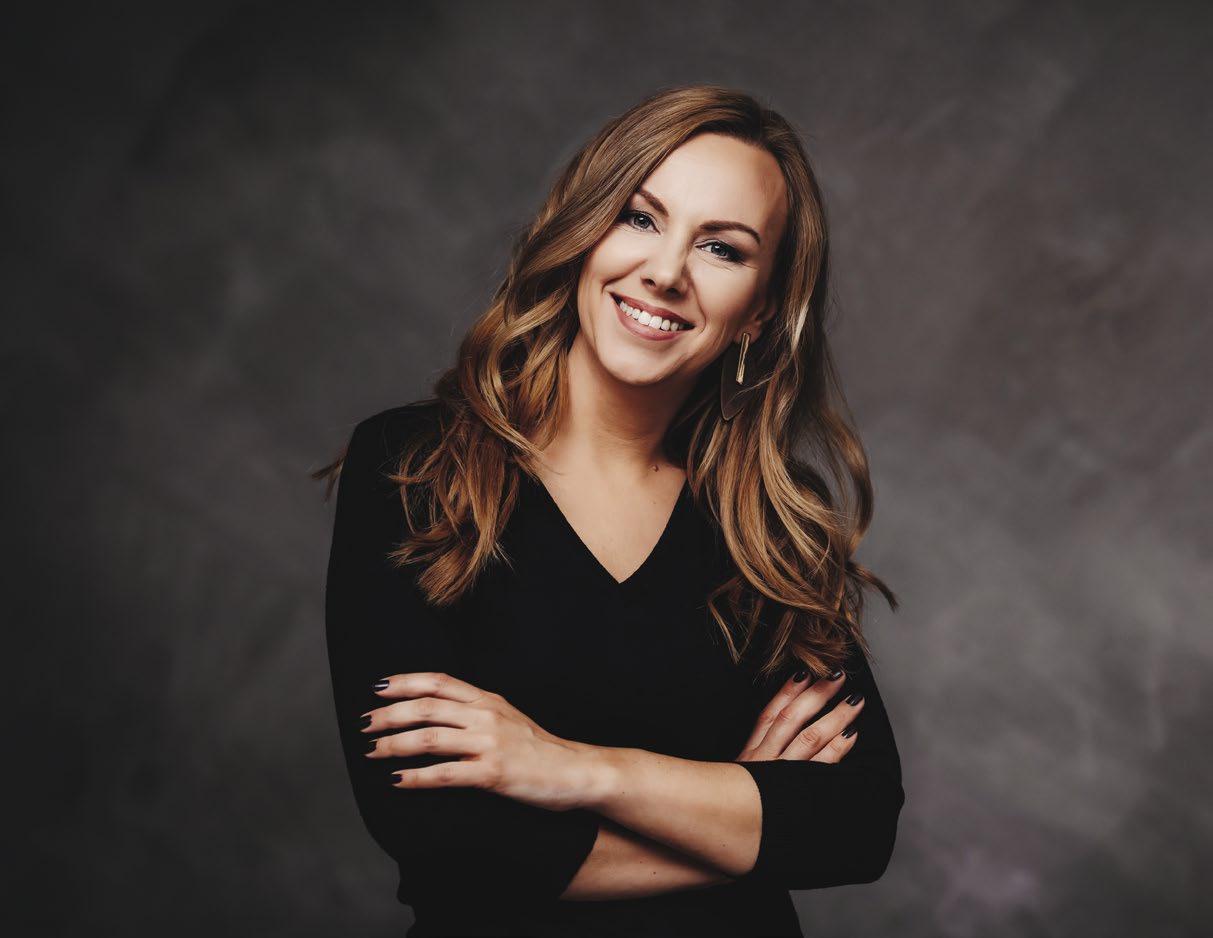
The purpose of SpeakTX is to make the speech therapy process interesting and engaging for the children and patients and to provide support to the specialists.
SpeakTX digitalises speech therapy to enable personalised therapy sessions and give flexibility and increased control over the exercises. Speech impairment is a common problem among children, but restoring speech and language skills is also needed with post-traumatic patients or in the case of neurological impairments. “The shortage of speech
therapists is global, and access to speech therapists is inadequate everywhere, so we simply cannot meet the therapeutic needs of all patients and provide an adequate level of service using traditional methods,” says Salome Virkus, SpeakTX head of business development. “The demand for a digital environment came from therapists, who saw the potential to develop and improve speech therapy – by making it more effective and shorter in duration, help would reach more people and be more affordable. However, the specificity of speech therapy is language-based and exercises need to be adapted to each language environment. So, as is typical of a startup, our core team in Estonia is quite small, but we are proud of SpeakTX’s international team of developers and speech therapists working in different countries. In addition to Estonia, we are currently active in Latvia, Lithuania, Georgia and Germany, and we are in the process of creating local teams in several other countries,” adds Virkus.
Speech therapists have estimated that using the SpeakTX environment can save up to 30% of contact therapy time. Regardless of whether the speech therapist is paid for by the private client or by the state, this is an opportunity for huge resource savings. Virkus says that while Estonia will always be the birthplace of their story, their aim is to contribute to the export of innovation and to cement Estonia’s image as a technological trendsetter. “Estonia has been for decades proud of its innovative thinking and numerous technological achievements. A community of people has emerged here who think about creating a better future and are willing to put a lot of energy into it. Distances are short, not only geographically but also between people, making it much easier to turn ideas into reality than in many larger countries.”
Salome VirkusCo-founder and executive advisor of SpeakTX, Andres Mellik, has been creating digital health solutions already before the term ‘digital health’ even existed. His company, Cognuse, is offering software solutions for critical disease management and rehabilitation and is actively participating in DeepTech R&D activities with large academic and healthcare partners both in the USA and the EU.
Just before the pandemic hit, Mellik founded CoNurse.net for solving a widespread issue in healthcare – the lack of systematic support for medical professionals like nurses. CoNurse allows the convenient integration of nursing-related guidelines and protocols into the workflow, but it is also able to support, for example, the loved ones of a stroke patient. The startup has also become a tool for students and nurses who are just starting out, as it helps them to effectively learn and reinforce
procedures. For experienced nurses, CoNurse provides support when conducting and remembering critical, complex and infrequent procedures. The smartphone app also supports nurses in setting up medical devices and conducting tests.
A year ago, CoNurse received funding via the applied research programme of Enterprise Estonia for R&D. With the support, the CoNurse solution will be coupled with a predictive model that helps identify when a nurse needs extra support to carry out a procedure. The project will also involve exploratory interviews with nurses and nursing managers from several hospitals, including the Johns Hopkins Hospital in the US and Bamberg Sozialstiftung in Germany. The goal is to create an advisory board of nurses that will draw on practical experience to contribute to the future development of CoNurse and provide ongoing feedback.
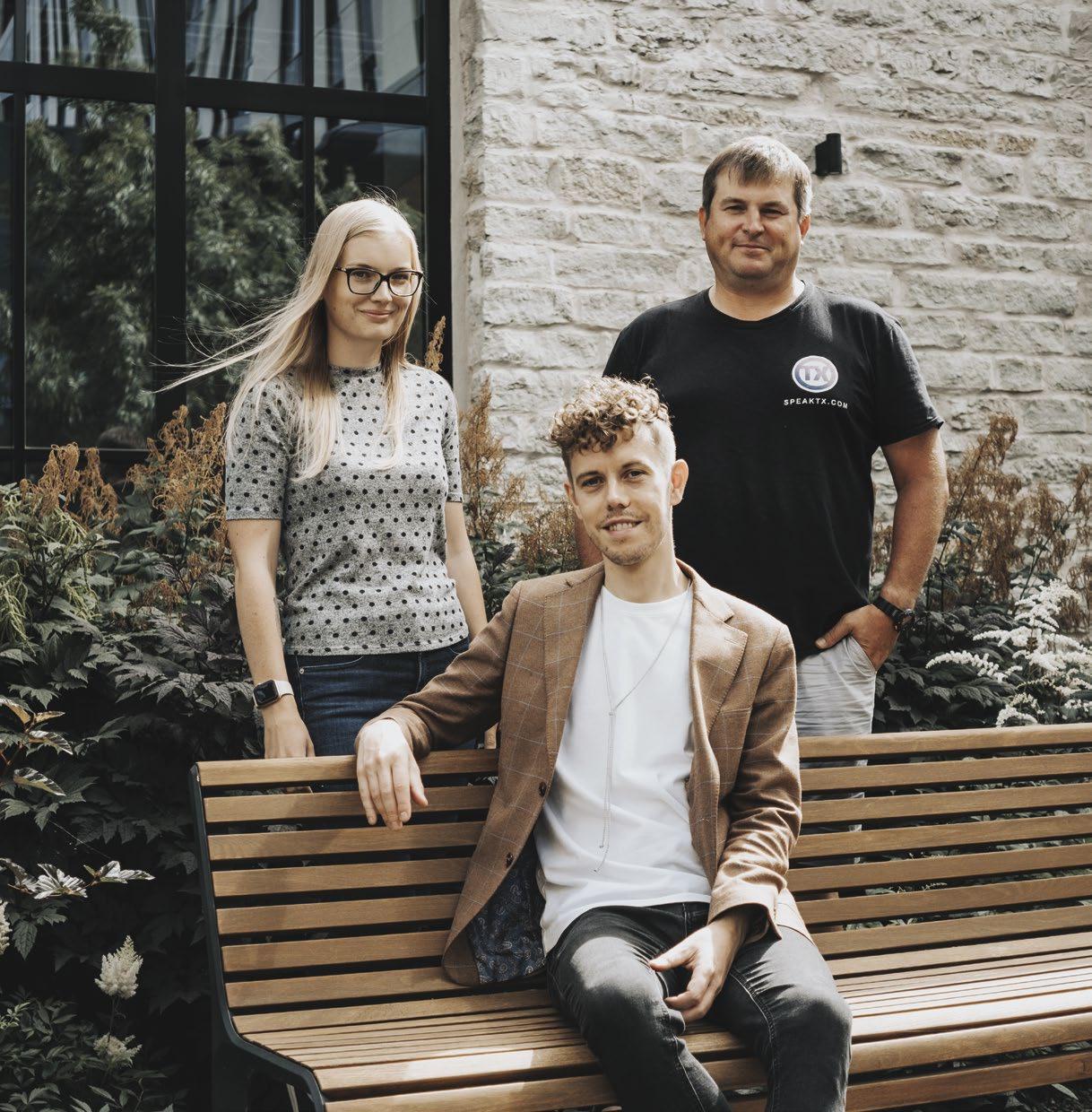 Birgit Krieger, founder and CEO of SpeakTX, Andres Mellik , co-founder and executive advisor of SpeakTX and Jürgen Järvik
Birgit Krieger, founder and CEO of SpeakTX, Andres Mellik , co-founder and executive advisor of SpeakTX and Jürgen Järvik
Besides leading the Health Founders accelerator, Siim Saare is a founder himself. He describes himself as a former corporate CEO turned startup entrepreneur, who after almost fifteen years of working for global brands, wanted to continue in the technology and venture space. But on only one condition – to make an impact. “I believe that we need more people from different professional backgrounds to help build the new health economy. Healthcare is one of the largest industries in the world and it will go through a significant transformation over the next decade,” says Saare.
Saare’s startup Activate Health is creating a solution to predict and prevent heart disease, and this year it already reached Sifted’s “15 digital therapeutic startups to watch” list. Activate Health’s ambitions aren’t modest, quite the contrary – it’s looking to solve a major global problem, as heart disease is the world’s most abounding silent killer and a major burden on healthcare systems worldwide. With 18 million or 32% of all deaths annually – more than all cancers combined – it is now called a global silent epidemic.
“Cardiovascular disease is of special significance in Estonia as the major cause of premature deaths, with the consequence that Estonia has one
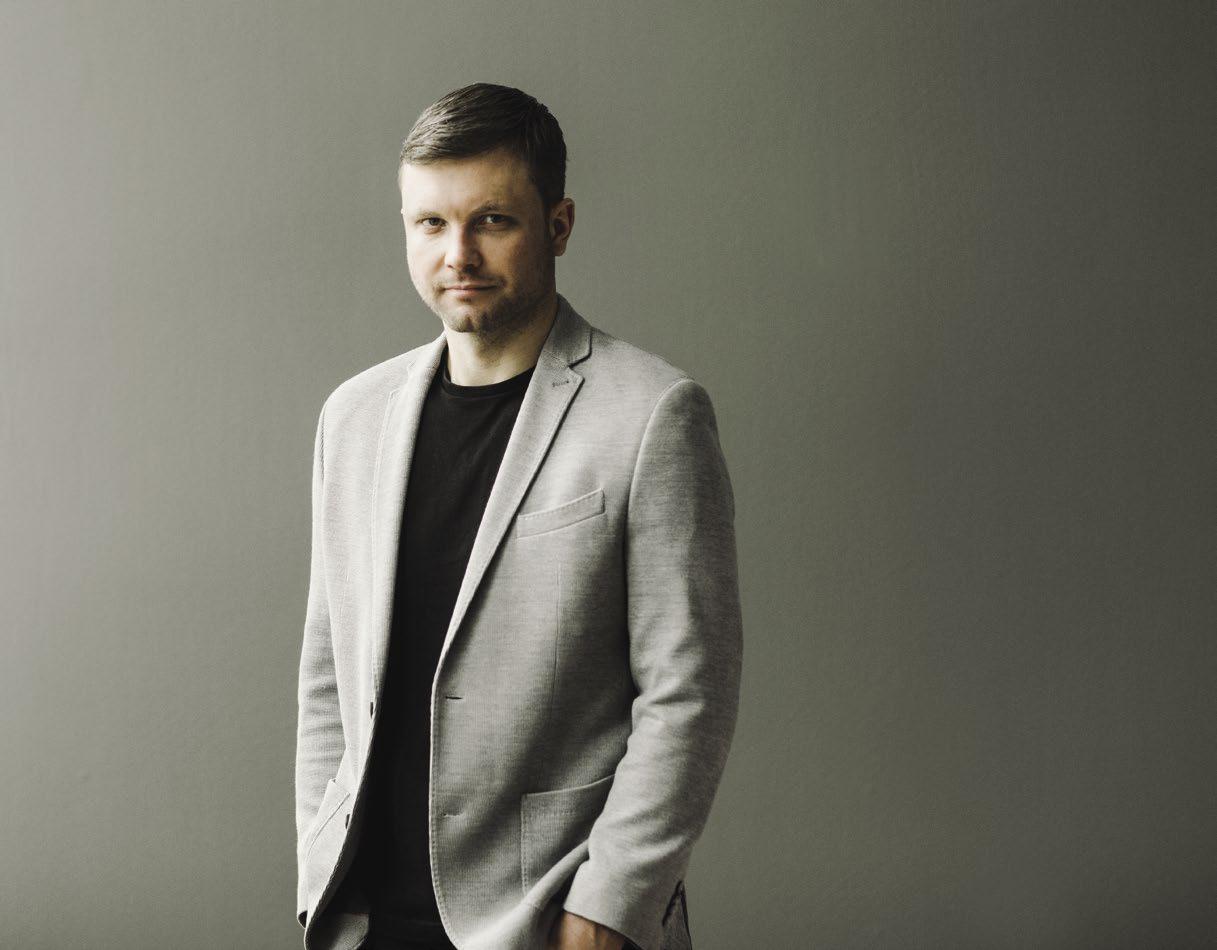
of the lowest levels of healthy life years in the EU. We decided to take action and brought together a team of experienced Estonian doctors, scientists, and engineers with a common belief that the future of healthcare is more personalised, predictive and preventive. We are science-based technology company that runs clinical trials with a mission to extend the human healthspan on a global scale,” says Saare.
“In 2022, we received a grant of 1 million euros from the Enterprise Estonia Applied Research Programme to develop our digital therapeutic platform together with the University of Tartu, Estonian Biobank and SYNLAB. The solution will help identify elevated cardiovascular risks as early as possible and monitor and manage specific risk factors such as elevated cholesterol, blood sugar, blood pressure or obesity. This year, we got accepted to the highly acclaimed Oxford University Hospitals NHS Trust accelerator to bring our technology to the UK market.”
According to the World Health Organisation, one in four adults, i.e. 1.5 billion people, live with elevated cardiovascular risk, in many cases without realising it. This is because most of the risk factors associated with heart disease don’t have visible symptoms, until a major cardiac event such as heart attack or stroke happens. This means that inevitably, most of us will be touched by this topic sooner or later, either directly or in our families. Although 80% of premature heart attacks and strokes are preventable, there are a lack of evidence-based digital solutions that would help people identify the potential risk before symptoms appear and intervene in time, before a more serious health problem or lifelong chronic disease develops.
Siim Saare By Indrek Mäe
By Indrek Mäe
Mental health problems such as depression, are increasingly widespread in Estonia. Therasync, a local startup, aims to save on the time of specialists and guarantee that help reaches as many patients as possible. Investors have a chance to contribute to the innovative solution.
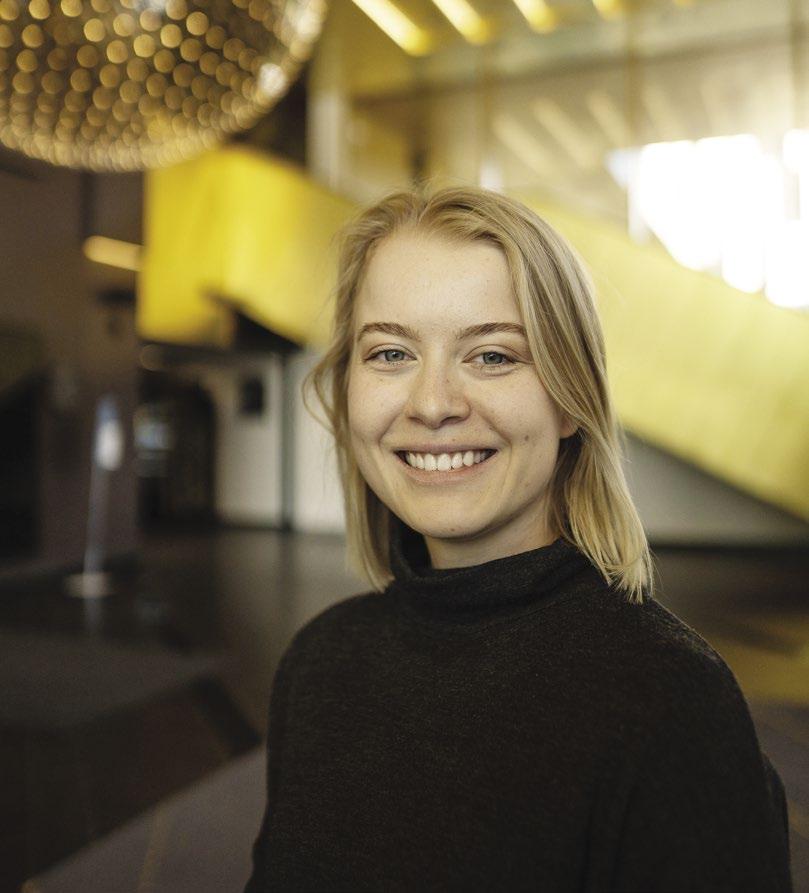
Therasync is based on a simple idea – the startup creates an environment that helps several specialists to simultaneously analyse the situation of a patient grappling with mental health issues. “Currently, the most critical bottlenecks in the field of mental health are the ineffective and time-consuming collections of health data/ patient history, data fragmentation and the lack of inclusion of patients in their own treatment process,” explains Ann Leen Mahhov, CEO and co-founder of Therasync. “The treatment of depression is a complex process which requires the intervention of and cooperation with various specialists. In 2021, the Health Insurance Fund mapped the treatment journey of a working-age person suffering from depression and it turned out that the cooperation between the specialists of different fields is currently insufficient and unregulated.”
Mahhov adds that Therasync creates a common communication platform for treatment teams, which includes the patient, their loved ones and all members of the treatment team – the GP, the mental health nurse, the psychologist, and the psychiatrist. They are currently testing the first version (MVP) of the Therasync platform and usability testing started at the beginning of March. The platform acts as a case manager for a patient’s health data. “We save on the time of mental health specialists and offer health clinics the opportunity to increase the quality of their services,” says Mahhov. “In the first half of this year, we will begin testing the platform with treatment teams as well as patients.”
“Since the creation of Therasync, our team has organised various workshops with patients and clinicians, and also done a concept test on the Pipedrive platform. In addition, we have carried out research and created a prototype together with the NGO “Peaasi” (Head Matter – ed.) which involved more than six hundred patients,” Mahhov gives an overview of the activities to date.
Mahhov estimates that the market for the Therasync product is rapidly growing. According to data of the World Health Organisation, more than 280 million people suffer from depression worldwide. “It is one of the most common mental health illnesses in the world,” she says. The need to treat depression is evident as it leads to a significant loss of health and employment ability, increases the need for emergency medical care and hospitalisation as well as the risk of suicidal behaviour.
Recently, awareness of mental health issues has significantly increased, adds Mahhov. “This applies especially to the last couple of years, which is likely due to several factors – the COVID-19 pandemic, which brought about an increase in stress, anxiety and depression as well as other mental health issues,” she says. “The pandemic proved that solutions not widely used before, turned out to be very successfully applicable. In extraordinary circumstances both patients and specialists had to get used to digital solutions and environments,” she says, referring to the increase in online appointments which remain popular to date and enable treatment to reach patients outside big cities.
Ann Leen Mahhov“Also, everything to do with the war in Ukraine has impacted on people’s mental health. Therefore, many more people seek information about mental health and opportunities to take better care of and support their mental health,” she says.
Social media can also have a negative impact on mental health. “There are many research studies which confirm that the regular use of social media may lead to the development of mental health problems, especially among young people,” says Mahhov.
However, social media also has its positive aspects. “It enables more access to mental health resources. There are many influencers and specialists who share evidence-based valuable information through social media channels, thereby helping to raise awareness and reduce stigmas,” says the CEO of Therasync.
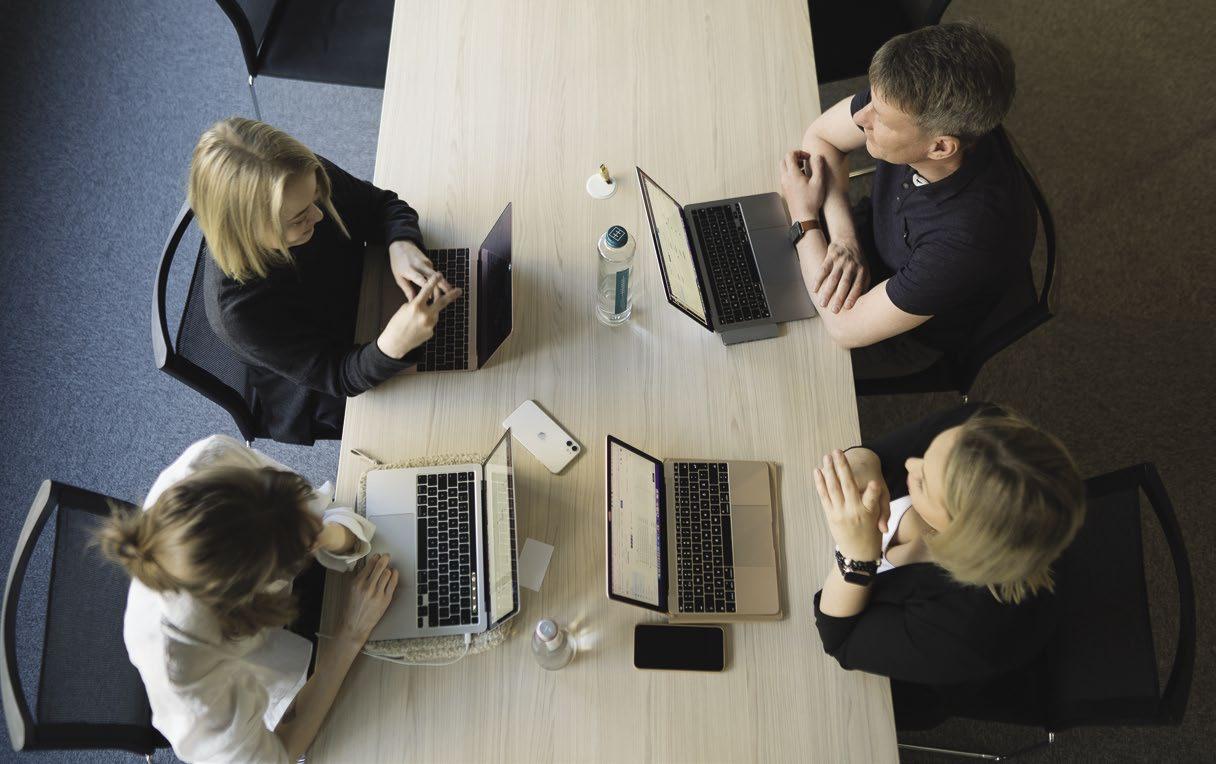
According to Mahhov, it is a positive development that over the past 1020 years, there has been a significant reduction in prejudice, misconceptions and ignorance around mental health issues. “It has made it easier for people to seek help and talk openly about their concerns,” she says. “Campaigns to raise awareness have become more frequent in recent years, which in turn encourages people to intervene early, to notice the need for help for themselves and their loved ones, and to turn to a specialist if necessary.”
Mahhov believes that this has led to an increased demand for discussion of mental health topics in society. “There have been societal and cultural changes,” she says. Technological advances are also helping to address mental health concerns.
Therasync has the expertise to help address these challenges, Mahhov says. “We have a very diverse team, with team members with experience in medicine, project management, product design and marketing.” She points out that Therasync has clinical expertise and practical experience in the healthcare system, as well as technological expertise.
“All of this helps us to ensure that the solutions we develop are evidence-based and in line with current regulations and legislation,” confirms Mahhov. “In doing so, we take into account the technological requirements to ensure user-friendliness, security and efficiency of the service. Thanks to the diverse backgrounds of our team members, we come up with truly unique ideas.”
Mahhov mentions openness, transparent communication, courage, and the willingness to learn from mistakes to continually improve as core values of the startup. “Our biggest advantage is a small but cohesive team working towards a common goal, but also the understanding that we cannot change the world alone. That’s why we have involved field experts, end users, technology companies and universities in our development process,” says Mahhov.
The platform is open to a wide range of investors as well as professionals in their fields to join the venture. “We are currently looking for funding as well as sector partners for the development process,” says Mahhov. “In the near future, we will start recruiting for new positions in our team, and through LinkedIn, anyone interested can sign up to participate in testing the Therasync platform or get in touch for a demo session.”
 By Maris Hellrand
By Maris Hellrand
Mariin Petoffer’s personal struggle with anxiety has led her to research and design a prototype that could help people with mental health conditions. As an interaction designer, Petoffer emphasises the goal that technology should make a human’s life easier, not interfere with it. The interaction between a human and technology should become natural and convenient.
When picking a topic for her Masters’ research in interaction design, Mariin Petoffer opted for an issue close to her: how to make emotions conveyed through a smart phone app tangible in a more natural way than is currently available? “I questioned people with different diagnoses to see how they handle their anxiety. For many sufferers of obsessive compulsive disorder (OCD) fidgeting is a way to calm down. This research led to ‘mental pin’.”
There are a variety of fidgeting toys on the market, but most of the time these don’t give feedback to their users. Mariin wanted to create something that would give physical feedback in real time: “I used in my research the scientifically proven method of interoceptive feedback. Feeling a physical connection to one’s pulse is an effective way to calm down.” The prototype, that Petoffer created in cooperation with engineers is a small pin that measures the pulse of the user and vibrates in the same frequency in response. The object helps to distract attention from the panic attack or the emotional reaction and turns one’s attention inwards. She considers this to be more natural and individual than the many applications that guide a user through different breathing techniques for calming.
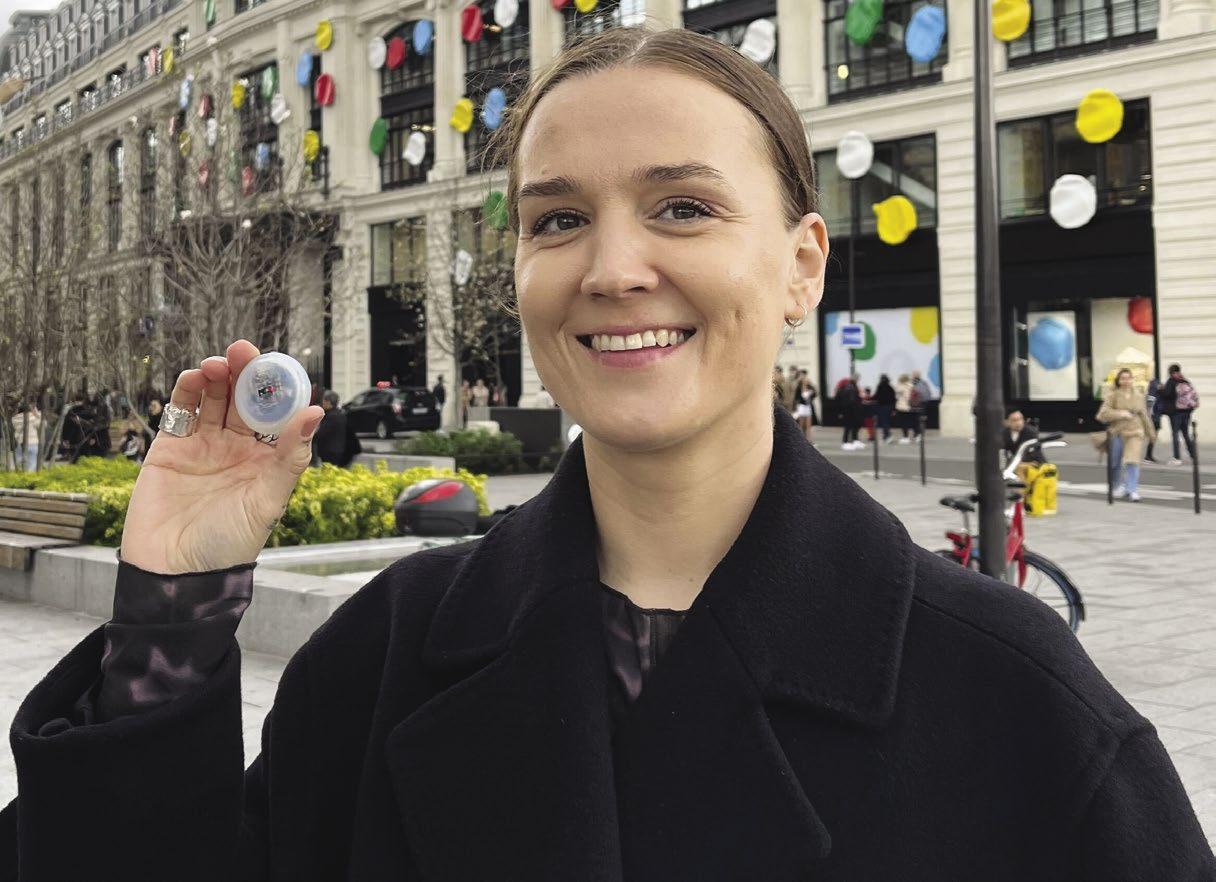
The research project led her to interactive garments that could give feedback to the wearer. However, this is still pretty much in an experimental stage at the moment. Petoffer says that the pin is hopefully more suitable for people with anxiety who quite often feel uncomfortable when wearing different devices close to the body. Also, the device is not measuring data constantly; the user can activate it when needed.
The pin itself currently only exists in twenty 3D-printed prototypes and the team is looking into the possibility of producing a few hundred in Estonia to be used on a test group. ‘Mental pin’ is also working on the software to help track the episodes and to offer a tool to monitor, describe and analyse the symptoms. After a while, mental health specialists and users can discover and analyse patterns and use this knowledge in therapy. Petoffer refers to her own experience: “While in therapy, I always tried to structure my thoughts of what to discuss. This systematic diary would have been very helpful.” First and foremost, people already in therapy or after therapy are the potential users of ‘mental pin’.
Along with the awareness of mental health problems there are more and more products and service providers who claim to help but might end up hurting. How to make sure that the device and the app will not interfere with the privacy of the users?

Petoffer assures that trust is crucial: “The issue of data privacy is at the core of the development. We don’t auto-collect data on users but rather offer a tool where they can enter their own data as they wish. And the users have control over access to data. In some cases, they might opt for sharing it with their therapist. The whole point is to offer a safe environment, otherwise it wouldn’t even make sense to develop this device.”
In terms of business, ‘mental pin’ is still in the early stages. So far, the founders have invested their own money and have just held the first talks with potential investors. Petoffer acknowledges that health related
Mariin Petofferproducts, especially those including hardware, are a much harder sell to investors: “We have established some promising relationships but they are waiting for us to show some traction first. We have to prove that we have a viable product and have done testing.”


Petoffer is hoping to grow the current team of three at least by adding a medical mental health specialist. She is adamant to stay science based and serious in a marketplace that attracts many unqualified ‘therapists’: “The only point in dedicating time and effort to developing this product is to create something that is actually useful and helps people.” Combined with academically valid content and advice, the ‘mental pin’ could be a trustworthy assistant for people affected by mental health problems.
Building a startup itself is quite a stressful activity and many people experience burnout and mental health problems while on this path. How do you manage to stay healthy yourself?
Mariin Petoffer: “I never dreamt of building a startup. The project was a natural follow-up from my academic research. It has been an experience of growing as a person, to make sure I stay calm and pay attention that the business doesn’t define me as a person. Also, being aware that every startup has a great potential to fail helps to keep calm. I just try to do my best, and if at one point the process is counterproductive for my own mental health, then I will put more focus back on it and get extra assistance to keep going.”
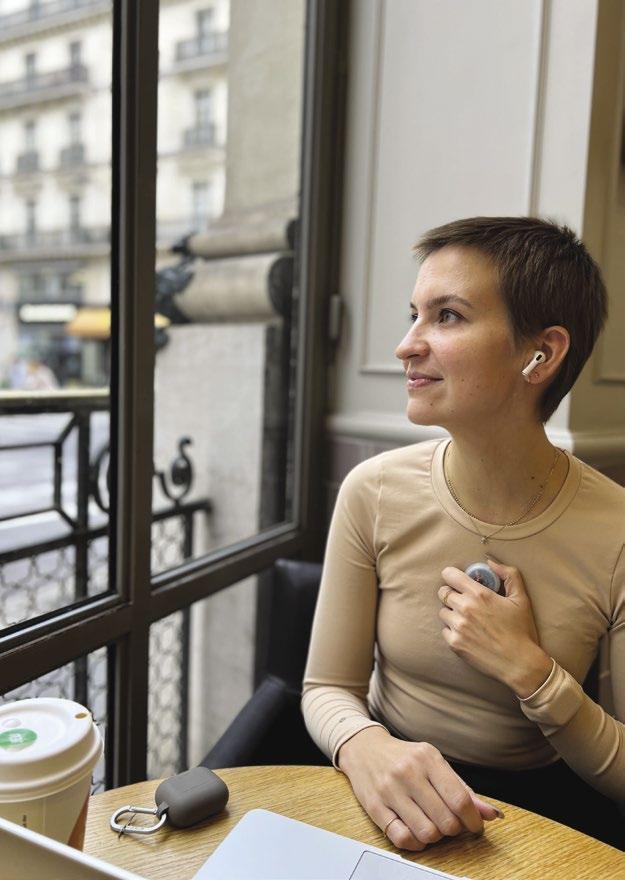
At a time when the number of cancer cases worldwide is on the rise, radiologists have an increasingly heavy workload. Estonian startup Better Medicine comes to the rescue by developing an artificial intelligence-powered system that aims to save up to 13 million manhours per year. Life in Estonia caught up with the company’s CEO Priit Salumaa.

Could you please describe the beginnings of Better Medicine. How did the idea for the company come about?
At the end of 2019, I left my paid job and started looking for a new challenge during the COVID-19 pandemic. As I was involved in the startup Garage48 hackathon series, Hack The Crisis and Global Hack, I saw that there was a lot of room for digitalisation in medicine and things could be better realised. I was looking for something that would have a positive impact on the world and the medical field seemed to fit the criteria I had set. In the meantime, I had gotten to know Dmytro Fishman, a researcher and now CSO at Better Medicine, Bohdan Petryshak our Chief of AI Engineering, and Martin Reim, a radiologist and now CMO at Better Medicine, and by discussing the issues, we realised that the problems Martin had raised in cancer diagnostics could be solved with the help of artificial intelligence. All in all, the world is currently spending too much time on routine and manual tasks that could be automated.
I have seen someone die of cancer in my extended family, but I also know people who have had cancer and been healed. This is an important subject for me, especially as I have been exposed to it and see how much suffering cancer causes globally. We found like-minded people and started gradually. As we delved deeper into the topic, it became clear that there are a number of manual and repetitive tasks for radiologists when measuring tumours. Once they find a tumour, they measure it by drawing lines, and in doing so, the radiologist also has to understand the dynamics of the disease and compare it with the patient’s previous scans. So it dawned on us that all the technical side of measuring tumours could be done by artificial intelligence. We estimate that automating this work could save up to 13 million hours of radiologists’ time worldwide per year. In other words, 1427 years of working hours could be saved in a year.
It is also important to note that the WHO predicts the number of cancer cases to increase by more than 27% over the next decade. The burden on both the diagnostic and medical systems will therefore increase, while the number of doctors will decrease. Both problems occur at the intersection of the ageing of society and humanity. Currently, cancer is predominantly a disease of the over 50s, but as society ages, there will be also less working age people. Our work is forward-looking and we want to contribute to these negative trends in order to diagnose cancer more effectively and save society’s resources.
The name of our company reflects very clearly that we want to improve medicine. The output is that we build intelligent tools for doctors to provide better care to their patients. Our potential users are radiologists all over the world who use it in their onco-diagnostic work.
This is our third year of working as a team, but we set up the company only in late 2020. So far, we have built the first four proof of concept models, started collaborating with Tartu University Hospital and Pärnu Hospital to clinically validate these models. We are building a medical device with artificial intelligence as a key component, and we have now developed, among other things, the software infrastructure to package this intelligence. We have also raised money and set up a digital office in Leeds, England.
These have been successes, but have there been setbacks?
My two previous businesses were in the IT sector and now I’m in the medical sector, and it’s been very difficult for me to get used to how slow processes in medicine are and how traditional the sector is. It is much more difficult to innovate here than in less regulated sectors.
How many companies are there on the market dealing with the same issue, and what are your advantages over them?
There are quite a few companies that deal with a similar subject, but our main difference is that we have a full body approach. We understand that we need to move as quickly as possible to be able to measure the whole human body, because that’s the only way we can help radiologists. A single organ model: for example, the breast, the lung or the prostate, will not have that effect. Technologically we also have an advantage because we are inventing a new way of training Artificial Intelligence, for which we have also filed a patent. It’s very experimental and we don’t know if it will work, but we have a concept for how to develop AI in imaging in the future in a different way than we do now. We have attracted funding from private investors and received a grant from Enterprise Estonia to develop and clinically validate our models. We are currently engaged in research and development, which could lead to a product.

How do you see the current medical tech landscape in Estonia: which companies are involved in necessary and exciting ventures and what are the prospects in this market?
It’s interesting that four years ago there were not very many startups in the medical sector, but COVID-19 gave a strong impetus to their creation. A whole range of new medical companies have emerged in Estonia in the last few years, solving a wide variety of problems, from digital therapies to artificial intelligence solutions like ours. The whole sector is getting a lot more attention and new things are emerging. At some point there was a wake-up call leading to the creation of many new companies. Not all of them may succeed because it is a very difficult sector to operate in. But it does give hope that there will be innovation in this sector, which helps to save resources, and that doctors will become more accurate, the sector will move towards more preventive healthcare and people will have more control over their health. Our hope is that the health insurance system, that we, as citizens, sustain, can continue. Otherwise, there is a risk that the health system will be very grossly underfunded and people will face terrible inequalities in access to treatment and medicine. This is where technology can come to the rescue, so that there is less suffering and less inequality in the world.
 By Ronald Liive
Jack Kreindler, Liis Narusk and Taavet Hinrikus
By Ronald Liive
Jack Kreindler, Liis Narusk and Taavet Hinrikus
The healthcare startup and digital disruptor Certific has turned their gaze towards challenges in primary care. Their brand new solution – a digital communication and engagement platform for primary care – lets patients talk with physicians in a secure and simple way.
“The new solution is a continuation of our expanding product portfolio, yet it addresses the same core problem that is also reflected in our mission: to make medical services more accessible to patients, allowing them to take more responsibility for their own health,” says CEO and co-founder Liis Narusk.
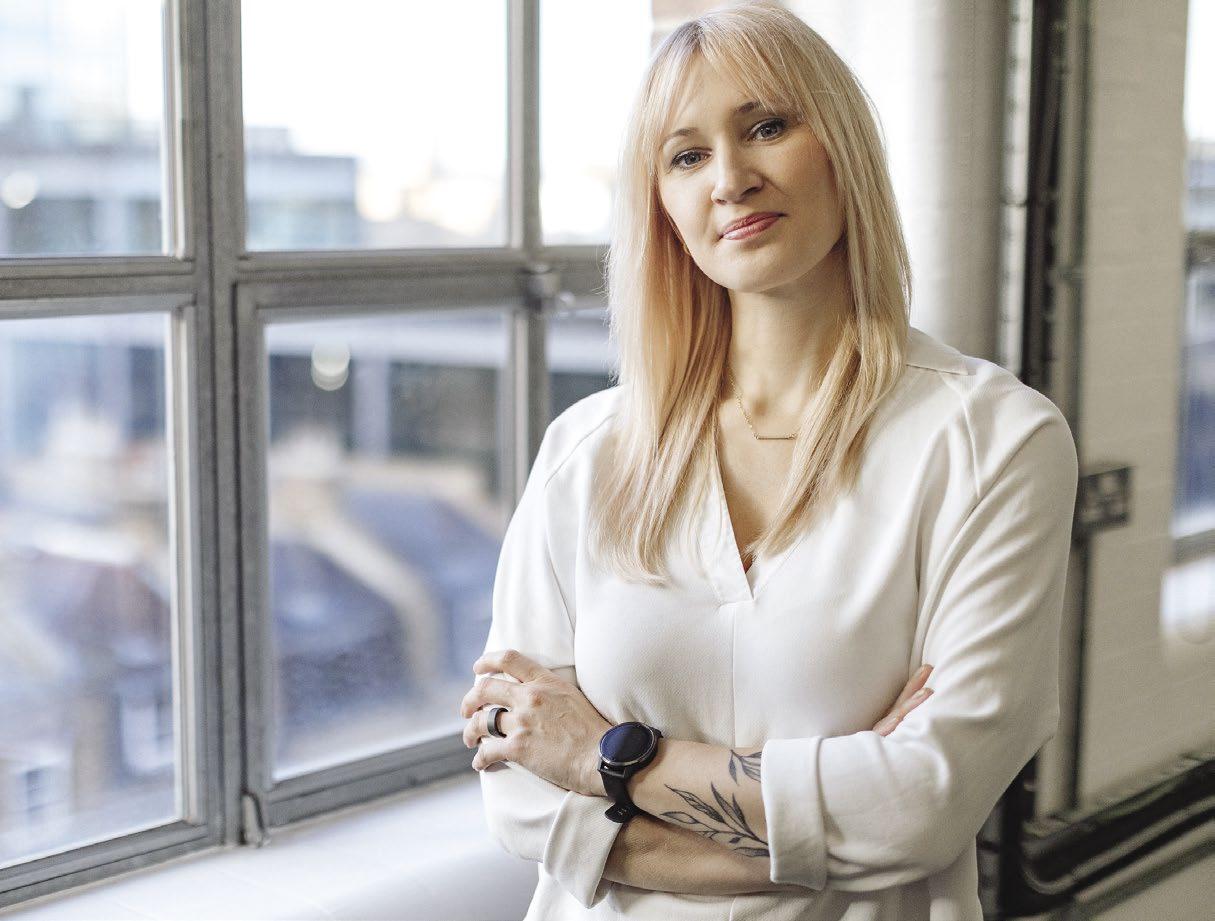
“By this we mean providing better preliminary information about their health to doctors to reduce the time spent on diagnosis, as well as enabling patients to perform analyses and tests without leaving their homes, alleviating the workload of doctors,” Narusk adds.
Certific was founded by entrepreneur Liis Narusk, the co-founder of Wise (previously TransferWise) Taavet Hinrikus and Dr Jack Kreindler. Hinrikus has invested in many startups before, but Certific is the first one where he saw that putting his hard-earned money in is not enough and he wanted to take on a bigger role. Certific got its start in 2020, right at the time when COVID testing was in full force all around the world. Although the company started off with at-home certified COVID tests, the CEO Narusk affirms that COVID was not the main force behind starting the company.
“We did not start Certific to solve only the COVID-related issues. We had a very clear goal to create change in the healthcare system. COVID highlighted the concerns in a particularly sharp way and created a stronger sense of mission for us,” says Narusk.
In the early summer of 2022, Certific expanded their at-home certified tests to include UTI and STI tests that can be purchased 24/7 in one of their main markets – the United Kingdom. According to Narusk, this marked an important milestone for Certific, bringing healthcare closer to people and making it as accessible and convenient as other essential items.
Also in the summer of 2022, Certific raised around 7.4 million euros from investors. After that, most of the team’s energy has been put towards the development of their most recent product – a platform for primary care practices. The first client was signed in the beginning of this year, only three months later they already had 18 centres on board with another 40 in talks.
“The crisis in the primary care sector and the pressures on services, especially during the post-pandemic period, are evident. Family physicians and their practices around the world are at a breaking point. Still, we see that as much as 40% of healthcare involves admin and doctors having to do repetitive tasks. This should not be the case, and Certific’s new platform is designed to take these tasks out of the hands of medical staff,” says Narusk.
Certific provides patients with an easy way to contact their GP or primary care centre. After logging in, patients are presented with a variety of options depending on their needs, such as requesting a repeat prescription or medical certificate, or discussing a health concern with their GP. The patient is then guided through a questionnaire that collects relevant information about their clinical history.
The query is then sent to the clinic’s dashboard where the staff can access a brief summary of the patient’s health concern and manage or assign tasks among the team. This enables the staff to prioritise and treat high-priority cases promptly without wasting time transcribing phone calls or conversations.
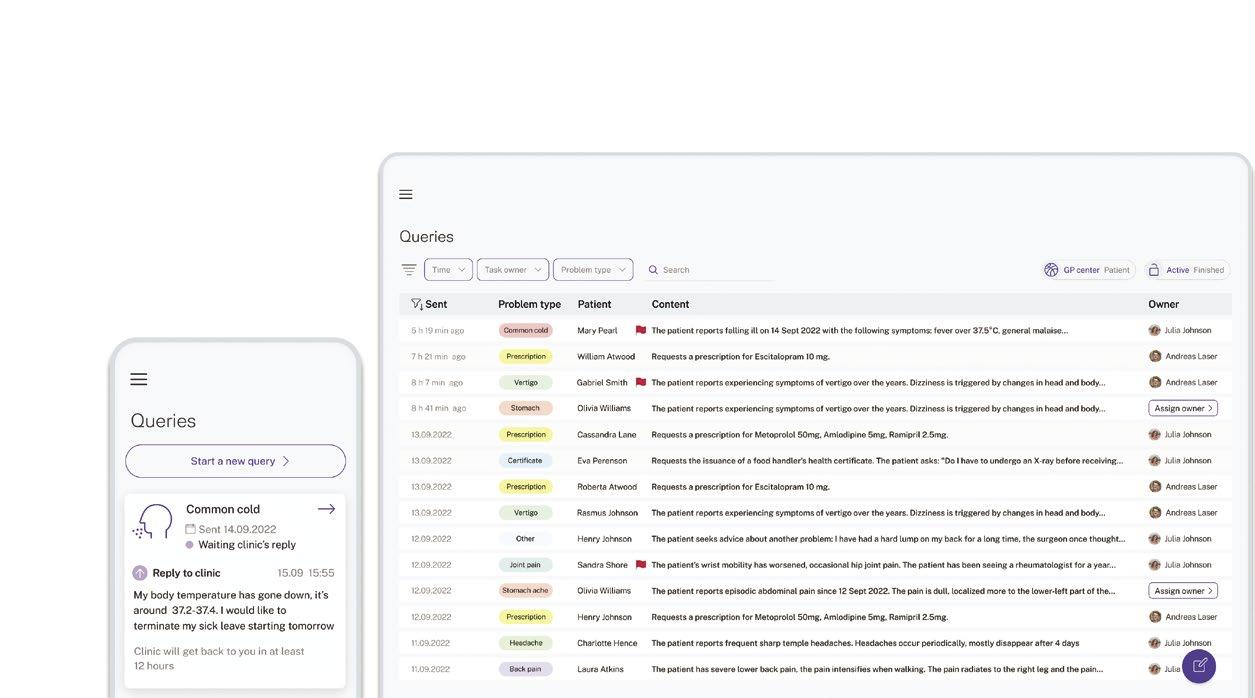
Rather than communicating through lengthy phone calls, the platform generates a concise medical summary of the patient’s health concern, which can be directly copied into the patient’s medical record. Additionally, staff can communicate directly with patients via the platform, eliminating the need for multiple phone calls or missed communication.
“Patients no longer have to wait until Monday morning to contact their GP since a query sent over the weekend will be available to the clinic as soon as it opens. This saves the staff time answering phone calls and triaging queries, allowing them to focus on providing better care to their patients,” Narusk adds.
Besides Estonia, Certific’s platform is also being implemented in the first centres in Ireland and Romania. One might ask: why these three
countries? Suitable regulation and little red tape are the reasons, according to the CEO.
“We can sell our platform to primary care centres in these countries without too much bureaucracy. These countries are also hungry for digital solutions. They are also ready to implement them.”
Although Estonians have been accustomed to using a secure digital electronic identification solution for about two decades now, Certific also needed a way for the residents of other countries to use their platform securely. That’s where another Estonian startup came in handy. To access Certific securely from all around the world, they implemented the solutions developed by Veriff.
“Security is a vital part of healthcare. It was not even up for debate whether we use Veriff or not. They are the market leader in their field”.
Simply put, a patient needs to scan their government-issued document through Veriff and the system checks from a variety of databases whether it is a valid document and whether the person presenting it is the person shown in the document.
Thanks to the 23 centres using Certific’s platform, around 70,000 patients can reach their family physician in a more streamlined way. Narusk says they will develop new functionalities with the help of both their inhouse doctors as well as physicians using the platform as time goes on. Everybody that can use a smartphone can easily make use of Certific.
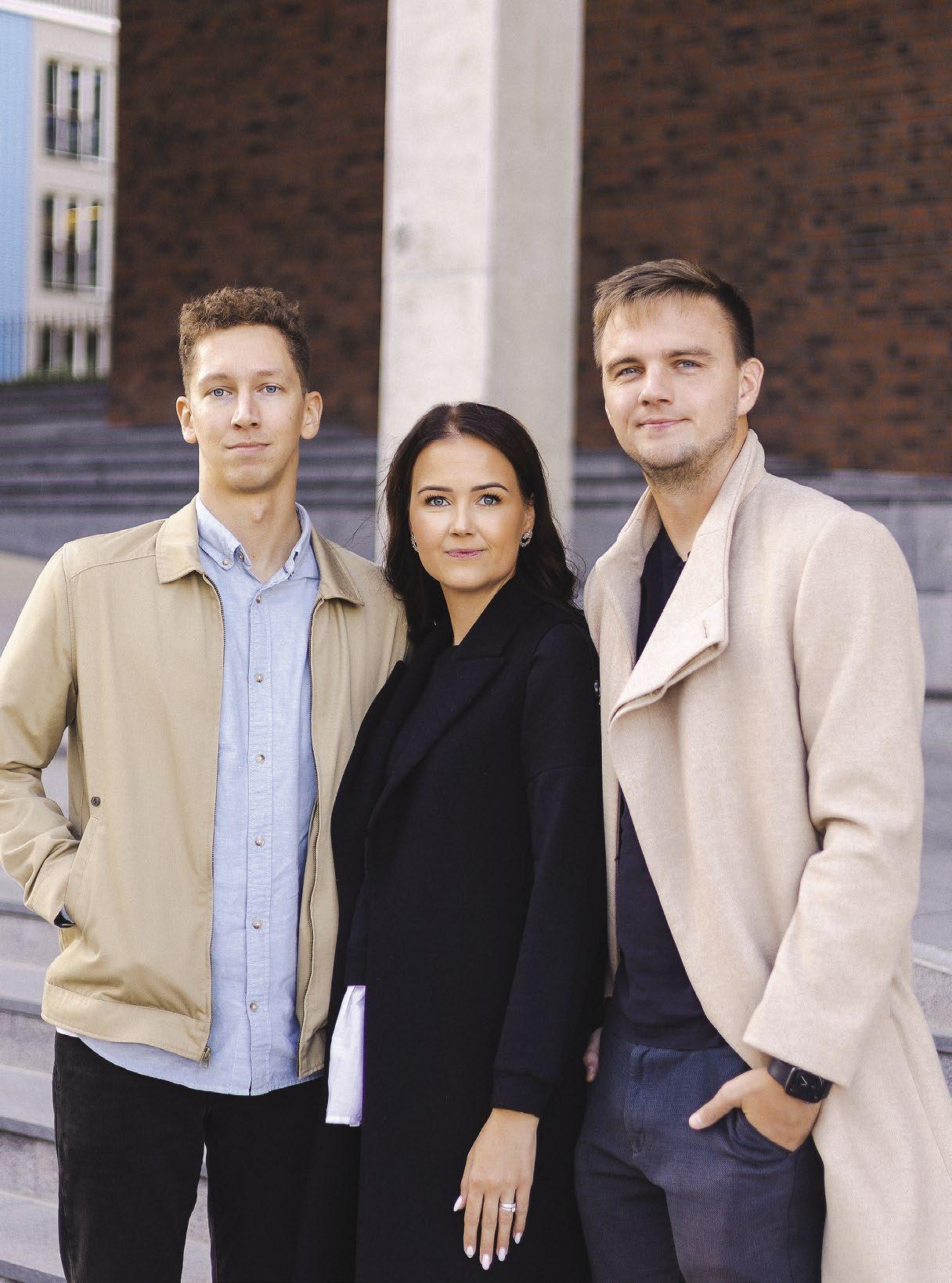 By Ronald Liive
By Ronald Liive
Clinical medical trials play a crucial role in the development of new medicine, therapies and medical devices. These trials are conducted to test the safety and efficacy of new treatments, with the ultimate goal of improving patient outcomes and advancing medical knowledge. There are several stages of clinical trials, each with its own specific goals and requirements.
Andreas Ellervee, Anna-Liisa Parts and Jürgen LorenzStill to this day, the personnel conducting trials are using pen and paper to mark down crucial observations. To speed up the trials and provide long-awaited innovation, Menken Trials is working on a platform that will change everything. It’s not just a simple digital version of the old solution but rather a whole new streamlined solution for it.
Clinical trials are divided into four rigorous parts. At first, with a handful of volunteers, medical professionals evaluate the possible side-effects, safety and the best dosage. If no serious side-effects occur, then the effectiveness of the medicine is evaluated with a wider number of patients during a second round. For example, does a cancer medicine shrink or stop a tumour from growing, and what dose of medication is the most effective?
One of the most important aspects of clinical trials is the use of randomised, controlled studies. In these trials, participants are randomly assigned to either a treatment group or a control group, which receives a placebo or an existing standard treatment. This helps to ensure that any observed effects are truly the result of the treatment being tested, rather than other factors.
In phase three trials, the medicine is compared to those already available on the market. To do this, thousands or even more patients around the world are needed. The medicine can be sold to the general population only after all three phases have been successful.
As people’s health and lives are in question, everything needs to be protocolled during the trials in minute detail. The scientists, doctors, nurses and patients need to keep track of every potential side-effect and effectiveness of the medicine. This means filling a lot of paperwork.
Menken Trials is a startup taking clinical trials into the 21st century. It’s not just a paper or digital version of the same things, but a streamlined approach to the trials at large.
With the help of built-in compliance checks, it helps to accelerate the process while keeping quality and error elimination in mind. It offers automated protocol workflows, intuitive quality checks and effective document management. Allowing institutions to close studies more efficiently, with less time and fewer expenses.
Menken Trials’ story is a classical startup story. It grew out of personal need and necessity. Anna-Liisa Parts had worked in the clinical trials industry for over ten years and during that time she faced quite a few problems. One day she asked her brother, Jürgen Lorenz, who happened to be a software engineer, whether and how technology could help to solve the problems she had experienced. Jürgen then contacted his old classmate Andreas Ellervee, a developer with experience in healthcare systems, and together they started to play with different ideas and discussed the possibilities that technology can offer. “We then decided that we should try to make things better,” described co-founder and CEO Lorenz.
Despite the important role clinical studies play in advancing medicine, some experts argue that traditional clinical studies are outdated and
in need of modernisation. Critics argue that traditional clinical studies are often slow and expensive. Lorenz said they are not afraid to bring disruption and new thinking to a field that is still accustomed to filling things out on paper to this day. “Our innovation is to make clinical trials more efficient so that doctors and nurses can focus on important tasks like patient management. With the big goal of getting life-saving medicine to market faster.”
Since 2000, the number of tasks professionals need to perform has increased by 60% while the average time it takes to conduct a clinical trial has extended by two to three years over the last decade. This in turn creates frustration for doctors and other personnel who conduct them, according to Lorenz. “Studies have shown that about 50 to 60% of doctors decide to participate in only one trial during their career. We want to make things easier for them to manage. This would then help to bring life-saving medicine to the market faster,” he described.
Yet another reason the sister-brother duo are so eagerly working on their idea is because Alzheimer’s and cancer run in their own family.
Menken Trials ran a test-project with the help of Tartu University Hospital to see how their solution works in the real world. Now they are in the process of being used in a real world scenario during a clinical trial.
The company has now started the process of entering the US market. Though clinical trials are run internationally, being present in a country where many pharmaceutical manufacturers are located is helpful. Parts says they are fortunate to have exceptional advisors from top eSolution companies who possess valuable insights and expertise that can aid them in their endeavour. “Our clients are the companies producing the medicine, so we want to be closer to them. The regulations for clinical studies are strict all over the world, especially in our home market – the European Union. They are a bit more lenient in the United States,” Parts says.
Lorenz sees that all the work they have put in over the past few years might pay off this year. He is looking forward to a bigger breaking point that will help to reach clients in the US and also in the UK.
The team has taken part in many various startup accelerators. At the moment, they are a part of Creative Destruction Lab Estonia that helps them build their platform using data gathered from the world’s most advanced digital society: Estonia.
Their success has not gone unnoticed. They have come out on top in multiple accelerator programs and hackathons, such as Superangel Base Camp and Prototron, and also brought home many prizes from local startup events. Their most recent award came from sTARTUp Day’s pitching competition.
 By Indrek Mäe
By Indrek Mäe
A Finnish high-tech growth company developing cryotherapy technology in Estonia sees the local business environment as an engine that helps it rapidly grow its business and thus contribute significantly to the health sector, specifically rehabilitation and wellness.
Cryotech Nordic (CTN) is a company which develops recovery- and wellness technology through cryotherapy. Cryotherapy is based on the rapid and controlled cooling of skin tissue, which increases the body’s own blood circulation. “One feels good due to the release of endorphins and the anti-inflammatory protein norepinephrine,” explains Mare Oravainen, Sales Director of Cryotech.
More specifically, the aim is to use high-tech tools to help professional therapists, and through them athletes and home users, to recover quickly and easily from the strains of life, injuries, surgeries and physical exercise. Oravainen emphasises that CTN devices might speed up recovery from aches and pains, alleviate musculoskeletal disorders and enhance mental wellbeing, and many end-users of CTN devices have published positive results from their treatments.
Oravainen points out that their product has become so popular that even world-famous athletes are willing to endorse it. “Top athletes such as Kimi Räikkönen and Thiago Silva are taking part in our campaigns,” he says, referring to the famous racing driver and footballer. “In addition, we have a long-standing partnership with the Finnish Olympic and Paralympic Committees.”
Last year, CTN group managed to double its turnover, reaching 4 million euros. This 100% organic growth was achieved despite of the challenging global business environment. Among other things, the company successfully entered the US market with its products.

Cryotech has been operating in Estonia since its founding, and Group’s CFO Miika Peura cites support from the public sector as one of the
advantages here. “High-tech startups are definitely supported here,” he says. “Estonia also has a well-educated workforce and is a member of the eurozone,” Peura adds, also praising the local market.
By public sector support, Peura means Enterprise Estonia (EE). “Cryotech is very grateful for the support and services that EE has provided to the company.” Anneli Hansen, the regional investment advisor in Rapla and Harjumaa, explains that several people were involved in assisting Cryotech at different times. “I have been advising them on various grants and digital measures,” she says. “In reality, the issues that a regional investment advisor can help foreign investors with are endto-end,” she says, pointing out that her role is not limited to providing information on support measures.
For example, Enterprise Estonia has put Cryotech in touch with useful contacts, like, for example, the Unemployment Fund, which advised Cryotech on recruiting beneficiaries of international protection from Ukraine. “But also on starting a digitalisation and automation project,” says Hansen.
According to Hansen, one of the objectives of Estonian Investment Agency (a part of Enterprise Estonia) is to support companies based on foreign capital with the help of regional investment consultants like herself in the regions of Northern, Eastern, Western or Southern Estonia as well as in Tallinn, including Viimsi. “We help foreign investors to come to the country, and support them afterwards, throughout their stay. We motivate them to grow and invest, in order to create smart jobs in the region. Hansen also encourages foreign companies to approach Estonian Investment Agency themselves. “That way they don’t have to navigate the maze of different measures themselves.”
Peura also cites Estonia’s moderate input prices and business-friendly tax system as other advantages. “This allows high-tech companies like ours to invest more in research and development,” He says, adding “R&D is key for us, because innovation is a guarantee for success”. In 2022, the patents belonging all to Cryotech in Estonia were appraised at an impressive total value of 43 million euros.
Over the next five years, Peura expects Cryotech Group to grow its turnover to 100 million euros, a 25-fold increase compared to today. “In addition, we want to be a leading global provider of rehabilitation and wellness products,” he says.
The growth is expected to be financed through the London AIM exchange, which will bring together an unquoted fast-growing company and investors. “We want our production capacity to be able to meet global demand,” says Peura.
“We welcome all investors – both institutions and private individuals –who want to join our success story,” Peura notes, assuring that research and development activities will definitely continue at the Estonian production facility. He adds that currently Cryotech’s investors are primarily wealthy high net worth individuals, and the company has also attracted money from management and other key people.
Cryotech has already demonstrated innovation by developing two very popular products for the recovery segment. The globally patented electricity powered XCryo for localised Cryotreatments has been one of the most successful products of Cryotech. There are over 350 professional
users of this device in Finland alone, and it continues to gain popularity all over the world. Now Cryotech has launched e°CABIN, which is a next generation cryotherapy device.
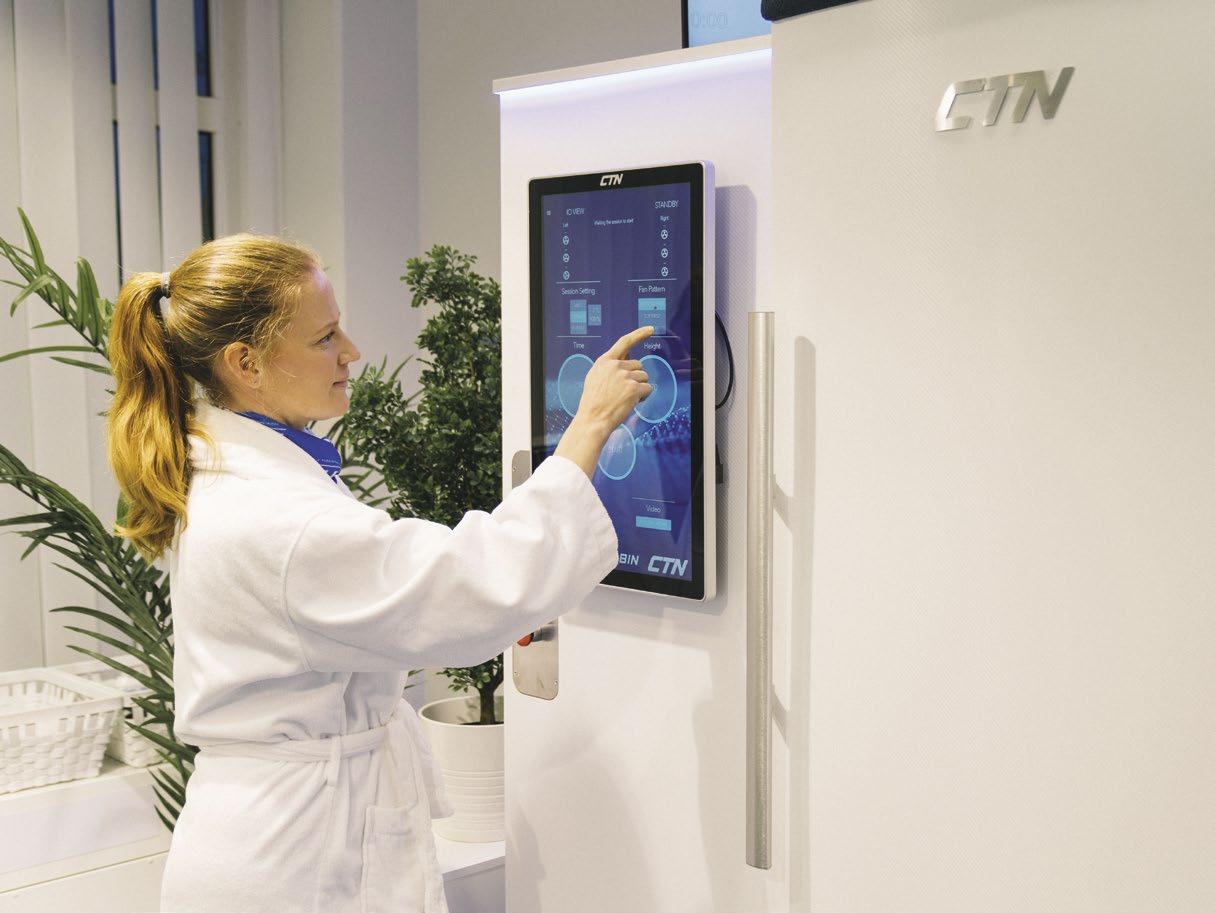
“e°CABIN creates a thermal shock for the whole body – from the neck down to the ankles,” says Oravainen. “This revolutionary innovation is patented and enables fully automated intelligent treatment sessions. It is also the first device on the market that operates with standard 220V electricity only,” she explains.
The product is based on commercial grade freezing components and the latest environmentally safe sustainable coolants and materials. “Our product is not only greener and more sustainable than traditional alternatives using liquid nitrogen, but it is also significantly easier and safer to use,” says Peura confidently.
He points out that e°CABIN is powered by standard electricity and no cryogenic gases are needed. “The cold distribution and duration of the sessions are controlled automatically by six sensors that monitor temperature in real-time. Thanks to this technology, every session is completed safely and efficiently with perfect end results,” says Peura.
The product is already popular worldwide. “We therefore want our production capacity to match the global sales success of e°CABIN. This will allow us to meet the other ambitious targets we have set for the coming years,” concludes Peura.
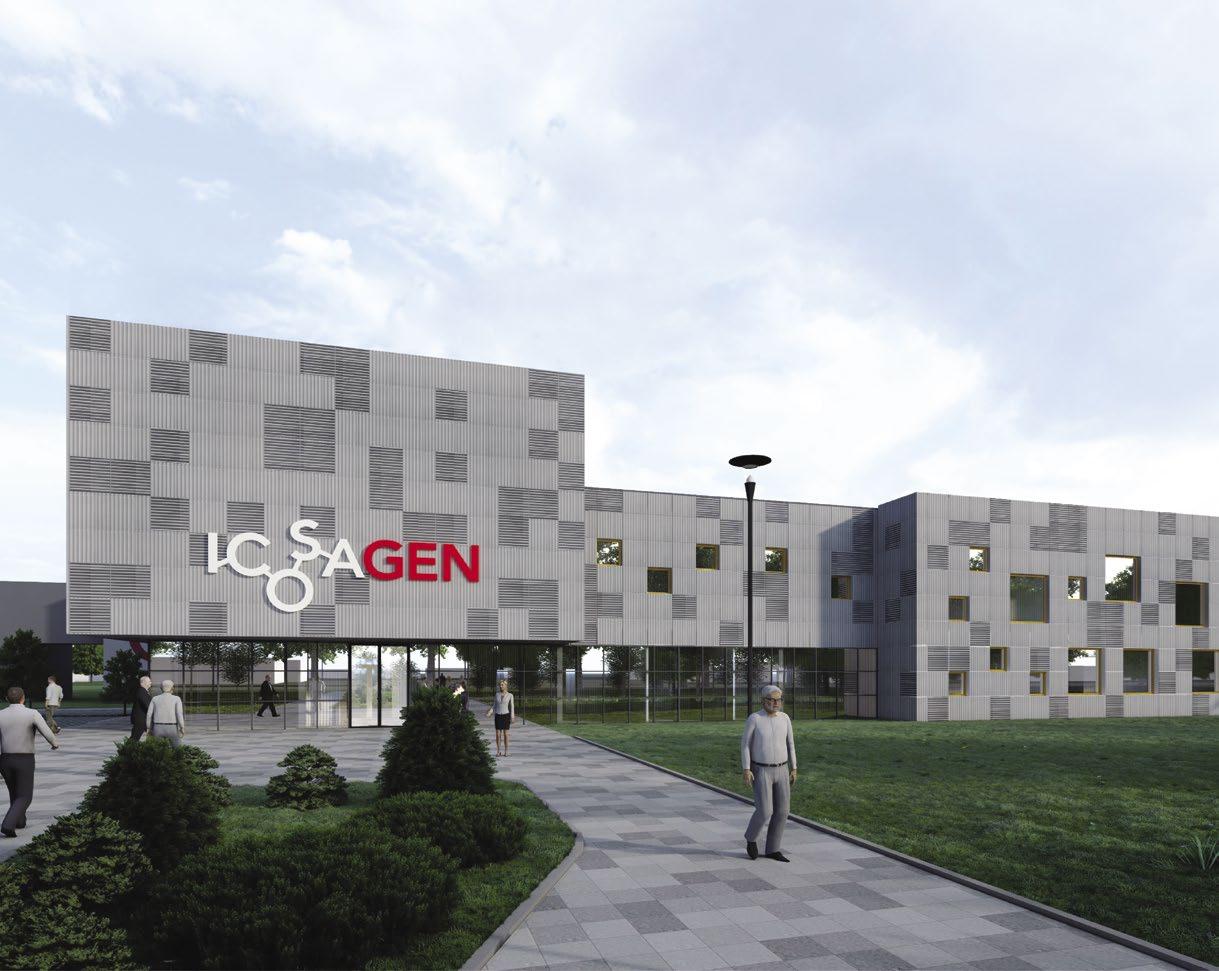 By Sven Paulus
By Sven Paulus
Icosagen, an Estonian drug development company that has received 18 million euros from the European Investment Bank, will open its innovative manufacturing facility this year. BioBlock, an anti-covid nasal spray developed by the company, has reached many countries. Mart Ustav, CEO of Icosagen, told us their story.

It all started in 1999 when four people – Marika Mikelsaar, Helme Raukas, Ain Laving, and myself – founded Quattromed. Our aim was to develop molecular genetic methods for the detection of infectious diseases such as papillomavirus, herpes, hepatitis, etc. In 2008, Quattromed was the largest diagnostics company in Estonia with 80 employees, and then investors appeared who wanted to buy the diagnostics arm. The deal went through and Synlab Eesti OÜ was born, leaving the biotech side in our hands. We took a name Icosagen and our core business became contract work for the development of biopharmaceuticals.
In 2022, our turnover rose to 20 million euros and this year we received an 18 million loan from the European Investment Bank to build a current Good Manufacturing Practice (cGMP) manufacturing facility to produce innovative medicines for clinical trials. The new building is due to be completed at the end of June this year and service will be available in 2024. This will allow us to offer a full drug development and production service to our customers as a comprehensive contract research, development and manufacturing organisation (CRDMO).

Our target therapeutic molecules will be produced in animal cells grown in a bioreactor, followed by purification, quality control, analysis and biocapability tests. We expect to have completed the qualification process for the GMP production by the end of this year, and the Estonian Agency of Medicine can then grant us a license to produce biological medicines.
With the new production facility, we will create a full drug development capability, a complete workflow and the capacity to deliver ready-to-use
molecules. We don’t have the kind of money to do phase three clinical trials, so we have to develop molecules to phase two, proof of concept, and then we can sell these projects with data to the big pharmaceutical industry. The cost of each of these projects starts at between 100 and 200 million euros and goes up to one billion euros, depending on what the drugs are targeting.
Our development labs work along three main lines. One is the development of anti-cancer drugs, the second is pain, which is also a very serious problem, and the third is infectious diseases. In all of these we have intensive research and development activities, and we collaborate with many companies and universities.
This spring Icosagen acquired the Carterra LSA Instrument that significantly enhances its antibody screening capabilities in the discovery and development of new therapeutic and diagnostic antibodies. The cutting-edge LSA technology will enable Icosagen to speed up and significantly enhance its end-to-end service capabilities for global biotechnology and pharmaceutical customers.
So, the new building will open up new opportunities for you, but how does biopharmaceutical development work?
First of all, you need to have an understanding of what you are treating, i.e. what is the disease, what are the main causes of the disease, and whether it is clear what is causing the disease condition. Then you can activate or inactivate the corresponding target against it. We are working on more than 20 target sites, against which we are developing neutralising antibodies or agonists that activate these target sites.
Photo by Kaily PoolaDuring the coronavirus pandemic, you made waves with the launch of your BioBlock nasal spray. How has it been doing?

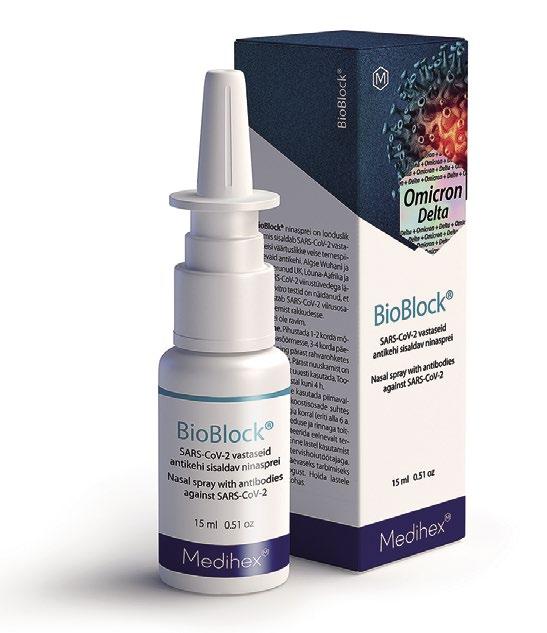
I think very well. On the one hand, it was an interesting process, and on the other hand it was very innovative. Even so that the Estonian regulatory authorities could not give it a proper name, because it is not a medicine in the strict sense of the word as that would require a long period of development and research.
We have a very large database, and we know how the immunisation of large animals is done and how the immune response works. We immunise pregnant cows and when a calf is born, the first milk, colostrum, contains a high concentration of antibodies, including those produced as a result of immunisation.
We take the colostrum with 100 milligrams of antibodies per millilitre. These antibodies have a very broad spectrum, and you can drink this colostrum if you want to protect yourself against certain pathogens. In this case, we put these antibodies in a bottle and, as far as I know, over 400,000 bottles of BioBlock nasal spray have been sold in Estonia. People are still coming to me and saying it is a very good product and it works.
I don’t want to say that it solves all the problems, but it is very much aimed at preventing coronavirus infection, not curing it. You put antibodies on the mucous membranes of your nose and when you are exposed to the virus, those antibodies inactivate the viruses. We have this data unequivocally proven in animal studies, in in vitro experiments and in tissue culture experiments, and this is a good result.
I think BioBlock is a very good example of how an innovative approach to a problem can produce a good result relatively quickly. At the moment, all the BioBlock documentation has been submitted for evaluation to the medicines regulatory authorities in several countries, so that we can enter those markets as well. But our aim for the future is not so much to create products of this kind, but to develop specific monoclonal antibodies against specific targets.
How do you see the landscape of medical technology and drug development in Estonia? What are the advantages or strengths here?
I believe that Estonia’s strengths are definitely the quality and high level of research. On the application side, however, the situation is very bleak, including in the field of applied medicine, as there is no proper case of modern drug development in Estonia so far. However, this means that we are now trying to create one.
We want to create a drug development industry that operates on a commercial basis, defines the targets, develops the molecules and demonstrates through preclinical and clinical development that the molecules can have a medical curative effect. We have some very good people at work and I am very optimistic about the results of this work. We have a number of drugs in the preclinical phase, and we have seen in animal studies that they are effective in blocking tumour growth. Now that we can get our new manufacturing facility up and running, the next step is to initiate a clinical programme and I imagine that in about two years we should be able to see the results of this work.
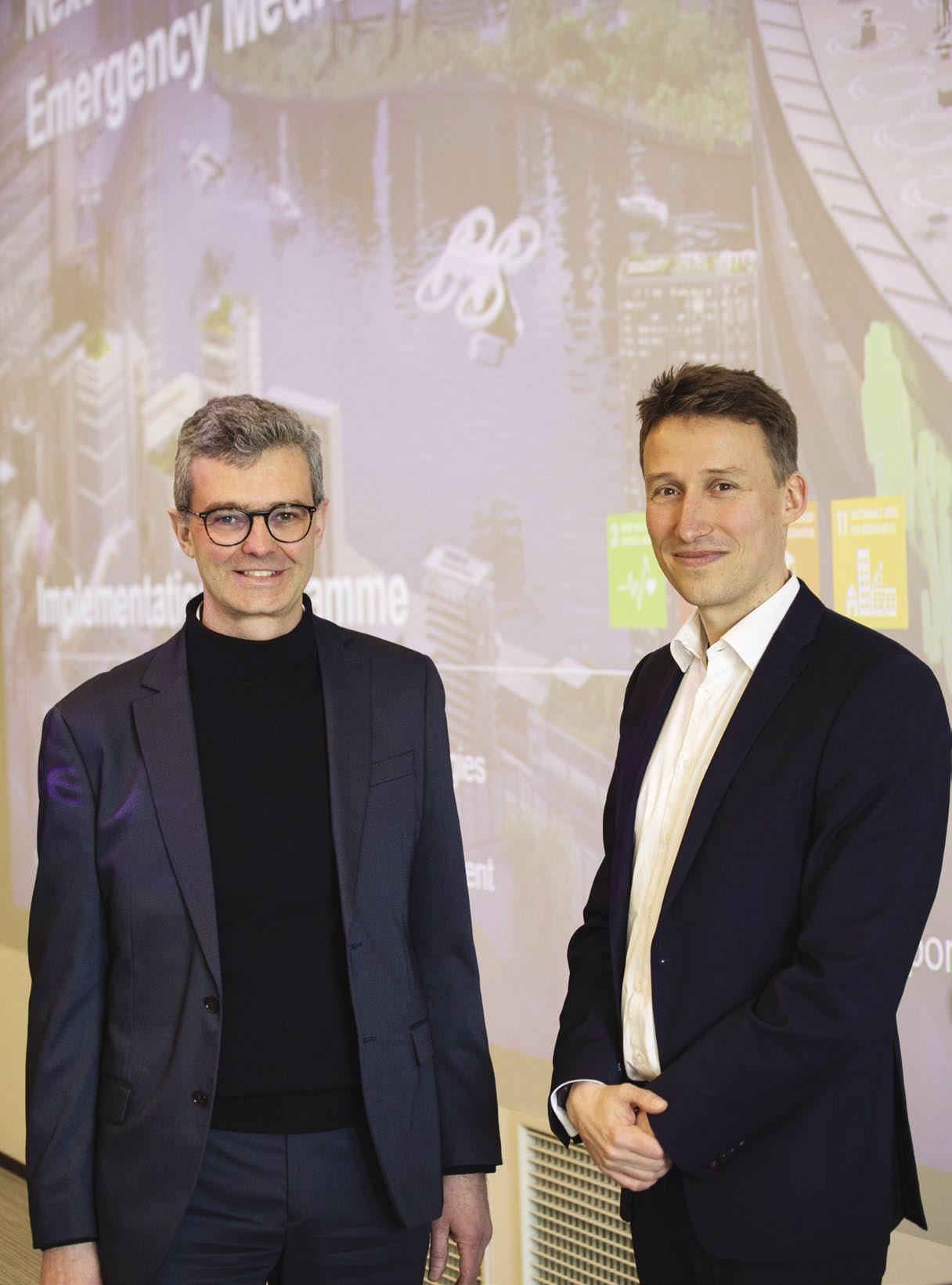 By Ronald Liive
Photo by Atko Januson
By Ronald Liive
Photo by Atko Januson
Estonian EMS professionals are helping out Airbus Helicopters and International SOS in the development of a new emergency medical system.
Last year Estonia, Airbus Helicopters and International SOS signed a cooperation agreement to design an innovation programme for the next generation of Emergency Medical Services (EMS). What was learned during the programme would be useful not just for Estonia but for any other country in the world. LifeSaver in Estonia is a way for the participating organisations to showcase their innovative solutions. The programme is designed by Airbus Helicopters and International SOS to test innovative new solutions in real world scenarios. From Estonia’s side there are many participants in the programme from various ministries, the Health Board, Rescue Board, Police and Border Guard, and healthcare providers. LifeSaver Program Manager Hubertus Groepper describes his experience working with the Estonians as very positive. In general, the programme is a win-win-win for all of the parties.
Groepper sees a strong motivation to use innovation for improved emergency response – not only in Estonia but anywhere in the world. He notes that Estonian capabilities can clearly contribute to the greater good.
He is also impressed with how open, straightforward and professional the cooperation has been. According to Groepper, for everyone they encounter, it is all about using innovation to overcome real challenges for emergency medical teams and further improve the standard of living in Estonia.
“The Estonian Investment Agency is doing a great job connecting all the relevant people and organisations, and we are very pleased that we will carry out this project together with them, as one integrated project team,” he described.
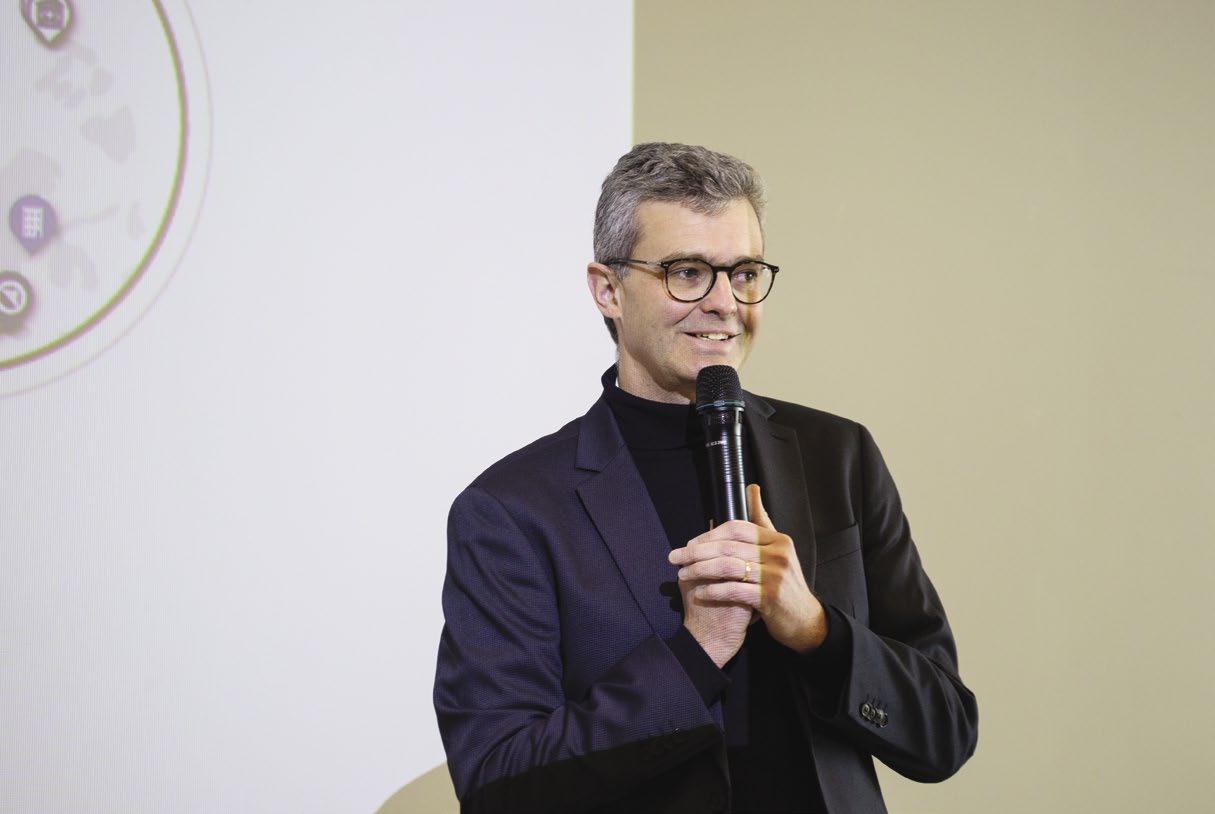
Frédéric Balme, Senior Vice President, Global Healthcare Systems Government Services at International SOS, also underlined that the project is not meant to be pure research and development but a way to implement and integrate innovative solutions with real emergency medical services. Complete with regulations, operating procedures, training, societal acceptance and many other elements that will be required.
“Estonia is a territory full of opportunities for innovation in a variety of sectors. Positioning Estonia as a test bed for innovation is a great value proposition and a critical foundation to make LifeSaver in Estonia work. Estonia can contribute to all of these and be a unique test bed for such a complex system,” Balme said.
Airbus unveiled CityAirbus NextGen, their new electrically powered vertical take-off and landing aircraft (eVTOL) prototype in 2021. The aircraft is being designed for multi-mission capabilities. The LifeSaver in Estonia programme will be very important for planning and designing eVTOLs at the system level, including traffic management, regulation or public acceptance.
Photos by Atko Januson‘Positioning Estonia as a test bed for innovation is a great value proposition and a critical foundation to make LifeSaver in Estonia work’
“Estonian EMS professionals and other key stakeholders will provide their inputs and requirements, which will in turn help Airbus design the best possible concept of operations for the missions that CityAirbus NextGen could perform,” said Groepper.
During the mapping and study portion of the LifeSaver programme, the parties will evaluate the use of drones and the aforementioned new type of aircraft. They will also go far beyond transport solutions and will look into different means of technologies to integrate that will help to optimise patient outcomes.
The team would like to see artificial intelligence (AI) being used on the system level in EMS. For example, how can AI help manage the complexity of an emergency medical system with many interdependencies and external challenges? Knowing that most countries would benefit from intelligent EMS, system management is an area Airbus and International SOS eagerly wish to continue working on in Estonia.
“Think of helicopters for EMS: the helicopter needs to be fully integrated with the rescue chain to save lives. The first step in our journey is to evaluate the most promising areas to improve Estonia’s current emergency medical system,” Groepper says.
Balme at International SOS notes that as Estonia’s emergency medical services already operate at a very high level. Their target is to use ‘facts and figures’ to determine which innovation use case would be most impactful, both in Estonia and potentially elsewhere.
On that basis, the group works on more detailed “Concepts of Operations” that encompass the entire ecosystem of emergency medical services, taking into account population coverage, healthcare infrastructure and many other factors.
One of the tasks that may arise during the program is to address how medical teams could responds to an emergency situation on one of the many islands (approx. 2222) that Estonia has. The study will look into using eVTOLs alongside other means of transportation for that.
Airbus Helicopters is already accustomed to producing helicopters equipped with EMS teams in mind. During the development of eVTOLs, EMS needs are also not forgotten. As the two aircrafts have different performance characteristics, Groepper sees them serving different needs. But the goal of LifeSaver is not just limited to aircrafts. They will also study how road ambulances could be quicker and more efficient in certain situations.
“What eVTOLs and helicopters have in common is that they can be excellent catalysts to introduce forward-looking changes to an emergency medical system, in addition to reducing emergency response times,” he says.
The programme is quite ambitious. The outcome will not just be a study but hopefully something of a roadmap for Estonia to implement in the coming years.
“We will move to the identification of use cases for state-of-the-art technology and develop clear recommendations that will also address funding and regulations. This is a pragmatic and holistic approach that we think fits very well with the Estonian mind set,” Balme says.
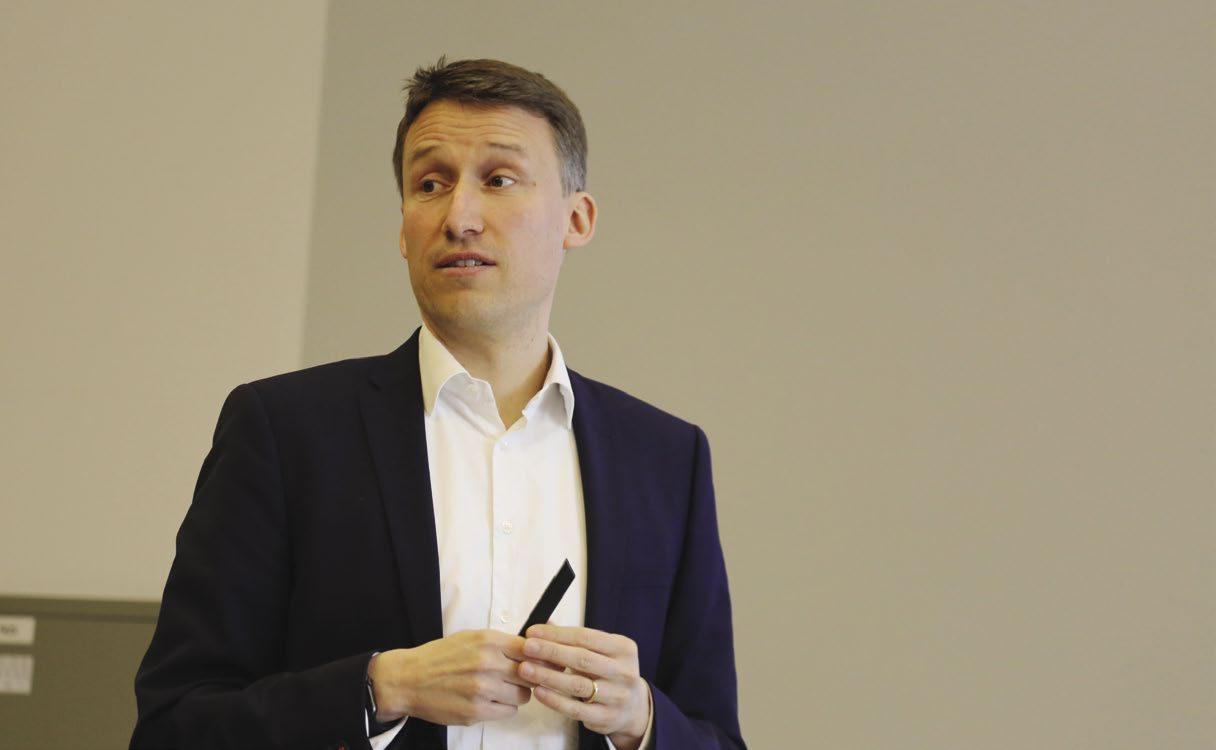
The main purpose of LifeSaver in Estonia is to improve patient outcomes. Keeping that in mind, Balme is very open-minded about the specific technologies that could be implemented. Be it AI or drones in the shorter term and eVTOL later on, it all needs to make sense.
“Matching the potential of these technologies with real use cases will be critical, as will be their integration with the overall emergency and healthcare system. Estonia, like many other countries, is facing challenges such as difficulty finding enough medical professionals while trying to reduce response times in emergencies or providing medical care to remote locations.”
‘Estonian EMS professionals and other key stakeholders will provide their inputs and requirements, which will in turn help Airbus design the best possible concept of operations for the missions that CityAirbus NextGen could perform’
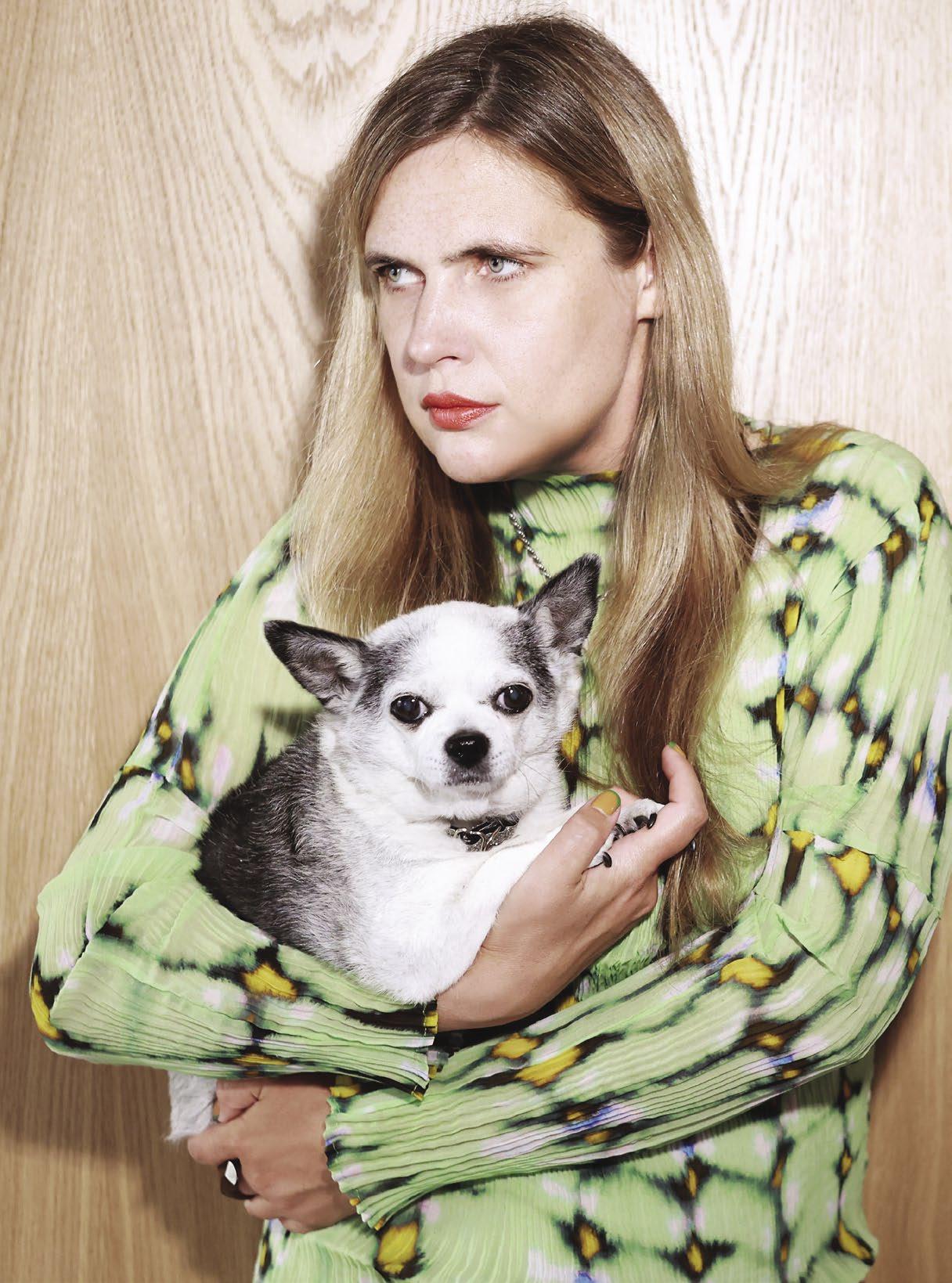 By Kaarin Kivirähk
By Kaarin Kivirähk
By Kaarin Kivirähk
By Kaarin Kivirähk
Good, bad, ugly, 2021
Sculptures (ceramics, polyester, resin, PVC); mirror, reflective fabric, ceramics

What happens in family, stays in family, 2020
Aluminium
 Temnikova & Kasela gallery, Tallinn
Temnikova & Kasela gallery, Tallinn
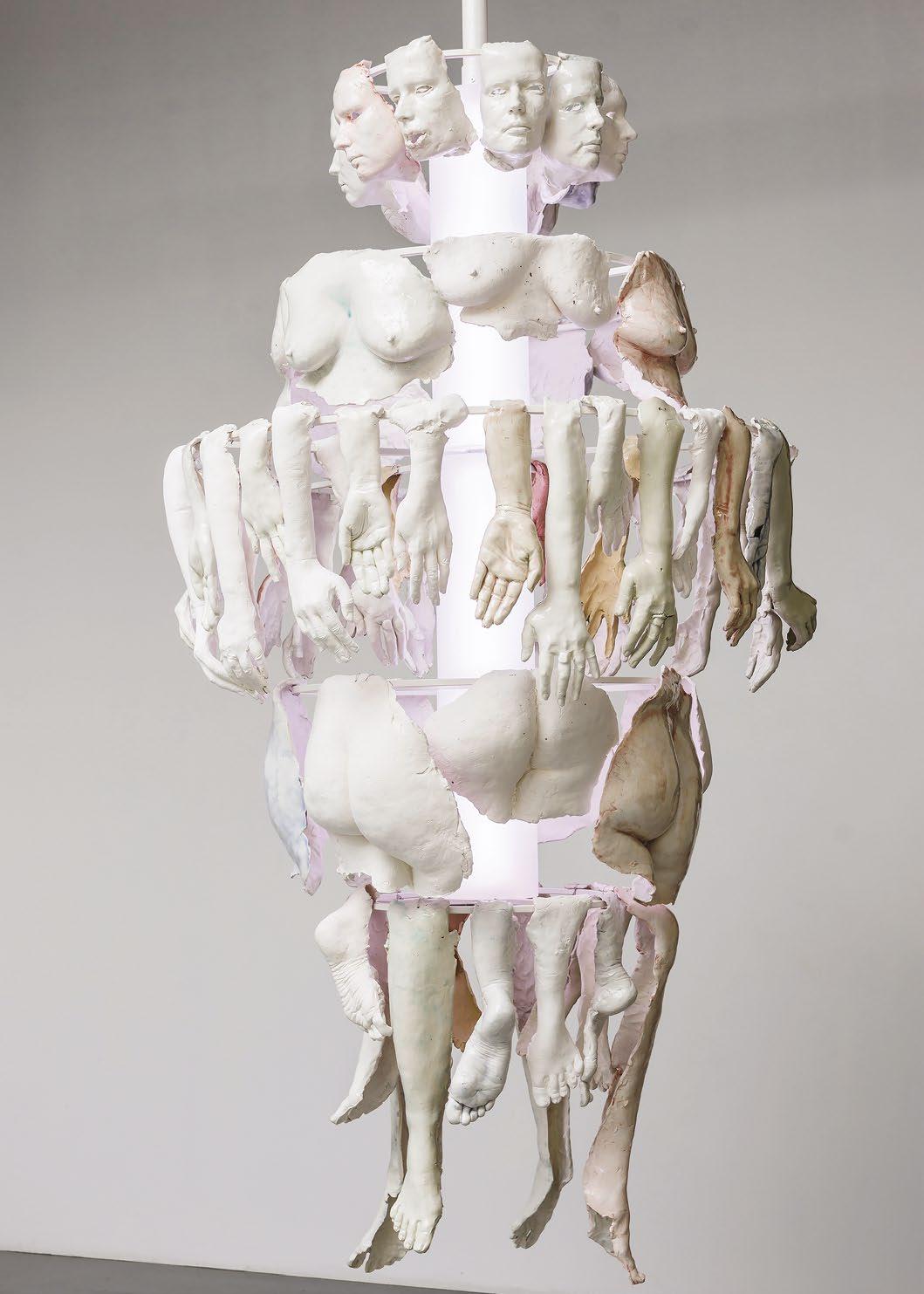 Doomsday, 2017-2018 (with Jass Kaselaan)
Porcelain chandelier; silicone tapestry; watercolour on paper; 7 small porcelain sculptures
Temnikova & Kasela gallery, Tallinn
Doomsday, 2017-2018 (with Jass Kaselaan)
Porcelain chandelier; silicone tapestry; watercolour on paper; 7 small porcelain sculptures
Temnikova & Kasela gallery, Tallinn
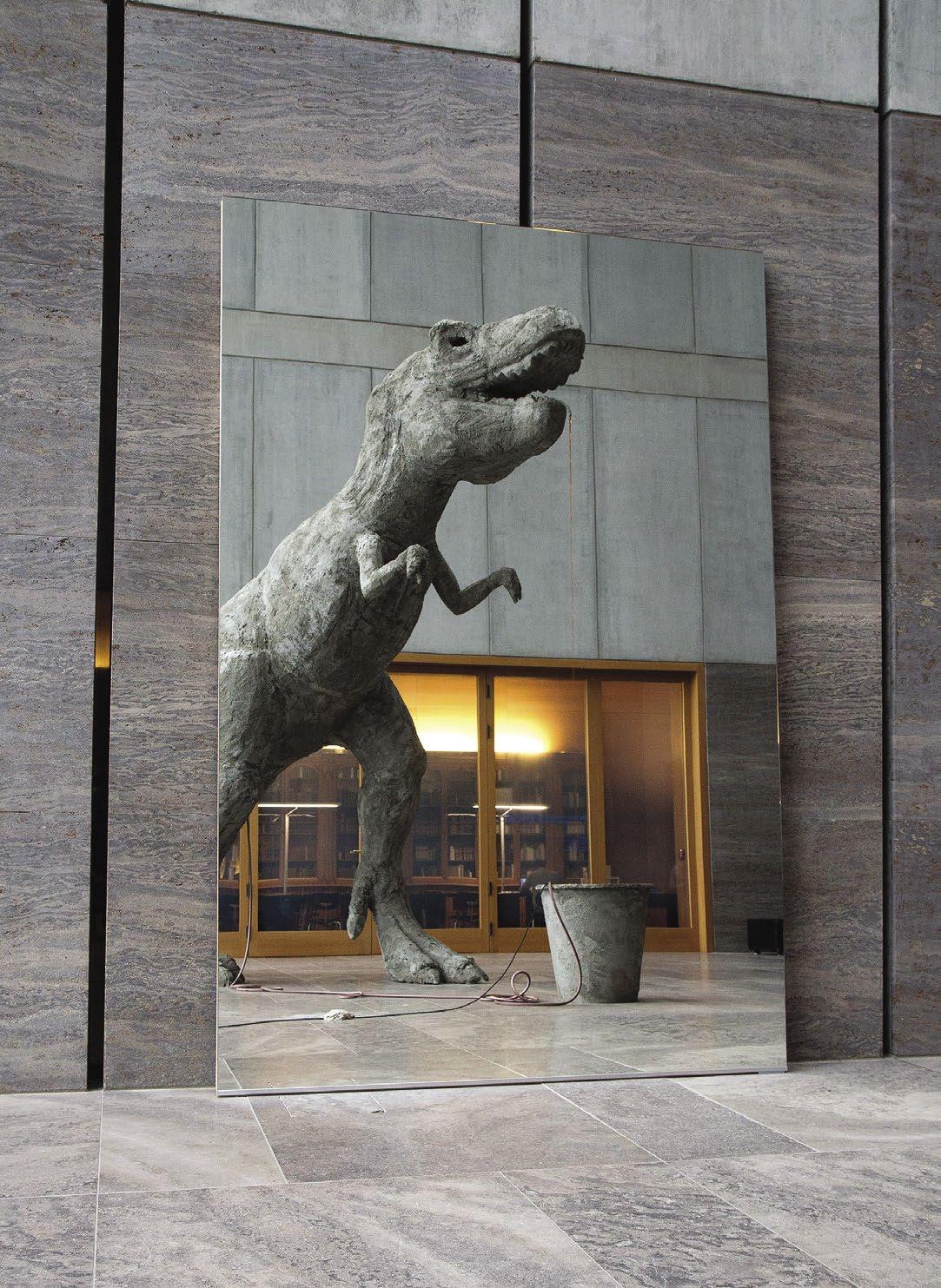 Drama is in your head V, 2018 Installation. Sculpture (wood, concrete, polystyrene, construction foam), mirror, coloured water, fountain pump Museum der bildenden Künste Leipzig, Germany
Drama is in your head V, 2018 Installation. Sculpture (wood, concrete, polystyrene, construction foam), mirror, coloured water, fountain pump Museum der bildenden Künste Leipzig, Germany
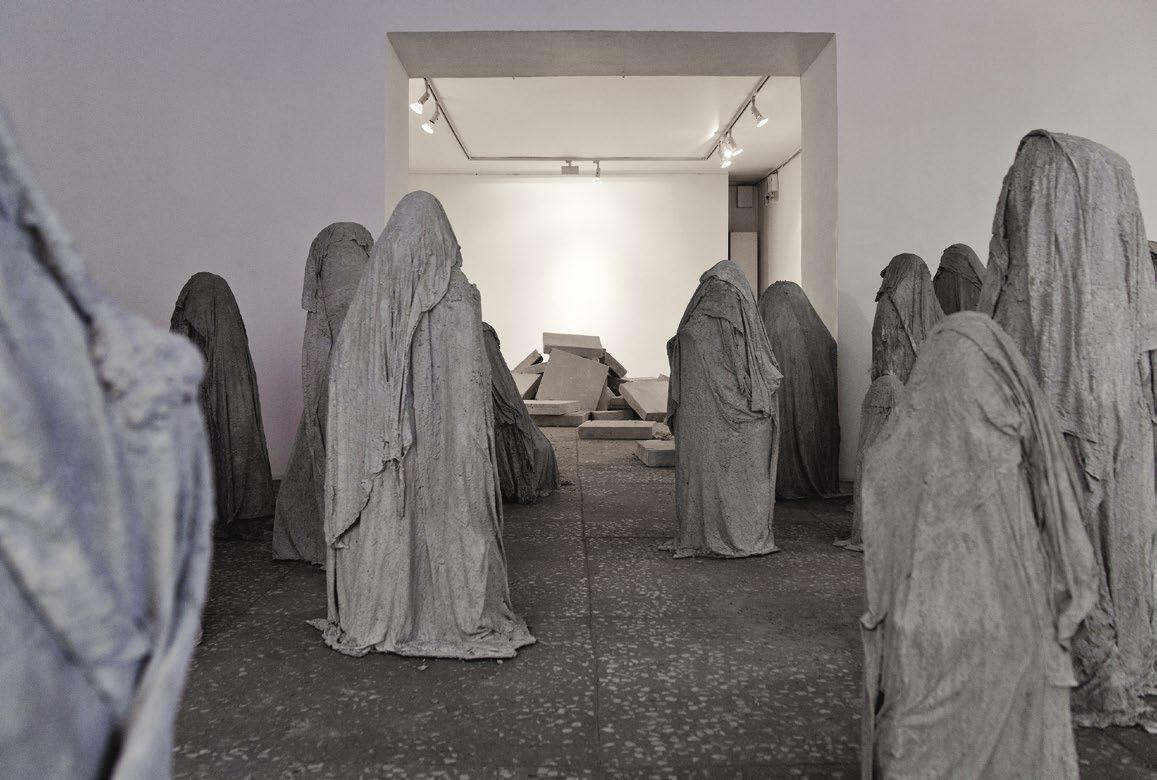 Drama is in your head II, 2013 Installation. Concrete, building blocks, chicken wire, construction foam, polystyrene Tallinn City Gallery
Drama is in your head II, 2013 Installation. Concrete, building blocks, chicken wire, construction foam, polystyrene Tallinn City Gallery
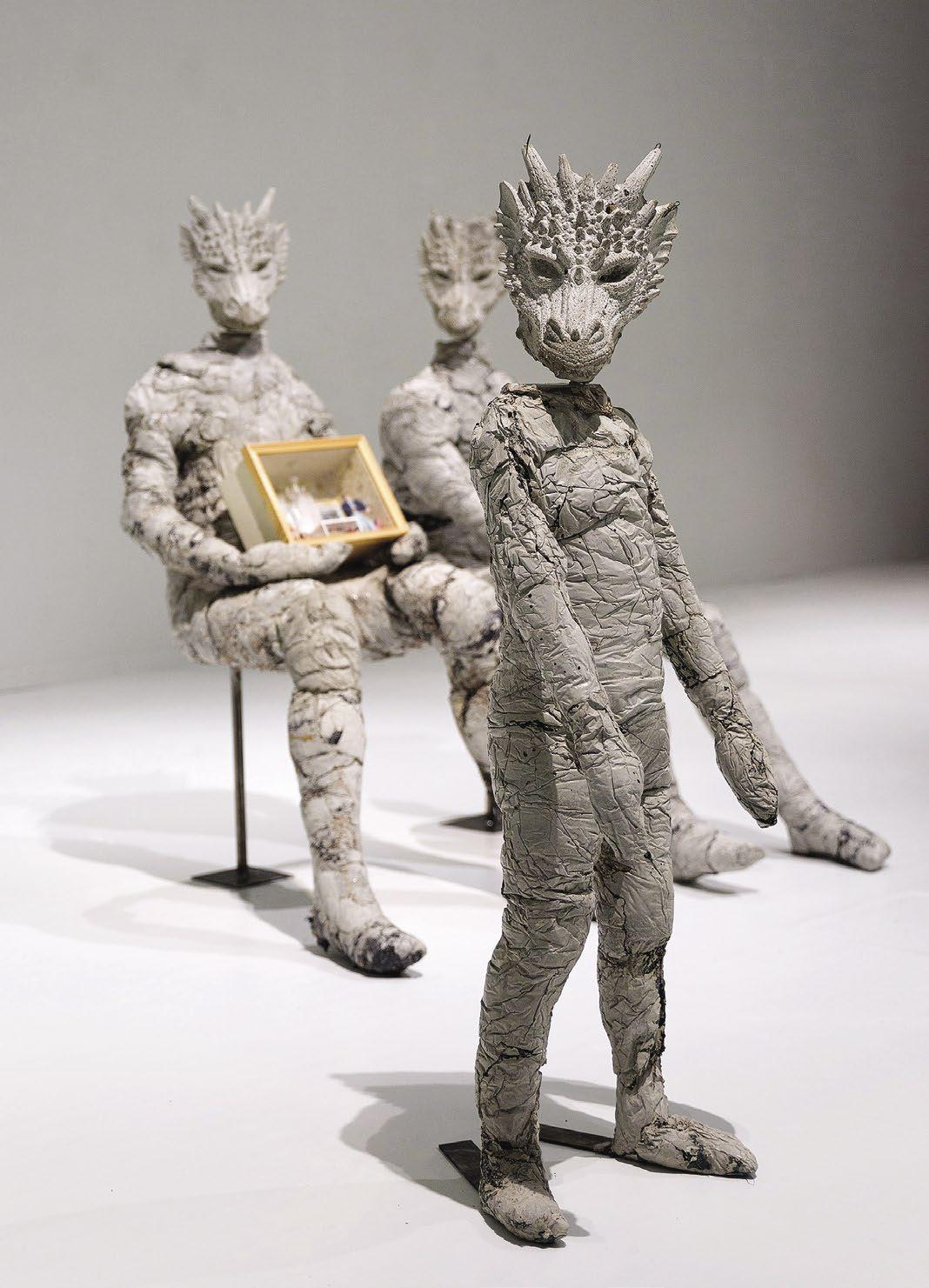 Family, 2019
Installation. Concrete, metal, mixed media
Kumu Art Museum, Tallinn
Family, 2019
Installation. Concrete, metal, mixed media
Kumu Art Museum, Tallinn
 Being together, 2012 (with Kris Lemsalu) Ceramics, polyester resin
Temnikova & Kasela gallery, Tallinn
Being together, 2012 (with Kris Lemsalu) Ceramics, polyester resin
Temnikova & Kasela gallery, Tallinn
 The end, 2019 Polystyrene foam, concrete, metal, limestone Kumu Art Museum, Tallinn
The end, 2019 Polystyrene foam, concrete, metal, limestone Kumu Art Museum, Tallinn
Edith Karlson is an Estonian sculptor whose work can be seen this year at the Kumu Art Museum in Tallinn and at the Sequences XI festival in Reykjavik, Iceland. Next year, her work will represent Estonia at the 60th Venice Biennale.
Edith Karlson started exhibiting more than a decade ago and quickly became one of the representatives of the new wave of Estonian sculpture, together with some of her friends from her generation. “She introduced a different, more playful, approach to making sculpture, where the materials, forms and space all become an important part of a performative, almost carnivalesque type of world-building”, wrote Latvian-Estonian curator Šelda Pukite in Echo Gone Wrong magazine last year. But despite the playfulness and carnivalesque elements that certainly characterise Edith’s work, there is also pain, absurdity and black humour.
Edith’s works often feature animals who represent human desires and evils. “I have always, as far as I can remember, been a huge fan of animals, and I have never stopped loving and admiring them,” Edith has said herself. One of her best-known works is “Vox populi” (2016) where a chain of rabbit droppings connects a long line of different animals and birds. The work speaks about the interconnections in nature, the food chain and also human relationships. Nature is a major source of inspiration and energy for Karlsson more broadly. From the beach near her house on the island of Hiiumaa, she has found fox tracks, from which she has used the shapes in her work, as well as a seal carapace, from which she created the piece “Short Story” (2019).
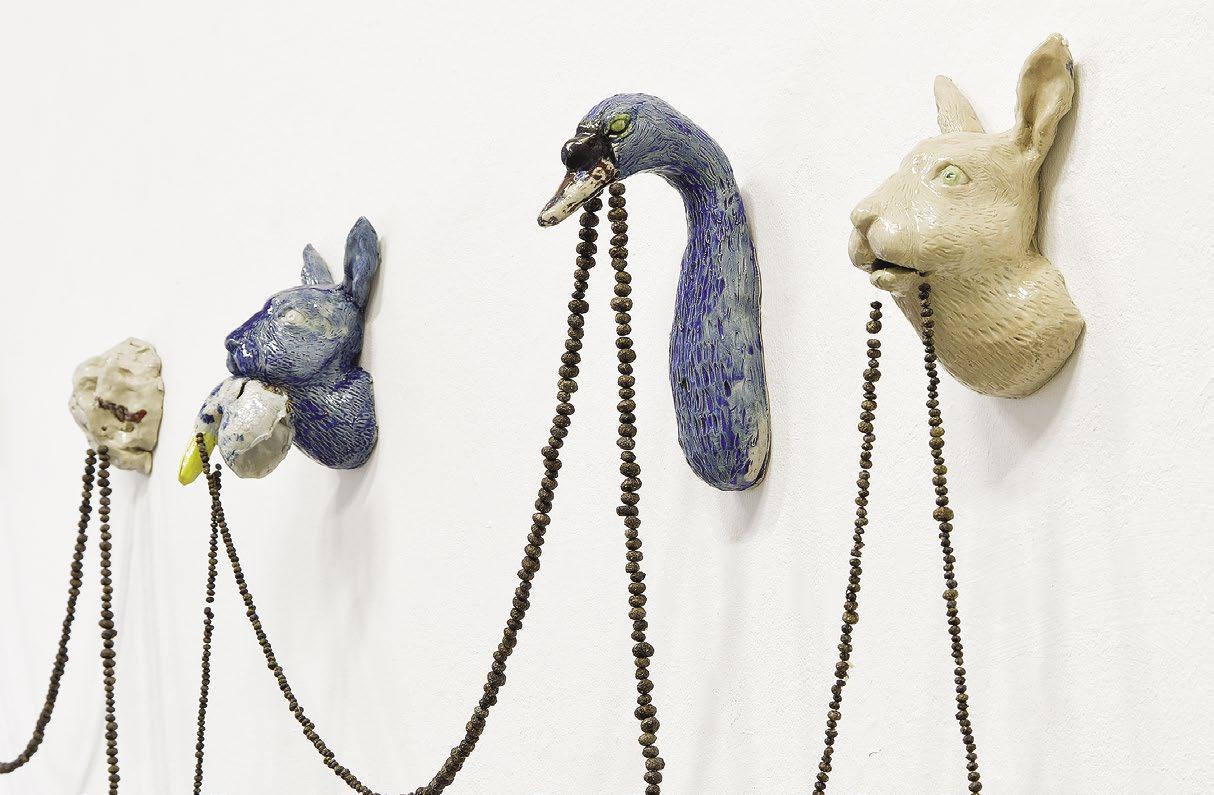
Edith, along with her university classmates, belongs to the generation of sculptors who received a classical sculpture education at the Estonian Academy of Arts: this means that she knows how to take moulds,
cast bronze and model. She is not afraid of different materials and has worked with plastic, terracotta, clay and concrete. Today, and especially for Western artists, such craftsmanship is no longer taken for granted. Edith is, however, known for her great dedication. It is well known that when she has a major project on the go (and she usually does), she locks herself up in her studio situated in the legendary sculpture studio on Raja Street in the outskirts of Tallinn, and works to the limit of her abilities, without rest, without breathing, and with both despair and maximum excitement.
Is this kind of continuous work healthy? Possibly not, but Edith has also said in several interviews that she is triggered by a depressive state of mind, which inspires her to act and provides subjects for her work.
Perhaps not always so directly, but there is definitely a dark side to her work, even when she depicts cute little dogs. Mental health is most evident in the large-scale series of exhibitions “Drama is in your head”, which was limited to five exhibitions, but still appears occasionally in the form of works, motifs and themes. In this series, the artist brings out the classic truth that worries and troubles reside in the mind of the worrier, often having nothing in common with reality. “In the ‘Dramas’ exhibitions, the artist has brought these worries, which cause a complex knots and a mess in our heads, into the exhibition space in the form of allegories of animals and other creatures.
Vox populi in Tallinn City Gallery, 2016The first exhibition in the “Dramas” series (Stalker festival, Kultuurikatel, Tallinn 2011) was perhaps the most robust of them all: a constant stream of red liquid oozed out of the brain-like formations, watched by a sinister black dog. The installation resembles a slightly collapsed system, which, in the case of the ‘drama’ going on in the head, could perhaps be a fairly accurate allegory. “It warns of the fact that the flesh and blood that constitute humans – when separated from the unexplained and the unreasonable – amount to little more than a laboratory,” said the text accompanying the exhibition. The second part of the “Dramas” series (Tallinn City Gallery, 2013), however, depicted a series of ghostly clay figures covered in fabric, each of which could symbolise a different kind of fear. The exhibition was completed shortly after Edith’s 30th birthday, a time when one may sense confusion about the future and see various mysterious things to be afraid of. The ghosts were gathered around a wilted bouquet of flowers – a reminder of the artist’s past jubilee. I imagine that casting such horrors into sculptural form and making an exhibition of them could be at once a vulnerable and difficult, yet extraordinarily liberating experience for the artist.
The “Dramas” series reached a grand finale in Leipzig, Germany, when a giant dinosaur spitting red liquid, created by Edith Karlsson, was unveiled at the Leipzig Art Museum in 2018. With its huge dimensions (5 metres high and 8 metres wide), it has also been called the largest work in Estonian sculptural history. A similar dinosaur can also be found in Tallinn.
At the end of 2021, Edith opened a public space sculpture called “Good Old Times” in the Noblessner area. It is also a large dinosaur, but this time without spitting red water. This prehistoric creature, which for some reason is petrified right in front of the Proto Discovery Centre, reminds visitors that life existed before our time. Noblessner is known for its summer café scene and cocktail bars serving the city’s most expensive Aperol Spritz. The artist herself commented on the dinosaur’s location in an interview last year: “A dinosaur by the sea, and near the very hip and rich area. They need some reminders that they will die too.” Which brings us to the existential dimension of Edith’s work, where the theme of death cannot be overlooked.
In the artist’s catalogue, dramaturg Eero Epner, who is Edith Karlson’s co-collaborator on several projects and thinks along the same lines, writes about the peculiar relationship between Edith’s art and death: “Death is almost always present in Karlson’s work, although not as an explicit theme or plot. The artist does not share infantile crumbs of death mythology, she does not want to provoke or enchant with morbidity but to open the door to a world where neither life nor death are judgemental categories. They are evenly spread out all over our existence like an enormous butterfly net.” Such existentialism was perhaps best expressed in Karlson’s last solo exhibition “Return to Innocence” (EKKM, 2021), for which she was awarded several important art prizes in Estonia. It was an exhibition that could not be described in photographs or
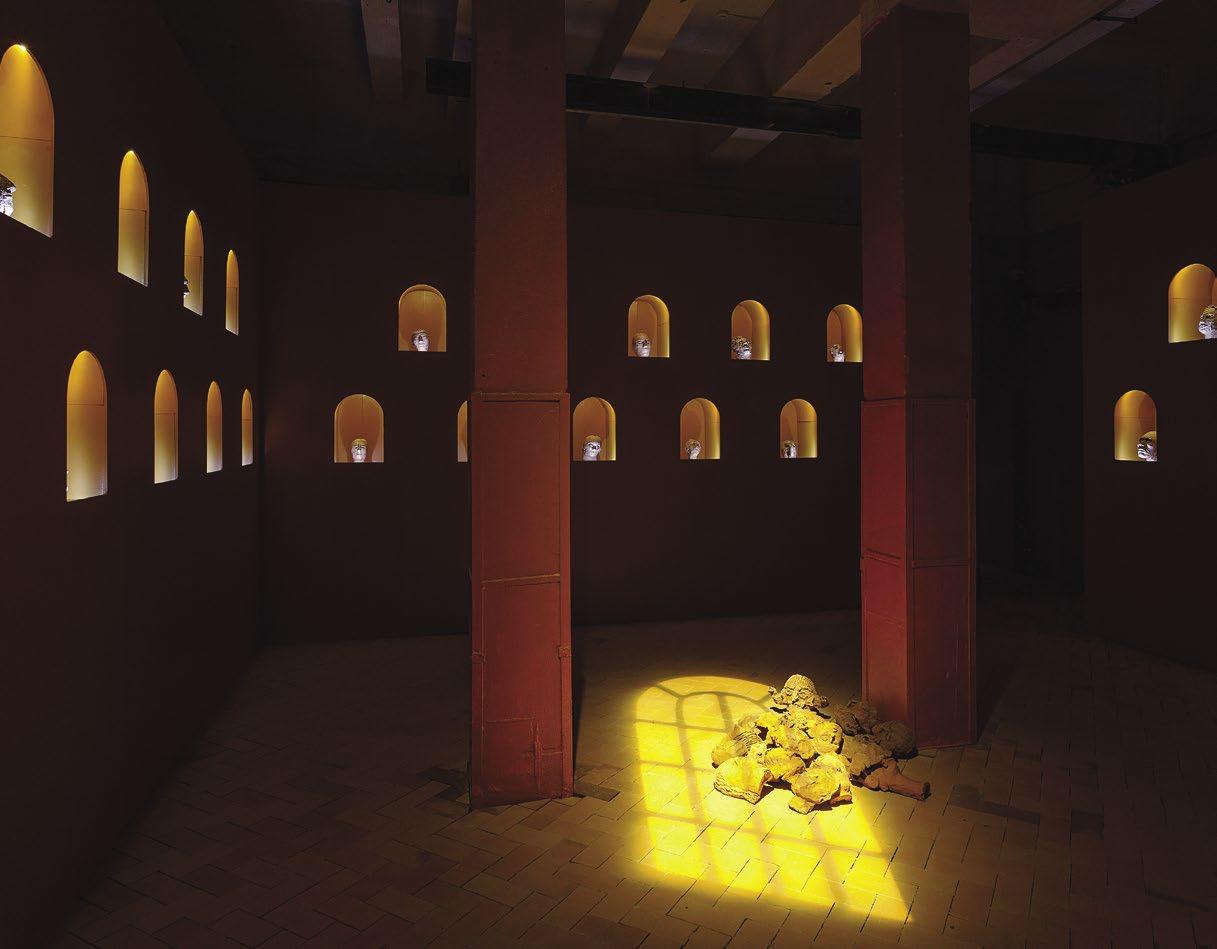 Return to Innocence, Contemporary Art Museum of Estonia in 2021
Return to Innocence, Contemporary Art Museum of Estonia in 2021
words, one that completely changed the way art exhibitions could be experienced or thought about. It seems to me that it was there that Edith was finally able to realise the ideas she had been carrying inside her for a long time, searching for the right way to express them.
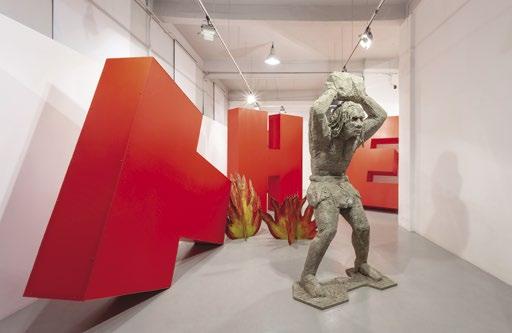

The most important thing about Edith Karlson’s work is to feel it and look at it; she is not an artist who is bogged down in art theory or whose works require a thick catalogue to understand. She has described her collection of material as an openness and attentiveness to what is around her and what is happening within her. It is known that she works more from a gut feeling. After a long tradition of conceptual and analytical art, this approach is very liberating, as Edith’s exhibitions do not remain simplistic, but rather she is able to find buttons in the viewer that make them understand and think without words.
In 2024, Edith faces one of her biggest projects yet: representing Estonia at the 60th Venice Arts Biennale. What will we see in Venice? “I don’t want to turn the pavilion into a gallery space with contemporary art,” says the artist, “I’m going with the idea that we humans have brought the world to a dead-end. There is no way out, there are no illusions, there are only dramas. Nothing ever changes, and it’s at once sad and funny, serious and ridiculous, scary as hell and fun like a circus. I think my job as an artist is to create spaces where the viewer’s imagination is fed, because the most powerful dramas happen in our heads.”
 Sisters (with Mall Paris), Tallinn Art Hall Gallery, 2019
The end (with Dan Mitchell), Temnikova & Kasela gallery, Tallinn, 2019
Photo by Roman-Sten Tónissoo
Public sculpture Good Old Days at Noblessner, Tallinn
Photo by Karel Koplimets
Sisters (with Mall Paris), Tallinn Art Hall Gallery, 2019
The end (with Dan Mitchell), Temnikova & Kasela gallery, Tallinn, 2019
Photo by Roman-Sten Tónissoo
Public sculpture Good Old Days at Noblessner, Tallinn
Photo by Karel Koplimets
Avery Schrader (25) came to Estonia five years ago from a small town in Canada, still in his late teens. Together with Hendry Sadrak, they created Modash, which connects brands with influencers. The platform now employs an international team of 25 and lists about 300 million content creators worldwide.

Can you please explain just exactly what it is that you do? What's your product?
Modash is helping consumer companies to partner with lots and lots of content creators online. We have some companies that are partnering with tens of thousands of creators every year. And these creators are on YouTube and TikTok and Instagram. Anybody who makes something online, we consider them a creator.
How do you find the creators, how you find the content. How do you bring these two parts together? It doesn’t sound like there are people at Modash sitting and skimming through the profiles of different content creators, but you have created a software solution or filters?
We collect the publicly available content and then we make some decisions about the creators at scale. If “Jack” on Tiktok is talking about football all the time and how he’s a referee on the weekends, and he’s excited about the Barcelona game today, we see that Jack is interested in sports and athletics. Now we have categorised him in such a way where we can make it really easy for brands who might be selling sports and athletics related products to find him so that they can partner with him. There are around 300 million content creators in Modash. You can imagine it’s pretty hard to get through that list unless you have good ways of filtering. Creators never really have to sign up to Modash. They can come and opt out and ask us not to keep them in there, though usually they’re very happy to be there. But just like Google goes and collects blog articles and decides what kind of questions they answer, we do the same thing with creator content. Now, in TikTok, for example, we list around 115,000,000 profiles.
Maybe you can walk me through some examples of a company?
Bolt might be a good example to highlight Modash’s use case because
they’re a little more international. What Bolt might do if they decide to expand to Cyprus and to start offering ride hailing and food delivery there: if you’re sitting in Tallinn, in the Bolt HQ, you might not know about every creator in Cyprus. So, they would come to Modash and they choose Cyprus as a location and they’d filter for the high performing folks in Cyprus who talk about food. Bolt is partnering with several hundred creators in long-term partnerships. They pay those creators as the creators convert new customers. I think they probably reach out to 50 creators a month, and maybe they add ten or 20 to their program. They have some creators who apply directly to their program and then they use Modash to decide whether or not they’re a good fit. The creators post about Bolt and try to push the local Cypriots to purchase.

but globally. Right?
Yeah. Google uses Modash in Asia Pacific, and we have NordVPN, Shopcider is a really cool e-commerce company that uses Modash. One of the biggest telecoms in the US use Modash now as well. Quite a few of those big consumer companies are using us.
We charge a subscription. It’s pretty simple. The search engine part is our core product, but we have some other features and functions as well. People subscribe to Modash and it lets them search for a certain number of creators a month or monitor a certain number. Let’s say they have 10,000 people posting for them all throughout the year. It’s impossible to keep up with that content. Modash will collect the content for them so that they don’t have to go scrolling TikTok to find every post about them on social.
Photo by Edmond MällWhen you started, it was a new trend that you hit in the right moment. And now nobody doubts that there’s value in it for the companies that do these deals.
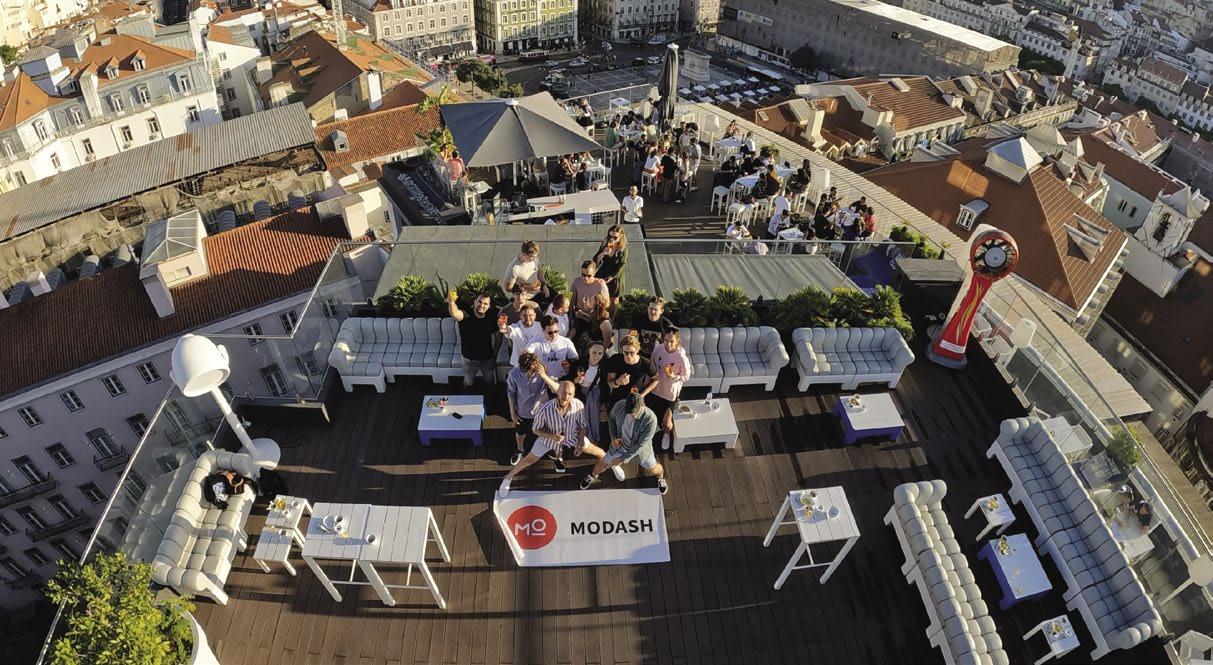
Advertising works like a big bucket of money and then the big bucket of money is spread out in a few places. Usually those few places are Google and Facebook and the very high performing cost per click type ads. And then there’s a little bit of stuff for brand marketing and experimental things. What’s happened in the last few years is that those buckets where the money goes have been broken up a lot. Apple’s privacy changes really damaged Facebook’s ad monopoly, and then Elon Musk bought Twitter and TikTok is kind of stealing eyeballs from everybody but not really monetising with ads. There’s been so much chaos in the advertising space that we coined this phrase ‘direct to creator’. So instead of going through the platforms, it makes sense for the brands to go direct to the creators to create content without needing to rely on the middlemen who are going through chaos. And we’ve seen that in the last couple of years more and more companies are putting some of that bucket of money into partnerships with creators in all kinds of formats. It has definitely been a big tailwind.
If you look at it from a content creator’s point of view, what is a realistic goal for someone to achieve through this line of work?
It really depends on how passionate you are about making stuff. I think some people’s initiation into the creator world is that they kind of like the idea of having the most Instagram followers in their friend group. And probably that person’s aspirations should be that this is like a side hustle where they can make a little bit of money and it’s important to recognise that that’s what it’s going to be. But for those who just love making stuff and building communities and love the entrepreneurial grind of trying to build a following on YouTube or whatever it is, the sky is the limit. You’re only limited by your own imagination and capacity to work and maybe resilience to failure. Every video when you’re a YouTuber is kind of like a new startup idea, so you have to fail through a couple of hundred ideas before you find an angle that works for you. But if you’re
willing to do that and suffer through, then the sky is the limit. I think the first objective is to replace your full-time income and become a full-time creator. That’s where we aim to help – to create more opportunity for those small creators. 99% of people are not Kim Kardashian. They are people like you and me who just love to make stuff. They are teachers and artists and athletes and people who are making a positive impact in the world in their own community. For those folks, it’s just about getting through that grind and getting across that threshold of minimum viable income. And from there, the sky is the limit.
Would you say that to be successful you need to build up a professional production company as a creator? Or could someone who is just talented and passionate have this kind of success?
“Paranormal Activity” is the answer to your question. I mean, it’s one of the biggest movies in its genre and it’s filmed on a handicam with a budget of $15,000 and it made millions and millions of dollars. It’s a good example of, even in Hollywood, what you can do on a bare-bones budget. If you’re one person and an iPhone, you could make “Paranormal Activity” with your friends. The most important thing for creators to focus on is making their next video as good a video as they possibly can, as fast as they possibly can. Just making a great piece of content that will bring joy or education or something meaningful into people’s day.
Are there types of content that are in at the moment or that are coming up? New trends?
How creators should think about trends – you can use them as a jumping off point, but you really need to find your own lane where you’re motivated to consistently produce content. I think PewDiePie is a really great example of this. He changed the type of content he made several times. And even today, years later, he has millions of views of video. So don’t worry too much about sticking in one place or following a trend if you’re on the creator side.
On the brand side, I think the trick is to get past the brand guidelines as much as you possibly can and put somebody who’s digitally native and just loves to make stuff in charge of running your social. Try to remove as much bureaucracy as you can and let them go crazy. I think that’s the key. The one piece of advice is: drop the brand guidelines and make something that people want to consume, because we get so caught up in “is this perfect?” “Is this on brand?”, that we don’t let the serendipity of just producing incredible stuff happen. Nobody would have said that Jackson Pollock’s paintings were perfect. It was just paint splotches on the canvas. It was nothing to look at. But now we idolise these creations from people who otherwise probably looked crazy. And I think you have to allow that kind of creative potential and not box it in too much.
What’s the biggest challenge? In this sector, everyone seems to struggle to find talent to hire.
I think what’s really helpful is being fully distributed or remote. I never really understood that hiring is difficult. But we also never had to hire 200 people in a month, so I think you feel the pain in a different way at that scale. Now it seems that the market has loosened up a little bit. There’s a lot more talent poking around. I think things are getting easier now.
We have lots of big challenges, for sure. We’re in a stage now where we had one customer join us in January, who has 25 full time employees using Modash. That’s their only job – to use Modash all day long. And in a month, they had built lists of like 150,000 or 200,000 influencers. And just the sheer scale of this breaks everything. It breaks the platform, which breaks the customer support, which makes sales more difficult, which is like a chain reaction. The scaling pain is definitely starting to hit us. The other thing that’s really challenging right now for me as this is my first company, I have a lot to learn about building a real organisation. Something happens between 15 and 25 people, where the founders aren’t in every meeting. We don’t talk to every person every day. We have to stop doing so many individual tasks because now my job really

is to figure out how to make sure we can scale the team to 50 people without our customers attacking us and saying that we’re doing a terrible job. Also figuring out little details like understanding how do you measure performance when you love everybody in your team? It’s really hard, actually. You don’t want to tell anybody they’re doing a bad job. And how do you make sure that the people in your team are telling you when you’re doing a bad job and that you need to do better? There are so many little puzzles to solve, and a lot of them kind of take a long time because they’re like this cultural, behavioural type of thing. We have 10 nationalities in the team – myself from Canada, then UK, Kosovo, Spain, Germany, Romania, Greece, Moldova, Russia, Hong Kong. It’s already been such an incredible experience. I never could have asked for anything more. And I love working with people and trying to build big stuff. And I always loved content creators, so this is my chance to make a dent in the world and try to help every creator earn a living.
How do you find working here overall?
It’s incredible. I love Tallinn and I love Estonia in general. I grew up in a really small town, for me Tallinn is the perfect city. It has everything that the city could offer without all the noise and chaos. I think there’s something so special about just not having to worry about a bunch of bureaucracy and administration tasks when you’re building stuff. I mean, there’s some days I couldn’t imagine the pain when your biggest customer unsubscribes and you also have to do your taxes on paper and mail them in. I would be hard pressed to find a reason to leave Estonia.
What’s your favourite place in Estonia when you have a day off?
I’m kind of a café guy, so I spend a lot of my weekends working from Nop Café or T 35 in Kalamaja. These are my go-to spots for a relaxed day. But for getting out of the working mode I just go for super long walks through the Kadriorg park and the Japanese Gardens and up and down the fancy new boardwalk to Pirita. Just walking in circles, finding new little nooks and crannies and fun cafes.
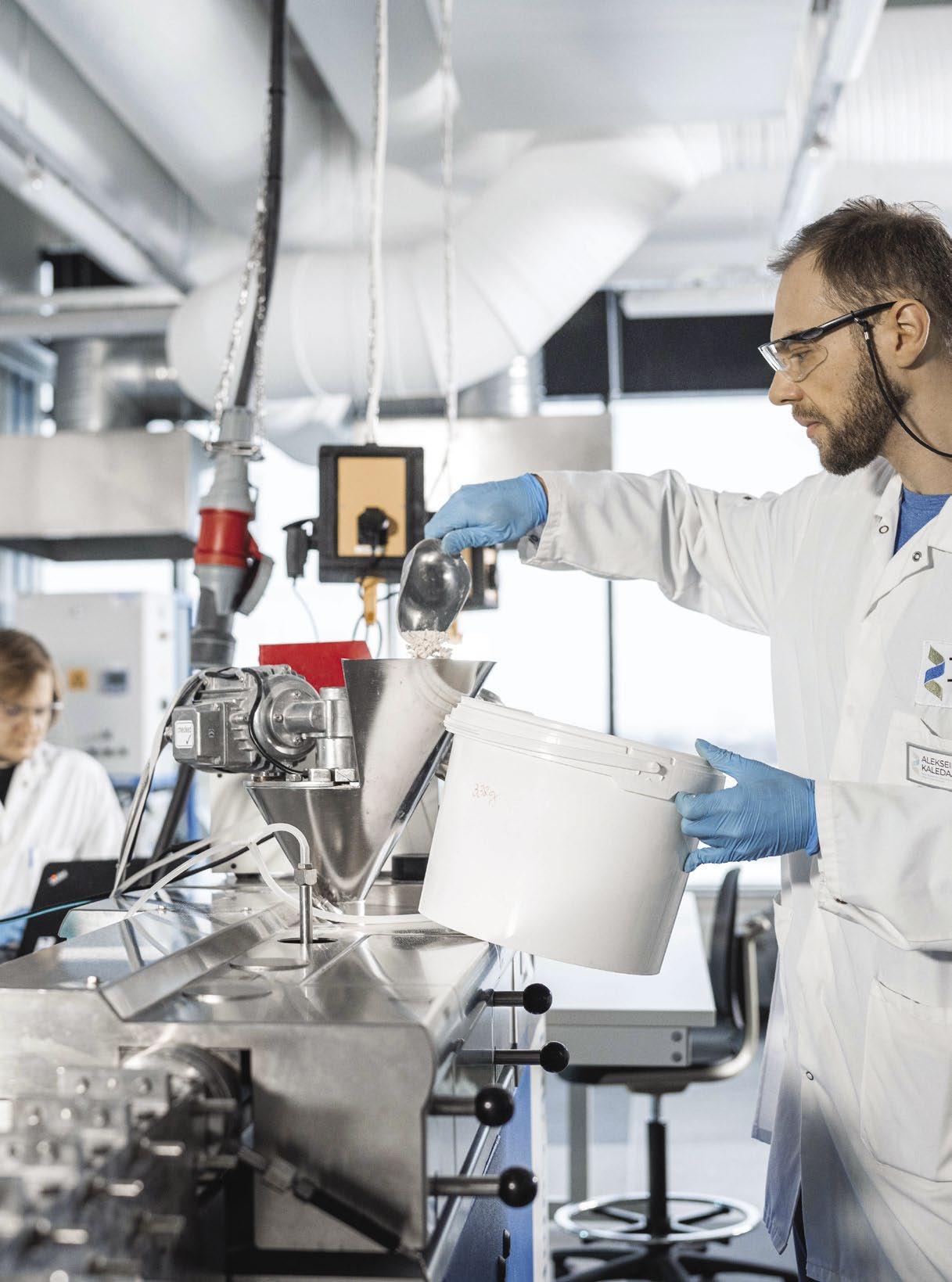 By Ann-Marii Nergi
By Ann-Marii Nergi
The Centre of Food and Fermentation Technologies (TFTAK) is where 21st century biological science and entrepreneurship meet. The Centre is a privately-owned contract research organisation based in Tallinn that works on nothing less than finding the solution to one of our greatest global challenges: feeding the world’s only growing population in a sustainable way.
“We know that the key to feeding the planet while preserving our environment is transferring food production from the farms and fields to large-scale bioreactors, which are not dependent on the climatic conditions, affected by global pandemics or the availability of agricultural land,” says Rain Kuldjärv, TFTAK’s team lead in functional foods and beverages. And this is where TFTAK comes in.
“Our mission is to accelerate plant-based protein research and support our partners in launching new products and services based on the novel approach of food synthetic biology. Plant-based proteins are a sustainable opportunity for replacing animal sourced proteins, which benefits not only public and environmental health but also animal welfare. We rely on emerging technologies to extract and process plant proteins into next-generation healthy meat and dairy alternatives with a superior
In the innovative foods category, TFTAK has developed functional foods and beverages (e.g. enriched with proteins, probiotic bacteria, fibre, vitamins, and minerals) and carried out dietary intervention trials to demonstrate the health benefits of the developed products. Many such products have reached the Estonian and Nordic market and improved consumer health. The most recent examples of co-developed products were with well-known Estonian dairy company Tere AS, and were awarded in different categories of “Eesti Parim Toiduaine 2022”.
TFTAK has also worked together with the Estonian company Tactical Foodpack, which created a product line of ready-meals with long shelf-life, but without added preservatives or additives. As the company uses innovative freeze drying technology, TFTAK has been helping them in new product development and shelf-life studies.
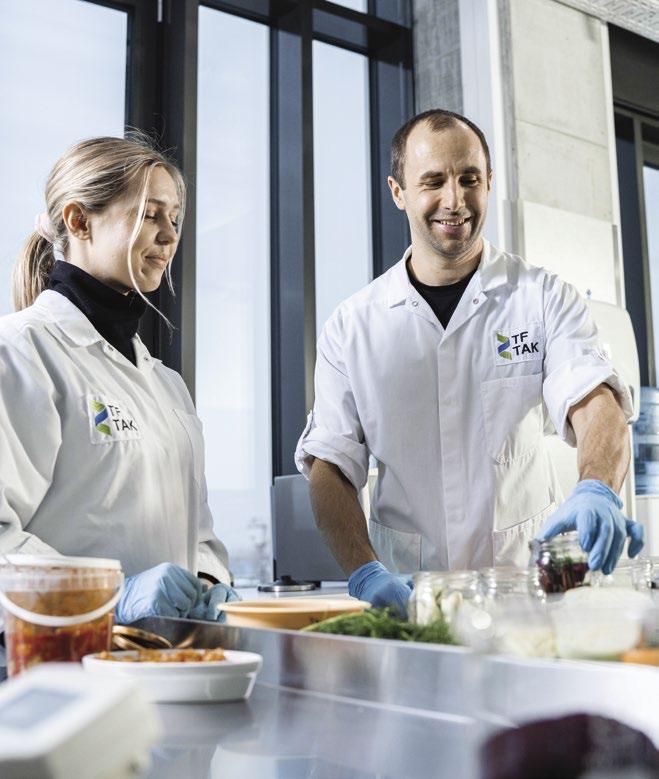
Just recently, TFTAK received a quarter of a million euros in funding from a recognised international fund to create a unique and authentic salmon scent, so that sustainable and delicious seafood can be produced from plant-based raw materials.
taste and texture and at a reasonable price,” explains Kuldjärv. If we want to reduce animal-based protein consumption to be more sustainable and address global challenges such as climate change and food security, then it is crucial that we become excellent at educating omnivores on the lifestyle and ethical benefits of plant-based, protein-rich products. But to achieve this positive change, we must make sure that the products that reach the market can be tasted for the very first time by a sceptical consumer. The current price point and promotional awareness are as important as the quality.
‘Cost’ is one of the keywords for TFTAK. As the global rise in inflation is a significant concern everywhere, price is the main worry for consumers. Affecting buying decisions, this then extends to producers and suppliers who must make business decisions that balance the need for consumer affordability alongside their own rising costs. And for the plant-based protein market, the effect is clear and negative – consumers are beginning to ‘trade down’ from plant-based meat to less expensive protein alternatives, including conventionally sourced meats. With conventional meat and meat products often at half the price of alternatives, preferences based on lifestyle or ethical choices are becoming secondary to sheer affordability.
Researchers at the Centre of Food and Fermentation Technologies (TFTAK) focus on developing innovative solutions for the food and biotechnology industryIt is vital to bring down costs for manufacturers as it is an important lever to gain market share. It requires that all industry stakeholders start working together for a solution so that plant-based protein products can be more accessible to consumers. Despite the challenges, TFTAK is optimistic – they know that challenging market conditions amplify the importance of re-evaluating new technologies, energy consumption, raw materials, and waste management plans. “Inflation has reduced the enormous investment growth that we have seen previously, but it has not stopped nor lowered investment. Private investments into plantbased protein in 2019 was more than 500 million USD, growing in 2020 to more than 2.1 billion USD. Cultivated foods and fermentation-enabled foods show a strong increase in investments and will probably level with plant-based proteins in a few years,” says Kuldjärv.
There are already some ‘big players’ who are working with TFTAK. Food industry giants like IFF and Lallemand. For example, TFTAK is a strategic partner of IFF (former DuPont) in their focus on developing cultivation and bioprocess capabilities for ‘next-generation’ probiotics. “We work in close collaboration with our partners and clients to first develop the solutions at laboratory scale, then demonstrate the feasibility of the
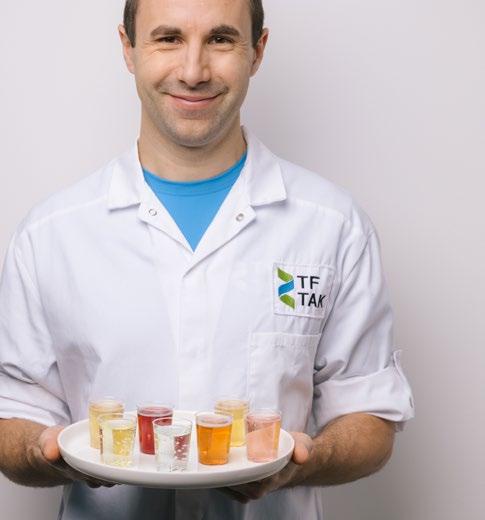
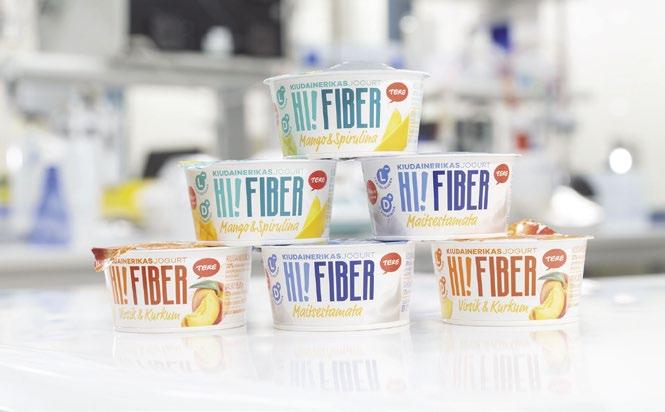
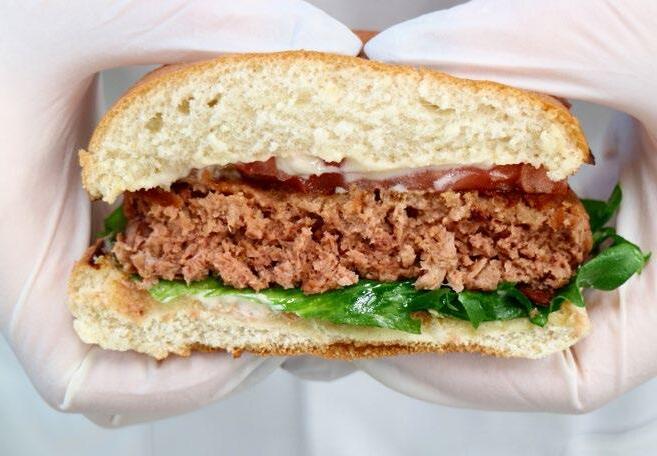
technologies at pilot scale and support our clients during the implementation phase – applying scientific advancements in food production,” explains Martin Lall, managing director of TFTAK.
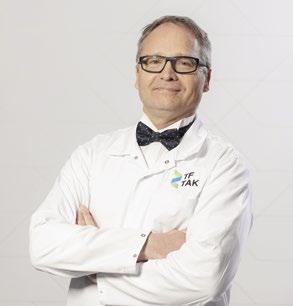
How does a food giant find out about a small Estonian food lab? Lall says that the industry is not a location-dependent. Approximately 35 percent of their income comes from international collaborations, contract research or scientific collaboration. “As our home country, we see many benefits to being based there, with the ability to collaborate with other Estonian companies, institutes and farmers to help to solve problems, create value-added products and find new innovative solutions. Developing new functional foods and beverages using local uncommon raw materials is something we are keen on.”
Lall points out that people all over the world want to experience new flavours and taste new food products. “This gives Estonian companies the opportunity to show how rich the natural resources are and that if you can combine traditional raw materials and innovative R&D approaches, you get products that everybody will want to taste and experience.”

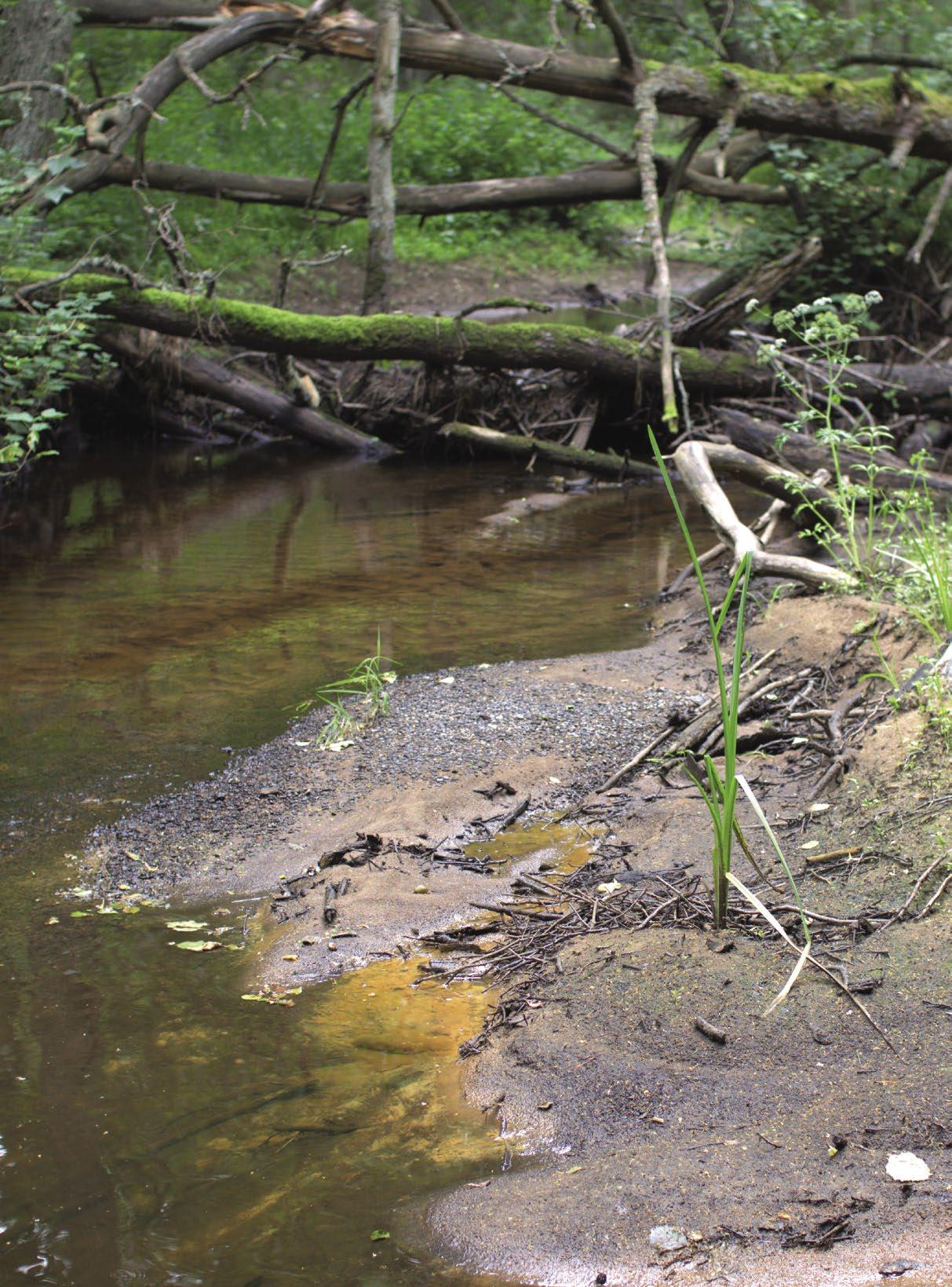 By Maris Hellrand
By Maris Hellrand
Jürgen Karvak, wading knee-deep in a small river, is pulling 20x20 cm transparent plastic squares from metal rods in the stream and flushing them in the water. These are the so-called dormitories of tiny freshwater pearl mussel babies that are taking part in a conservation project of this endangered species. Karvak, a PhD student at Tartu University is one of the scientists taking care of the barely visible mussels from spring to autumn: “We have six spots in the river with the mussel dormitories that need to be cleaned weekly from all sorts of sediments and biofilm that flow and grow in the river.”
As a biologist, Karvak’s main passion is all sorts of freshwater creatures who are not getting so much attention as the oceans or forests, even though they are putting up a fight for survival worldwide due to climate change and human interference in their habitats. “Freshwater biodiversity is disappearing twice as fast as that of forests and oceans. The freshwater pearl mussels are a perfect indicator species for the overall situation of a habitat,” says Karvak. “When the mussel populations are doing well, it’s a sign that the natural processes are functioning and the biodiversity in the area is healthy.”
In Estonia, the freshwater pearl mussels are listed as critically endangered and they are truly rare. They can only be found in one river that flows through Lahemaa National Park into the Baltic Sea on the North coast of Estonia. In fact, they are so protected that the conservationists don’t even want to disclose the name of the “pearl” river.
The Estonian State Forest Management Centre (RMK) organised a ‘census’ of the pearl mussels in 2022 and found that there are 25,500 fresh-
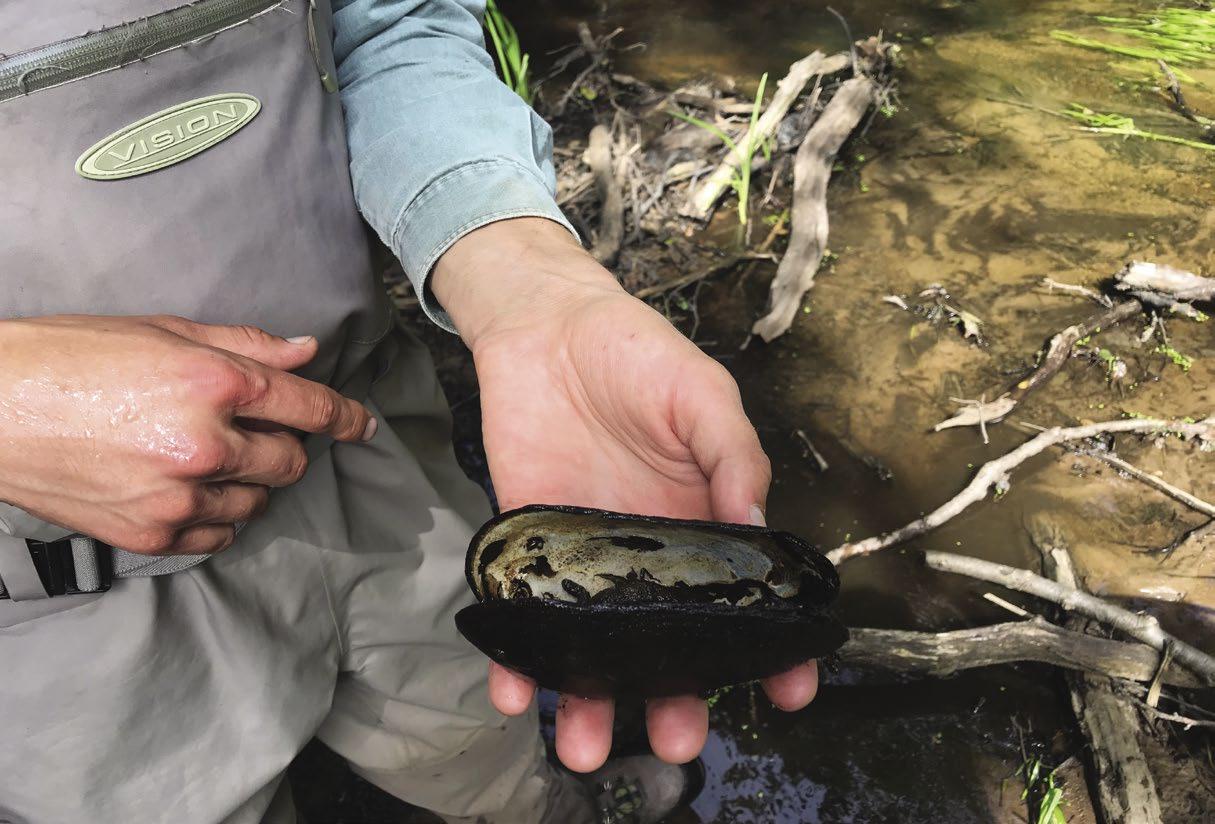
water pearl mussels in the 21 km long habitat of their native river. This is more than the previous pessimistic estimates and less than the optimistic guesses. What makes the scientists worry is the age of the mussels. A bit like the aging western society, the mussels have a reversed population pyramid. There are many middle-aged and old mussels but very few younger than 40. As seen in many other European regions, in such cases, the whole population can be wiped out suddenly. In Europe about 90% of the freshwater pearl mussels were lost by the end of the 20th century. To avoid that fate, conservation and re-population projects such as LIFE Revives of RMK, Tartu University, in cooperation with Finland and Sweden, and the CoastNetLIFE by the Environmental Board of Estonia, started in 2021 with the aim of improving the quality of mussel life in the rivers by reversing landscape interferences from earlier times to make the rivers flow more naturally and to eliminate the number of sediments that gets to the river from agricultural landscaping. Studies have found that sediments are likely to be blamed for the ‘infant death’ of the mussels on the riverbed – they just don’t get enough oxygen due to the sediments. The other part of the programme is the mussel nursery and repopulation.
Jürgen Karvak explains the amazing path that the tiny mussels have gone through by the time they are being re-settled into the river ‘dormitories’: “The adult mussels eject millions of larvae that are about half a millimetre long. Only very few of them succeed in finding a host – a trout or salmon – and attach them to the gills of the fish. They stay with the fish until next spring and drop to the river bed.” Thus, the health of trout population in the river is also crucial for the mussels and trout are also the ‘little helpers’ of the conservationists. They have caught trout
from the river, transferred them to a research centre and waited until the larvae or glochidia let go of the hosts. These tiny mussels are then being taken care of in special aquariums and dishes. It’s also one of Karvak’s tasks to deliver fresh water from the native river for the mussel babies every week, so that they get the original nutrients from their natural habitat. After a year in the lab, the strongest mussels were resettled into the river, to the mussel dormitories. So far, about 6000 mussels have been moved back to their birth river. Karvak examines the glochidia under the microscope regularly to discard the dead ones. They are barely visible to the eye but do put on a real show under the microscope!

Karvak knows the favourite locations of the mussels in the river and shows us an elderly specimen. The grown-ups are about 10 cm long and have a ‘leg’ that occasionally pops out from the shell to move. One adult mussel filters about 40 litres of water per day to get the nutrients needed. Karvak explains: “They also offer habitats for other species within their colonies – small fish can find shelter; vertebrae live amidst them. Even shells of dead mussels serve as living quarters for other species. In small rivers everything is connected as in other ecosystems and the mussels are one very important link in this chain.” The oldest known freshwater pearl mussel in Estonia was caught in 1993 when it was 134 years old. Karvak admires these creatures: “The mussels lead a slow life and thus live long. Perhaps a great example for us humans as well.” Taking care of the mussel babies is a good example of this kind of slow life – it requires a lot of patience but also brings him to the most beautiful and peaceful natural surroundings.
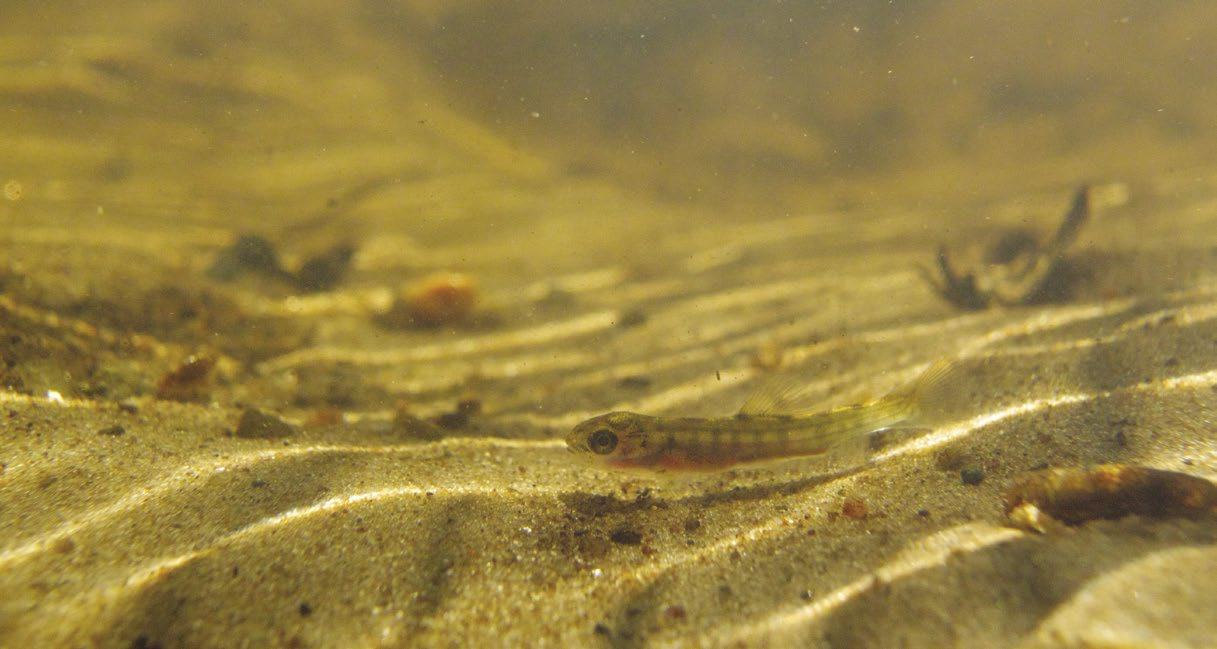
One of these beautiful spots that the mussels inhabit is where the river makes a sharp bend around an old farm. The family of the farm has known for generations that the mussels have to be safeguarded and their habitats protected. Occasionally, they spotted damaged mussels on the shore — it turned out that the wild boars liked to munch on them. Farm owner Imbi Jäetma recollects a summer day several decades ago: “We were harvesting hay and putting hay bales into the barn. During our lunch break, we laid down on the fresh hay and suddenly my husband noticed a matchbox stuck to the roof beams. He took it down as a precaution and when he opened it, there were several pearls inside!” The family cherishes the treasure even though it does not exactly look like shimmering diamonds. An old aunt immediately remembered that the farmhands occasionally tried to open the mussels to find pearls and sell them to goldsmiths in pre-WW2 Tallinn. According to Jäetma, there is even a legend that the lord of Kolga manor gave a pearl from this river as a gift for Catherine II’s crown in the 18th century.
The freshwater pearl mussels create pearls when a corn of sand or some other foreign body gets inside the mussel and it can’t expel it. The mother-of-pearl layer inside the shell starts to grow around the intruder to insulate it from the mussel’s body.
The conservation project has run only a few years and the outcome is far from clear. Success depends on the survival of the tiny mussels in the dormitories but also on reinstating their natural habitat so that they can survive and grow on the riverbed once resettled. Karvak says that the members of the local community are potentially the best conservationists and hopes to include and involve the locals in looking after the mussels.

Once again, the otherwise quiet and calm town of Viljandi will be transformed into the Viljandi Folk Music Festival from the 27th-30th of July 2023. It is a music festival that values tradition, heritage, and local identity, adapting spiritual values developed over centuries to contemporary life. This summer the festival will happen for the 30th time. How did it all start and why do crowds return again and again? Event spokesperson Kristjan Priks from the Estonian Traditional Music Centre shares his thoughts alongside Kikee Doma Bhutia, research scholar at the University of Tartu Asia Centre, and long-time folkists Siiri Merila-Hubbard and Nigel Kelly, who are devoted attendees.

Enchantingly picturesque concert venues in the castle ruins and an atmosphere that makes you return.


The origins of Viljandi Folk Music Festival go back to 1989, when the folk music department was opened at the Viljandi Culture School (now the UT Viljandi Culture Academy). Faced with a search for identity and, against the backdrop of rapidly evolving political events, they had to find a path that would lead from the pseudo-folk arts of the Soviet era to excellence in traditional music education.
They looked for inspiration in Finland and, following the example of the Helsinki Sibelius Academy, the folk music specialisation developed into a folk music department. A number of new students were accepted, including Ando Kiviberg, who is now the festival’s director.
In the summer of 1991, students from the folk music department visited the Falun Folk Music Festival and the ETHNO international camp for young folk musicians. They witnessed a living tradition in the Falun camp – young people playing old tunes for their own pleasure and enjoyment – the presence of an audience was secondary. They realised that folk music is not just something ancient, something that cannot be changed, but that it can be a natural part of people’s everyday lives even today, and they wanted to spread this kind of thinking.
At the first folk music festival on the 15th of May 1993, which was held entirely with the support of private capital and on the initiative of a citizens’ association, nearly 200 ticket holders sat in the Viljandi Song Festival Grounds. It was not a large number, but enough to give the organisers the courage to go ahead.
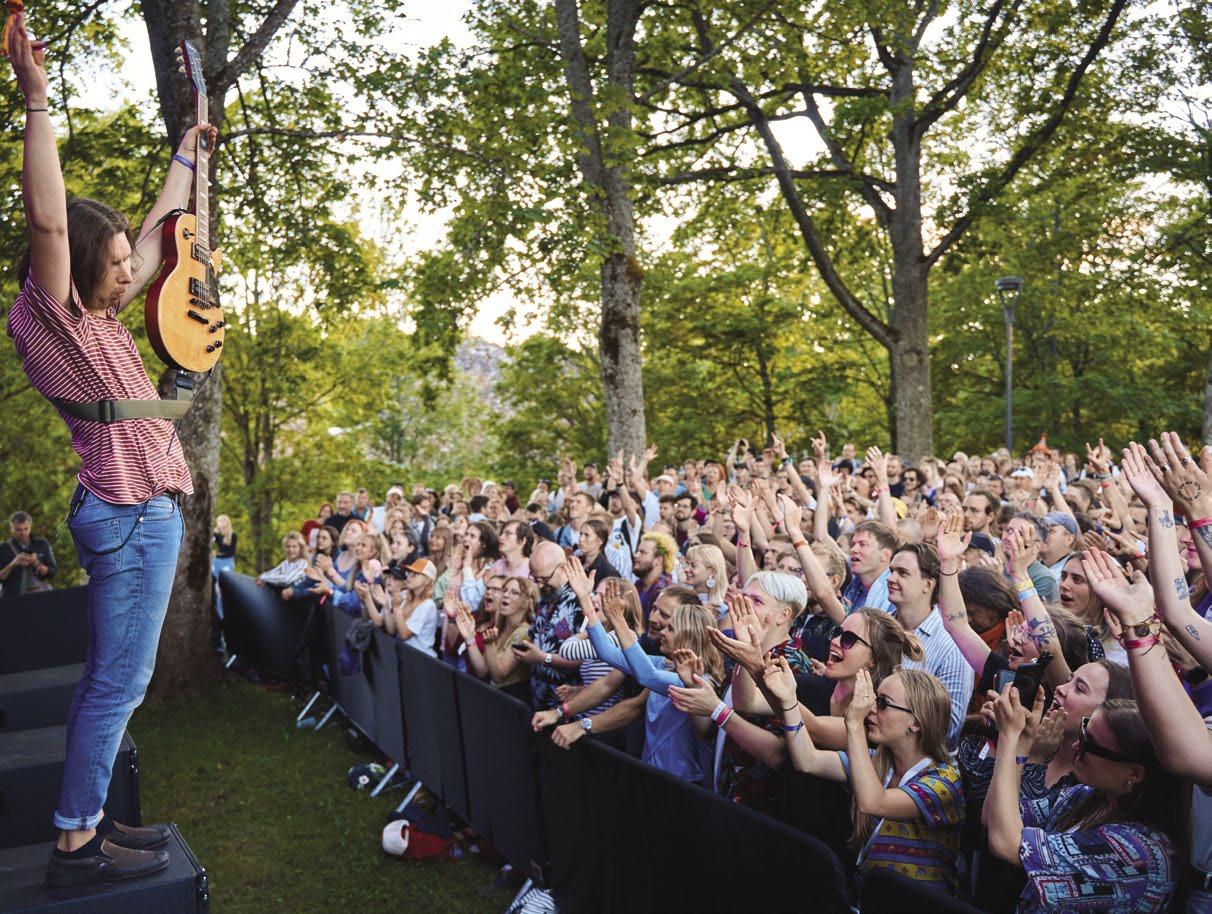
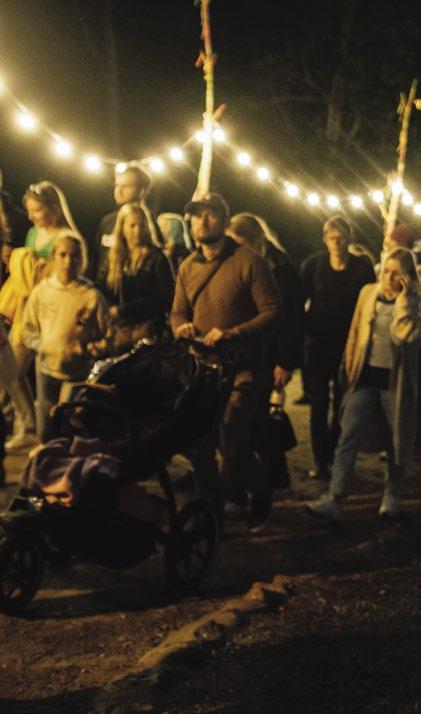
Prior to the 1994 festival, Kiviberg wrote to the editor-in-chief of one national weekly: “By supporting us, you are helping to lay the foundations for a great summer tradition, the fame of which will spread far beyond Estonia’s borders in the future.” This sentence is a good reflection of the fanaticism and enthusiasm with which the organisers believed in the rightness of the path they had chosen.
After the 1994 Viljandi Folk Music Festival, which had an audience of 5000 people, the newspaper Postimees reported in one of its headlines: “Three days that shook the world”. The festival had succeeded in taking advantage of Viljandi’s cosiness and beautiful natural surroundings to create a pleasant atmosphere for people to enjoy the music. The atmosphere of the festival was invigorating, offered pleasant experiences and the audience enjoyed the
abundant spontaneous music-making outside the programme.
The beautiful countryside and the picturesque concert venues in the ruins of the castle, together with the happy musicians playing into oblivion, still create the enchanting and evocative atmosphere of this festival.
The 30th Viljandi Folk Music Festival will take place from the 27th-30th of July 2023 and this year’s theme is “Let it resound!”.
More information and tickets can be found on the website viljandifolk.ee/en
By subscribing to the newsletter on the English-language website, you can get the latest news in English.
Follow the festival on Facebook www.facebook.com/ Viljandi.parimusmuusika.festival
and Instagram www.instagram.com/viljandifolk
Photo by Aron UrbWhen I first arrived in Estonia in the winter of 2016, I attended a Winter Academy in Viljandi. While on an excursion, as I explored the narrow zigzagging lanes through the Kirsimägi hills covered in snow, I felt like I was walking on Mount Khagchenzonga (where I come from, the third highest mountain in the world). Seeing the frozen lake beneath and some tiny people skating on it was breath-taking. The virgin snow hung delicately from the branches; I felt lucky to have witnessed such a view. After that, there was no looking back; I returned to Viljandi year after year, mainly to attend the folk music festival.
Over the seven years that I have been here in Estonia, I have visited the festival five consecutive times. Once I even volunteered, and I am already looking forward to 2023 when the festival will happen for the 30th time.
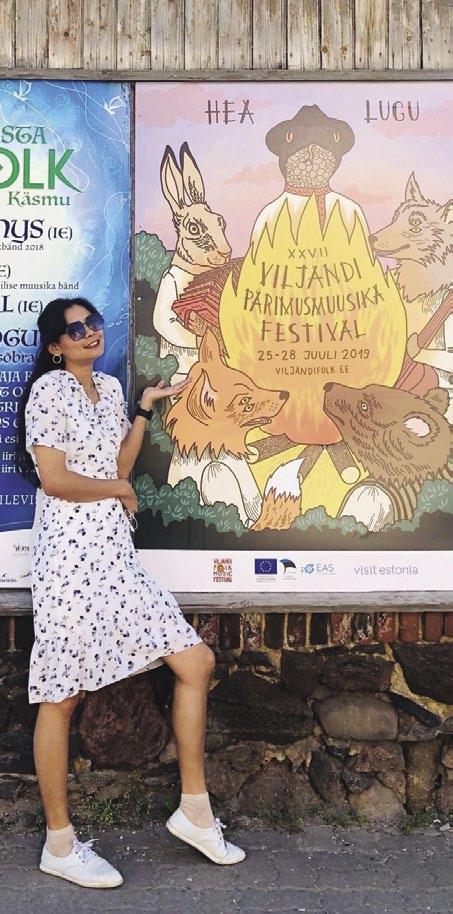

While truly reminiscing about summer, sipping my hot ‘zya’ (Sikkimese tea) from a University of Tartu cup, looking into the endless depth of snow outside my window. I realise why I fell in love with this particular event and look forward to it in Estonia.
As a foreigner there is an innate desire to find something to connect with in the newly adopted city that reminds you of your home or gives you a sense of belonging. For me, the Viljandi Folk Music Festival is one such place where, no matter where you come from, you become one with the music and the crowd, and for a moment, you belong to this place, to this vibe, to this moment.
This personal journey of considering the simple minor joys of attending a festival otherwise ignored and seldom considered necessary brings into focus the essential thing we humans forget: to live in the moment. More specifically, I weave into words the laughter, tunes, dances, calm, and chaos surrounding the Viljandi Folk Music Festival, which has started to evoke joy, continuity, desires, and hopefulness. Beyond all glory and excitement, there is a possibility to belong to a community that accepts and allows you to become a part of something bigger than just a ‘festival’: a movement, a revolution, a silent cry against monotony, and an escape from reality.
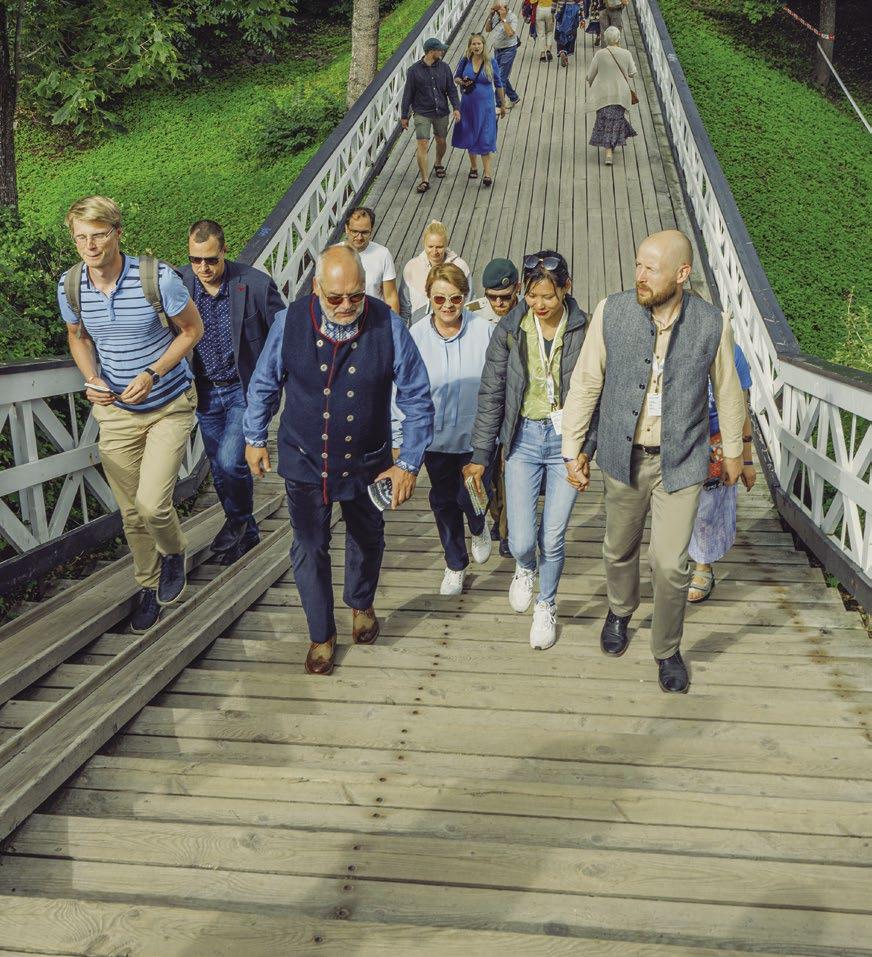 Kikee Doma Bhutia, a research scholar at the University of Tartu Asia Centre
Photo by Muumi
Kikee Doma Bhutia
Kikee Doma Bhutia, a research scholar at the University of Tartu Asia Centre
Photo by Muumi
Kikee Doma Bhutia
After five years of attending the event it dawned on me that the festival audience remains the soul of this festival – an entire community is established where you can find people of all ages having a blast and basking in the music and guzzling beer. The gracious audience cheerfully stood with their arsenal of umbrellas and raincoats through heavy rains and scorching Estonian sunshine. I realised that the musicians in attendance would have otherwise remained peripheral without such a welcoming and wholesome audience. People who attend the festival seek not merely music but look forward to forging new bonds with like-minded people and partaking in a collective spiritual experience.
I come from India, particularly Sikkim, with a robust VIP culture. I was astonished to see the VIPs hanging out under the sun, without a care in the world, and enjoying the ambiance with a chilled beer (in my head, making important deals for their country). They were left with enough personal space and privacy with no intrusions made by media to catch a bit of salacious gossip as opposed to India, where paparazzi usually hound the VIPs at every public appearance.
Viljandi Folk Music Festival is a festival that values tradition, heritage, and local identity, adapting spiritual values developed over centuries to contemporary life. In addition to keeping traditions alive, the festival is devoted to strengthening national character and revitalising the mother tongue. It is effective, since most artists and their music are presented in Estonian. You may feel lost as a foreigner, but you are certainly proud to see how a small nation, full of young people and festival-goers, still holds tightly to its mother tongue.
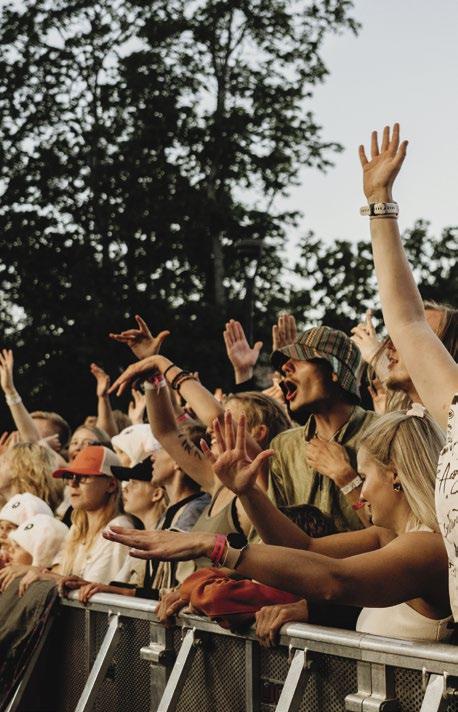
Throughout my five consecutive years attending the festival, I have seen how it handled the Covid-19 crisis, the war in Ukraine, and the global lockdown. I am inspired by this small town of Viljandi and the pioneering efforts of the Viljandi Folk. Despite overcoming challenges and threats, the community always runs smoothly and succeeds. Because of this, it has become a symbol of identity, and the upcoming theme of the festival, ‘Let it resound,’ brings a sense of celebration, togetherness, and hope.
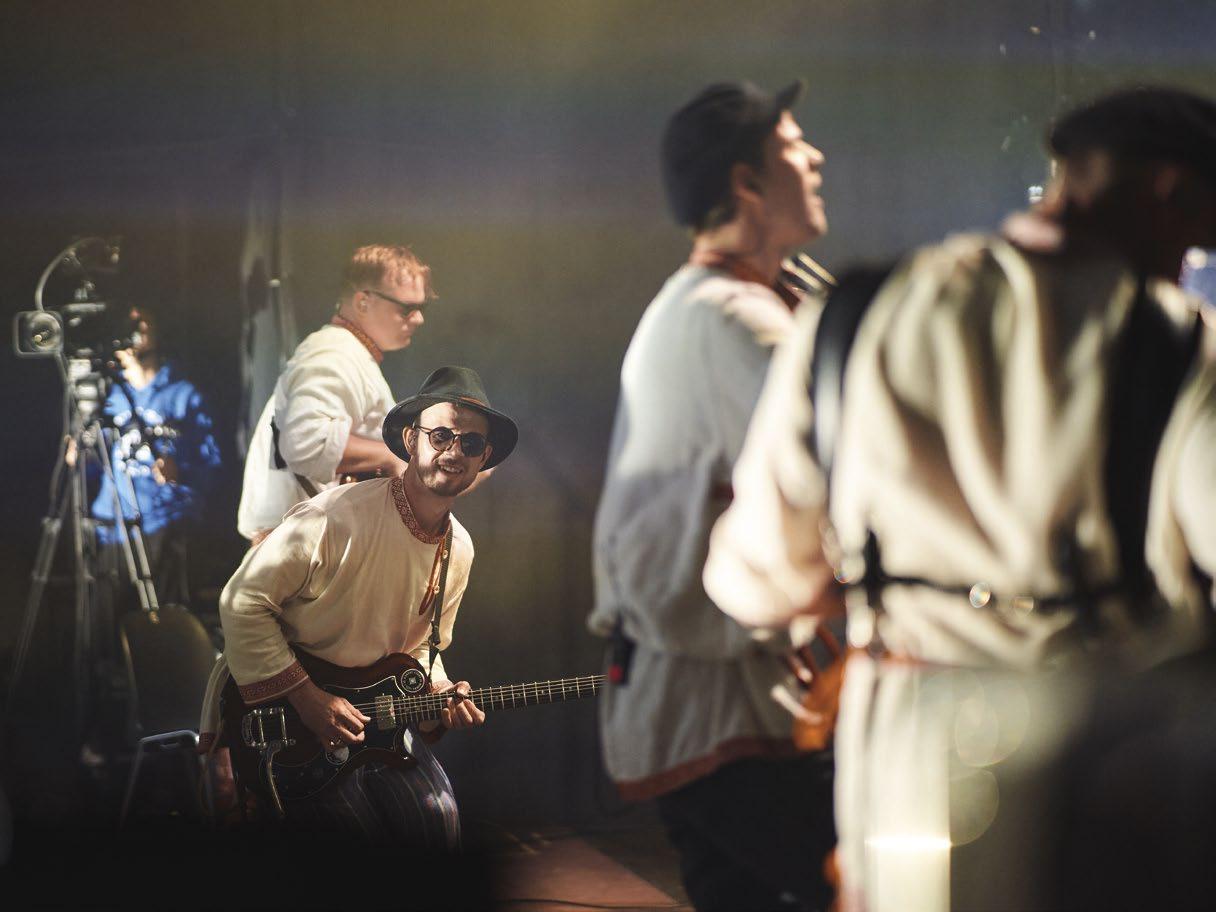 Photos by Henri-Kristjan Kirsip
Photos by Henri-Kristjan Kirsip
Folk connects different people and cultures and helps to create links between distant countries and continents. Viljandi Folk Music Festival is how our world could be and should be, a mini island of friendliness and co-existence in a turbulent and fast-changing world.

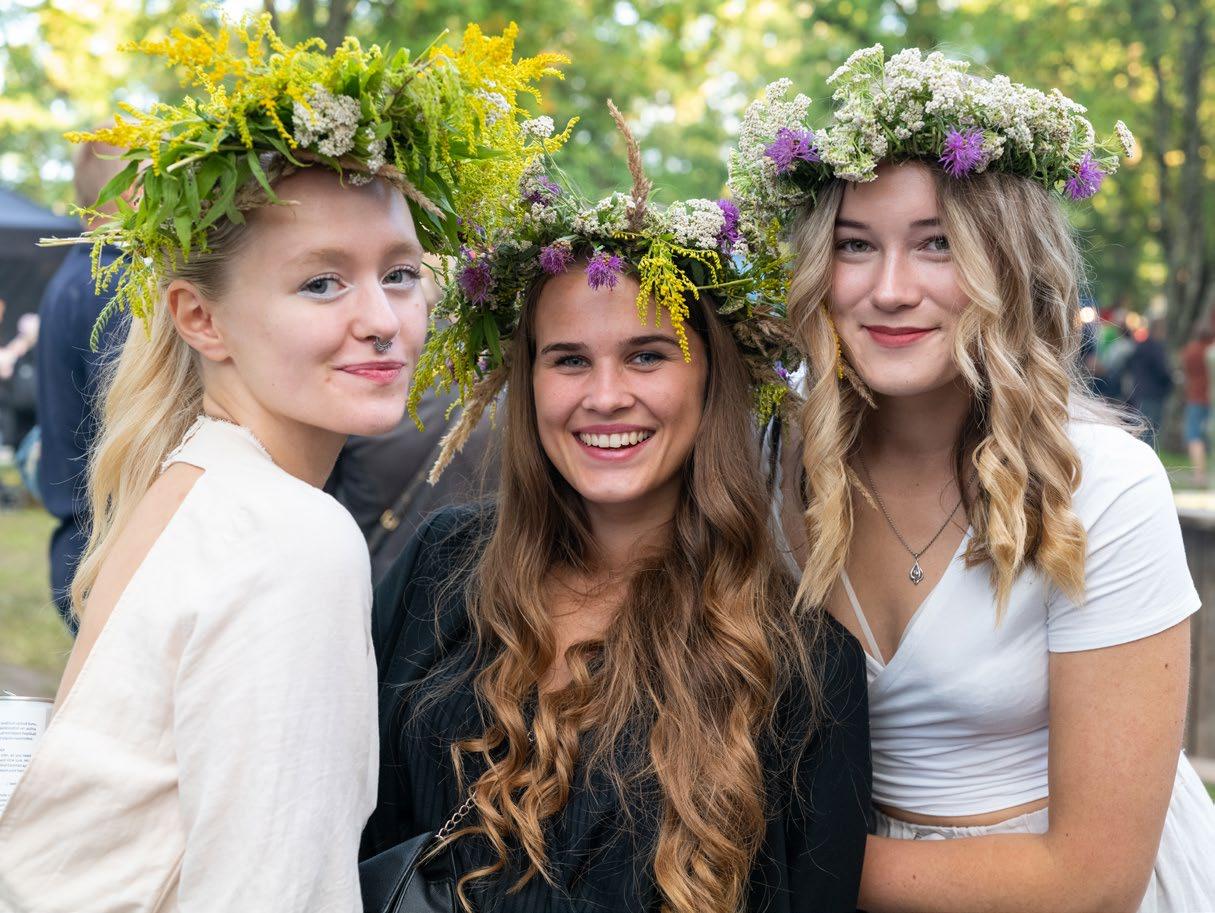
The festival is held over four days, usually in the last weekend of July. There are around 80 concerts during this time, so every day the visitors have a hard choice. What to take, what to leave? With deeper thought and concentration, you could visit maybe one quarter of the concerts, yet you can wander through almost
all of them. The performers are large ensembles down to trios, duos or just individuals. Often a concert becomes a party, as the front of the stage is hemmed in with people singing and dancing.
And the audience! There is no age or other limits. The participants are babies, children, young and old, government ministers and even the President… Everybody feels good. There can be a shortage of seats, but always a few square inches on the grass or under the trees can be found.
Photo by Martin LazarevEach festival has its own theme. A few years ago the festival was simply called, ‘Good story’. All folk tells a good story. In 2022, the theme was ‘Roots and treetops’, emphasising continuity from the past into the future. And the festival has that continuity: often on the stage are different generations from the same family, teachers and pupils, older and younger musicians. Several new, young folk music groups have appeared. Some of the newcomers probably will not survive and will disappear from the folk scene, but at least they take on the challenge and try. Workshops and camps with younger musicians give some hope for the future.

Some of the mature and veteran performers hold audience records. With their charm,
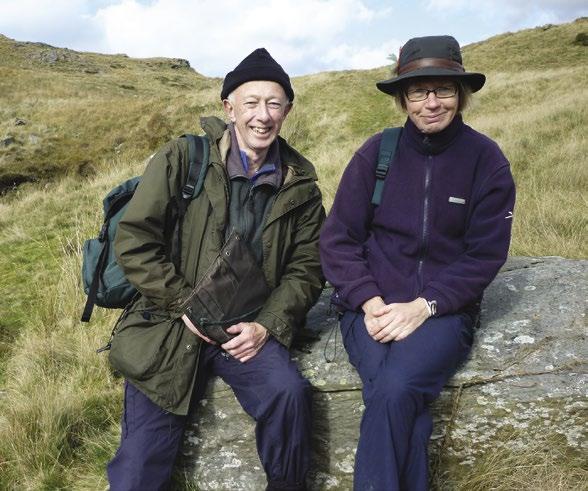
stories, rhythms, and with the aid of good weather, some have drawn over 6000 people to a single concert. Over the years, almost all European countries have been represented, with the furthest guest performers from China and South America.
The venues. Over the years, the concerts have taken place in several dozen different places. The main stages are set up in the Viljandi Castle hills: Kaevumägi (well hill) and two on Kirsimägi (cherry hill). Is there a better place for folk music than between ancient ruins? No. It is somehow magic to watch the human chain sneaking over to the venues in the evening sun… From the platforms one can enjoy picturesque views to the romantic Lake Viljandi and down to the gorge below. The concerts
 Nigel Kelly and Siiri Merila-Hubbard
Nigel Kelly and Siiri Merila-Hubbard
have been held in various yards and squares. Viljandi’s Freedom Square and song festival ground have had lively events. The Folk Music Barn and St. John’s and St. Paul’s churches have opened their doors and welcomed visitors for more intimate concerts. Sometimes you do not need a defined place. Spontaneous, self-formed mini-concerts have been going on streets, in parks, and by St. John’s Church.
Outside the mainstream. Apart from the official programme, there are lots of workshops, study groups, and other meetings during the festival days. By day, energetic young people can enjoy dancing on the lake beach, and at night parties last long after midnight. Those who appreciate something quieter have not
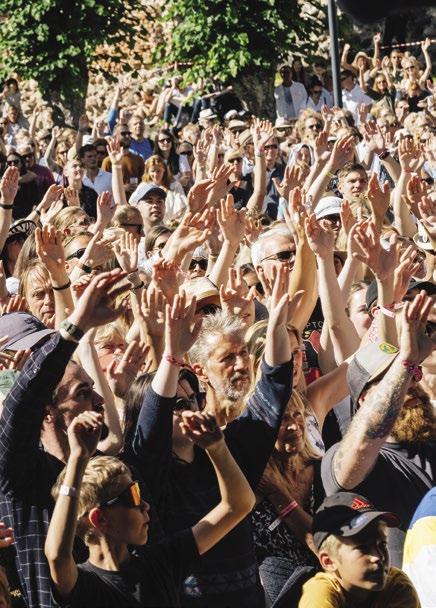
been forgotten either. The festival programme offers evening and midnight nature trails, and local history walks, all lead by knowledgeable guides.
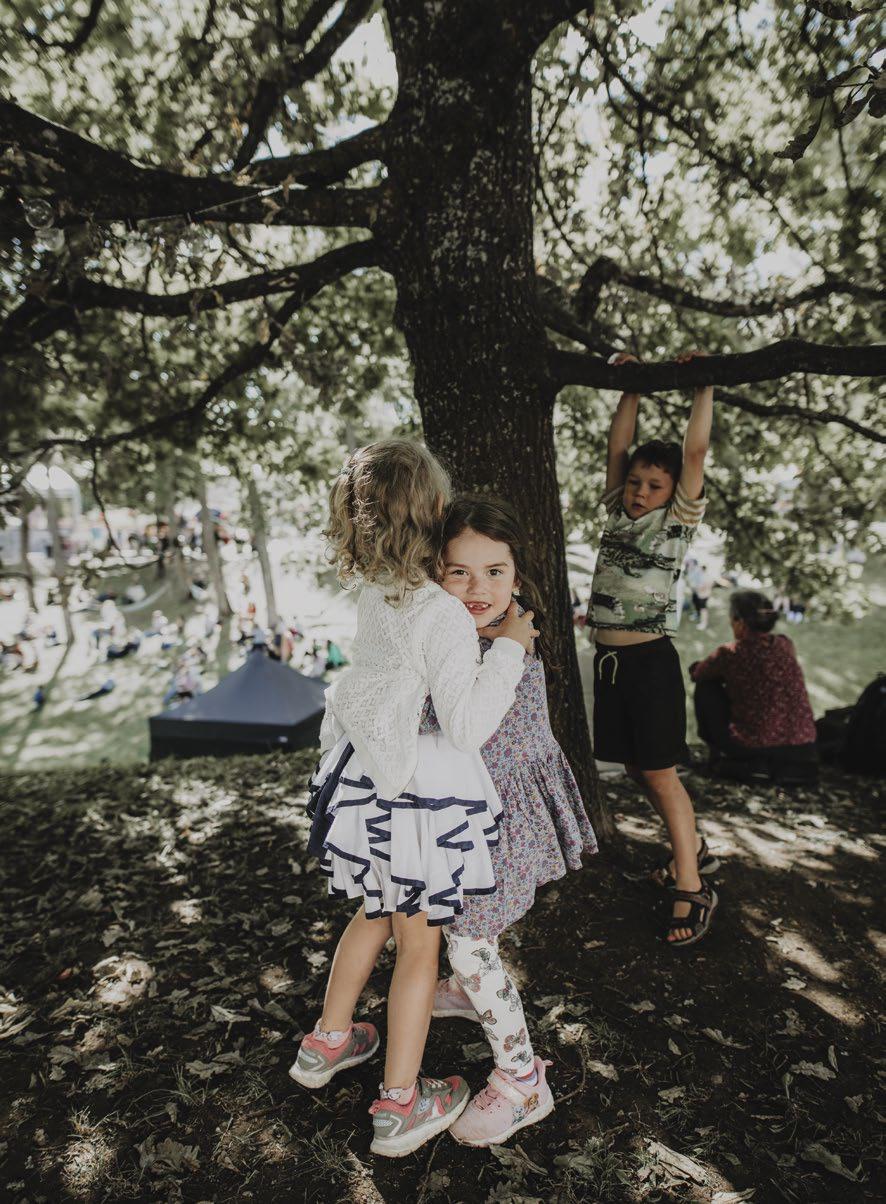
Apart from intellectual nourishment, the festival is well organised and improves every year. No long queues, the organisers are gently shepherding visitors, and everything runs smoothly. The festival is a green event: rubbish has been environmentally sorted for some years; there are free drinking water taps; there are designated places to wash your own or multiple-use crockery. After four days the festival area and town are cleaned. The food area offers plenty of home-cooked and authentic Estonian food. Always, it is difficult to choose…
 Photo by Kirke Kuiv
Photo by Kirke Kuiv
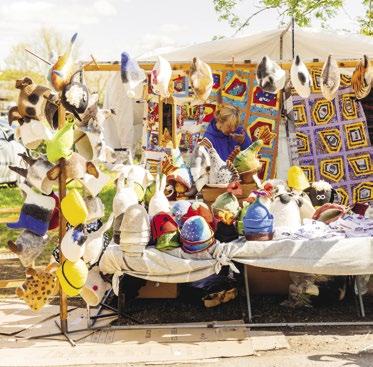
Türi Flower Fair
19th – 21st of May @ Türi
The start of the gardening season in Estonia is marked by the Türi Flower Fair. There are about 700 sellers from gardening companies, forestry schools, and private gardens, all with special offers designed to help gardening enthusiast and regular green thumbs.
tyrilillelaat.ee
Türi Lillelaat
Tallinn Music Week (TMW)
10th – 14th of May @ Tallinn

Held each spring since 2009, TMW is one of the most acclaimed new music and city culture festivals and key networking events for music and creative industry professionals across Europe. 176 artists from 41 countries will perform at this year’s festival, which will take visitors through Telliskivi Creative City, Noblessner and the Old Town, connecting artists from all over the world and across genres.
www.tmw.ee
tallinnmusicweek
Tallinn Music Week
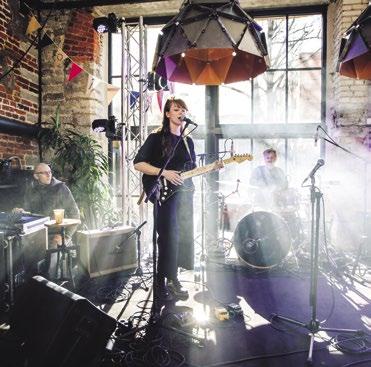
Tallinn Old Town Days
2nd – 4th of June @ Tallinn
Tallinn Old Days is the biggest festival in the Old Town dedicated to local cultural heritage and community. This year, it will take place for the 41st time, focusing on the Old Town as a modern urban space. Various music, theatre, art, and sports events are held during the three days.
vanalinnapäevad.ee
vanalinnapaevad TallinnOldTownDays
9th – 10th of June @ Pärnu Vallikäär
For two days, 300 caterers from Estonia and abroad serve their best fare. There are outdoor restaurants, cafés and even a pet restaurant on the beautiful meadow by Vallikäär. You can enjoy the Good Food Fair, the national fishing championships and cooking competitions; a large and exciting play area is available for children.
eestifestivalid.ee/grillfest-estonia grillfest Grillfest
 Photo by Magnus Heinmets
Photo by Diana Pashkovich
Photo by Tallinn Old Town Days
Photo by Magnus Heinmets
Photo by Diana Pashkovich
Photo by Tallinn Old Town Days
30th of June – 2nd of July @ Tallinn
Song Festival Grounds and Kalev Stadium
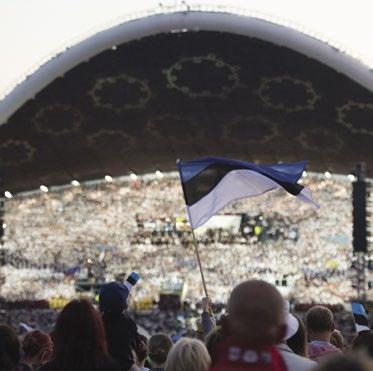
The tradition of the Estonian song celebrations dates back to 1869 and it is included in the UNESCO intangible cultural heritage list. The Youth Song and Dance Celebration is a relatively newer phenomenon – the first one took place in 1962. This year’s festival consists of three parts: Dance Celebration ‘’Bridges’’, Folk Music Celebration ‘’Really’’ and Song Celebration ‘’Holy is the Land’’.
2023.laulupidu.ee/en
@laulutantuspidu
Laulu- ja Tantsupidu
Pärnu Music Festival – Järvi Academy
12th – 21st of July @ Pärnu
The 2023 Pärnu Music Festival brings legendary violinist and violist Pinchas Zukerman to Estonia and Neeme Järvi will conduct the festival’s opening concert. Paavo Järvi leads the Estonian Festival Orchestra in four concerts and Kristjan Järvi returns with the Baltic Sea Philharmonic.

parnumusicfestival.ee @parnumusicfestival
Pärnu Music Festival
13th – 16th of July Orissaare, Illiku islet
The purpose of this exciting festival is to enjoy everything that beautiful nature, great music and art, friends, and the Estonian summer have to offer. Islanders are known for sticking together and I Land Sound is no exception –electronic nightlife pioneers, artists and the locals join forces for an enriching event.
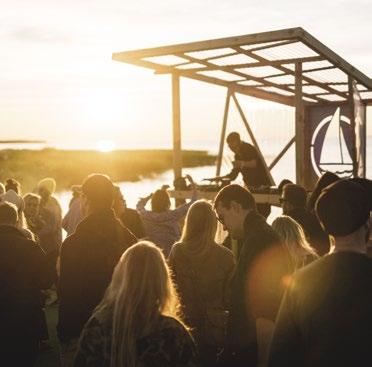
ilandsound.ee ilandsoundfestival

20th – 23rd of July @ Tartu and southern Estonia
Once again, the world’s top rally drivers will compete on the curvy, technical roads of Southern Estonia. The service park, rally- and media centre are located by the Estonian National Museum in Tartu while the opening and finish podium is in the Town Hall Square The EXPO area will once again be open in the city centre, where various types of entertainment and services can be found. The entrance to the podium and EXPO is free for all visitors.
rallyestonia.com
@rallyestonia
Saaremaa Opera Festival

25th – 30th of July @ Kuressaare
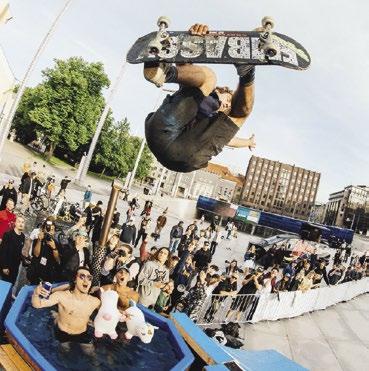
The Saaremaa Opera Festival is the most popular opera festival in the Baltics. Held since 1999 in the historic courtyard of Kuressaare Castle, every summer an opera venue with 2000 seats is set up especially for the festival. Over the years, the festival has hosted acclaimed guest productions from theatres across the world. In 2023, the featured guest will be the Maria Bieșu National Opera and Ballet Theatre from Moldova.
www.saaremaaopera.com
saaremaaopera
Saaremaa ooperipäevad
Ironman Tallinn
5th – 6th of August @ Tallinn
Ironman is part of the summer triathlon festival in the capital Tallinn. The main competitions take place on two consecutive days. Over the years, the Ironman Tallinn has attracted almost a thousand participants from different countries around the world to compete in Estonia. The competition runs through the unforgettable Old Town and the wonderful countryside around Tallinn.
www.ironman.com
@ironman_estonia

Ironman
Tallinn Marathon
8th – 10th of September @ Tallinn
Tallinn Marathon is the biggest international running event in Estonia. The runs, attracting thousands of running enthusiasts and exercise lovers, include the classic marathon (42.2 km), the half marathon (21.1 km), the RIMI 10 km, the Nike Youth Run (5 km) and the Limpa Kids’ Races (300 m).

www.tallinnmarathon.ee
@tallinnmarathon
Tallinn Marathon
16th – 21st of August @ Tallinn, Põhjala factory
Simple Session 23 will be back in Tallinn! Activities extend to 6 days, making up one extensive festival experience – live concerts, exhibitions, pop-ups and real street jams. The BMX contest will be held on August 19th-20th at the Põhjala factory – an old rubber factory in Kopli turned into a cultural hub.
simplesession.ee
@simplesession Simple Session
Photo by Jarek Jõepera Photo by Nauris Dollins Photo by Maido Parv